Second Machine Age
description: 4th Industrial revolution or current trend of automation and data exchange in manufacturing technologies 4.0
130 results

The Second Machine Age: Work, Progress, and Prosperity in a Time of Brilliant Technologies
by
Erik Brynjolfsson
and
Andrew McAfee
Published 20 Jan 2014
ERIK BRYNJOLFSSON ANDREW MCAFEE To Martha Pavlakis, the love of my life. To my parents, David McAfee and Nancy Haller, who prepared me for the second machine age by giving me every advantage a person could have. Chapter 1 THE BIG STORIES Chapter 2 THE SKILLS OF THE NEW MACHINES: TECHNOLOGY RACES AHEAD Chapter 3 MOORE’S LAW AND THE SECOND HALF OF THE CHESSBOARD Chapter 4 THE DIGITIZATION OF JUST ABOUT EVERYTHING Chapter 5 INNOVATION: DECLINING OR RECOMBINING? Chapter 6 ARTIFICIAL AND HUMAN INTELLIGENCE IN THE SECOND MACHINE AGE Chapter 7 COMPUTING BOUNTY Chapter 8 BEYOND GDP Chapter 9 THE SPREAD Chapter 10 THE BIGGEST WINNERS: STARS AND SUPERSTARS Chapter 11 IMPLICATIONS OF THE BOUNTY AND THE SPREAD Chapter 12 LEARNING TO RACE WITH MACHINES: RECOMMENDATIONS FOR INDIVIDUALS Chapter 13 POLICY RECOMMENDATIONS Chapter 14 LONG-TERM RECOMMENDATIONS Chapter 15 TECHNOLOGY AND THE FUTURE (Which Is Very Different from “Technology Is the Future”) Acknowledgments Notes Illustration Sources Index “Technology is a gift of God.
…
Child labor no longer exists in the UK, and London air contains less smoke and sulfur dioxide now than at any time since at least the late 1500s.13 The challenges of the digital revolution can also be met, but first we have to be clear on what they are. It’s important to discuss the likely negative consequences of the second machine age and start a dialogue about how to mitigate them—we are confident that they’re not insurmountable. But they won’t fix themselves, either. We’ll offer our thoughts on this important topic in the chapters to come. So this is a book about the second machine age unfolding right now—an inflection point in the history of our economies and societies because of digitization. It’s an inflection point in the right direction—bounty instead of scarcity, freedom instead of constraint—but one that will bring with it some difficult challenges and choices.
…
One of the things that sets the second machine age apart is how quickly that second half of the chessboard can arrive. We’re not claiming that no other technology has ever improved exponentially. In fact, after the one-time burst of improvement in the steam engine Watt’s innovations created, additional tinkering led to exponential improvement over the ensuing two hundred years. But the exponents were relatively small, so it only went through about three or four doublings in efficiency during that period.9 It would take a millennium to reach the second half of the chessboard at that rate. In the second machine age, the doublings happen much faster and exponential growth is much more salient.
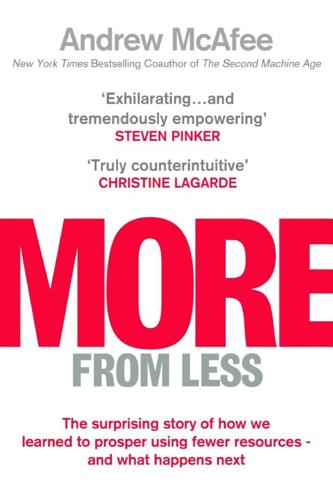
More From Less: The Surprising Story of How We Learned to Prosper Using Fewer Resources – and What Happens Next
by
Andrew McAfee
Published 30 Sep 2019
But as the number of both building blocks and innovators increases, we should have confidence that more breakthroughs such as fracking and smartphones are ahead. Innovation is highly decentralized and largely uncoordinated, occurring as the result of interactions among complex and interlocking social, technological, and economic systems. So it’s going to keep surprising us. As the Second Machine Age progresses, dematerialization accelerates. Erik and I coined the phrase Second Machine Age to draw a contrast with the Industrial Era, which as we’ve seen transformed the planet by allowing us to overcome the limitations of muscle power. Our current time of great progress with all things related to computing is allowing us to overcome the limitations of our mental power and is transformative in a different way: it’s allowing us to reverse the Industrial Era’s bad habit of taking more and more from the earth every year.
…
Seebohm, 24 Royal Crown Cola, 101 Russia, 185 Safe Drinking Water Act (1974), 66 Salemi, Jason, 216 Salesforce, 256–57 Samasource, 255–56 sanitation, 22–23, 194 Saudi Arabia, 104 Save the Elephants, 154 Schmidt, Christian, 148 Schnakenberg, Keith, 175 Schumpeter, Joseph, 122 Scientific American, 59–60 Scotland, 38 Scramble for Africa, 39 sea otters, 43, 96, 152 Second Enlightenment, 123, 141, 238–39, 265 Second Machine Age, 112–13, 114–15, 122–23, 141, 162, 168, 177, 200, 206, 213, 231 Second Machine Age, The (Brynjolfsson), 112 self-employment, 138–39 self-healing cities, 21–23 self-interest, 127 Sen, Amartya, 68–69, 94 service industry, 88, 200–201 Shapiro, David, 190 Shell Oil, 103, 104–05 Shellenberger, Michael, 251 Sherman, Brad, 107 Sheskin, Mark, 210 Short Account of the Destruction of the Indies (las Casas), 39–40 Sidgwick, Henry, 142n silver, 120 Simon, Julian, 69–70, 71–72, 75, 151, 179, 244–45 Singapore, 148 Singh, Manmohan, 171–72 Skeptical Environmentalist (Lomborg), 179, 181 slash-and-burn agriculture, 148 slavery, 35, 36, 37–38, 181 Sloman, Steven, 226 smartphones, 102, 111, 113, 168–69, 205, 235, 236 Smil, Vaclav, 31, 101 Smith, Adam, 125–39, 128–29 Smith, Noah, 191 smog, 42, 55, 186 Snow, John, 22–23 social capital, 212–13, 216–17, 228–29, 247, 254, 255, 270 social democracy, 133–34 social development, 24–25, 26 social development index, 60n social safety nets, 131–32 socialism, 132–38, 192 sodium nitrate, 17 solar power, 111, 240, 250, 269 Song, Jian, 93 Sørlle, Petter, 47 Soros, George, 132 South Korea, 117–18, 174 Soviet Union, 133, 163–64, 170–71 “Spaceship Earth”, 64–65 Staggers Act (1980), 109 Starmans, Christina, 210 steam engine, 16, 17, 27, 30, 36, 44, 48–49, 205, 206, 237 steamships, 17–18, 26 steel, 80 Steller, Georg Wilhelm, 273 Steller’s sea cow, 273 Stenner, Karen, 217 Sterba, Jim, 43–44 Stigler, George, 126 Strangers in Their Own Land (Hochschild), 221 Suicide (Durkheim), 215–16, 219 sulfur dioxide, 54–55, 95, 186, 249 Sullivan, Andrew, 219 Summers, Larry, 254 sustainability, 64 taxation, 5, 130, 250 tech progress, 2–3, 4, 36, 67, 99–123, 113, 141, 151, 158–59, 167–68, 169–70 defining of, 114–15 Tesla, Nikola, 27 Texas, Hill Country of, 29, 205 Thatcher, Margaret, 132, 138 Theory of Moral Sentiments (Smith), 129 Thomas, Chris, 182–83 3-D printing, 239 tin, 72 tin cans, 101 Tocqueville, Alexis de, 89–90, 212–13 Toxic Substances Control Act (1976), 66 tragedy of the commons, 183 transportation, 241–42 Trump, Donald, 158, 201 trust, 212, 213, 217 Truth About Soviet Whaling, The (Berzin), 164 Ulam, Stanislaw, 19n Ultimate Resource, The (Simon), 69, 179 unfairness, 210, 220–24 Union Oil, 54 United Airlines, 257 United Kingdom, 76, 85 United Nations, 40, 58, 199 United States, 117–18 agriculture in, 81–82, 100 coal consumption in, 102–03 cropland acreage in, 201–02 dematerialization in, 76–85 industrial production in, 88–89 mortality rates in, 213–14 slavery in, 37–38 suicide rate in, 214–16 water pollution in, 189–90 urbanization, 91–92, 199–200 Utopia or Oblivion (Fuller), 70 vaccination, 227 Van Reenen, John, 203, 204, 207 Varian, Hal, 236 Veblen goods, 152–53 Veblen, Thorstein, 152 Venezuela, 118, 134–38, 172 voluntary exchange, 117 wages, 20–21 Waggoner, Paul, 76 Wagner, Stephan, 148 Wald, George, 61 water, drinking, 194 water pollution, 189–90 Watt, James, 15–16, 20, 121, 206, 237 Watt, Kenneth, 58 Wealth of Nations (Smith), 127, 131 Weeks-McLean Law Act (1913), 96 Welzel, Christian, 176, 177 Wernick, Iddo, 76 whales, 44, 46–47, 163–65 wheat, 31–32 Wheelwright, William, 17–18 Whole Earth Catalog, 68 Why Nations Fail (Acemoglu and Robinson), 159 Wilson, James, 19n wind power, 111, 240, 250 Winship, Scott, 215 Wolff, Edward, 206 Woodbury, N.J., 65 wooly mammoth, 180 World Bank, 118, 168, 169, 192 World Values Survey, 176 Yao Ming, 154, 161 Yellowstone National Park, 46, 153 YouTube, 236 Zoorob, Michael, 216 First published in the United States by Scribner, an imprint of Simon & Schuster, Inc., 2019 First published in Great Britain by Simon & Schuster UK, Ltd, 2019 A CBS COMPANY Copyright © 2019 by Andrew McAfee The right of Andrew McAfee to be identified as the author of this work has been asserted in accordance with the Copyright, Designs and Patents Act, 1988.
…
Yet several months later the cover of Forbes was still asking if anyone could catch Nokia. Innovation is not steady and predictable like the orbit of the Moon or the accumulation of interest on a certificate of deposit. It’s instead inherently jumpy, uneven, and random. It’s also combinatorial, as Erik Brynjolfsson and I discussed in our book The Second Machine Age. Most new technologies and other innovations, we argued, are combinations or recombinations of preexisting elements. The iPhone was “just” a cellular telephone plus a bunch of sensors plus a touch screen plus an operating system and population of programs, or apps. All these elements had been around for a while before 2007.

Machine, Platform, Crowd: Harnessing Our Digital Future
by
Andrew McAfee
and
Erik Brynjolfsson
Published 26 Jun 2017
We documented fast technological progress and discussed some of its economic consequences in our previous book The Second Machine Age: Work, Progress, and Prosperity in a Time of Brilliant Technologies. Since its publication, one of the most common questions we’ve been asked about it is, When did this age start? It’s a great question, and a surprisingly difficult one to answer. We’ve had digital computers for well over half a century, after all, yet just about all of the advances we described in our earlier book were quite recent. So when did this important new, second machine age start? We’ve arrived at a two-phase answer to this question. Phase one of the second machine age describes a time when digital technologies demonstrably had an impact on the business world by taking over large amounts of routine work—tasks like processing payroll, welding car body parts together, and sending invoices to customers.
…
By the mid-1990s, that was no longer true; productivity started to grow much faster, and a large amount of research (some of it conducted by Erik‡‡ and his colleagues) revealed that computers and other digital technologies were a main reason why. So, we can date the start of phase one of the second machine age to the middle of the 1990s. Phase two, which we believe we’re in now, has a start date that’s harder to pin down. It’s the time when science fiction technologies—the stuff of movies, books, and the controlled environments of elite research labs—started to appear in the real world. In 2010, Google unexpectedly announced that a fleet of completely autonomous cars had been driving on US roads without mishap.
…
As we’ll see, so did many other breakthroughs. They are not flukes or random blips in technological progress. Instead, they are harbingers of a more fundamental transformation in the economy—a transformation that’s rooted in both significant technological advances and sound economic principles. Phase two of the second machine age differs markedly from phase one. First, it’s a time when technologies are demonstrating that they can do work that we’ve never thought of as preprogrammed or “routine.” They’re winning at Go, diagnosing disease accurately, interacting naturally with people, and engaging in creative work like composing music and designing useful objects.

Automation and the Future of Work
by
Aaron Benanav
Published 3 Nov 2020
Routine intellectual activities, even highly skilled ones, are apparently proving easier to automate than nonroutine manual jobs, which require more dexterity than machines presently possess. Erik Brynjolfsson and Andrew McAfee, The Second Machine Age: Work, Progress, and Prosperity in a Time of Brilliant Technologies, W.W. Norton, 2014, pp. 28–9. 3 Eve Batey, “Is SF Facing a Robot Food Apocalypse?,” Eater San Francisco, January 8, 2020. See also Tim Carman, “This Automated Restaurant Was Supposed to Be the Future of Dining. Until Humanity Struck Back,” Washington Post, October 24, 2017. 4 See, for example, Brynjolfsson and McAfee, Second Machine Age, pp. 30–1; Martin Ford, Rise of the Robots: Technology and the Threat of a Jobless Future, Basic Books, 2015, pp. 1–12. 5 David Autor, “Why Are There Still So Many Jobs?
…
Third, although automation should entail humanity’s collective liberation from toil, we live in a society where most people must work in order to live, meaning this dream may well turn out to be a nightmare.4 Fourth, therefore, the only way to prevent a mass-unemployment catastrophe—like the one unfolding in the United States in 2020, although for very different reasons—is to institute a universal basic income (UBI), breaking the connection between the size of the incomes people earn and the amount of work they do. The Machines Are Coming Self-described futurists are the major disseminators of this automation discourse. In the widely read Second Machine Age, Erik Brynjolfsson and Andrew McAfee argue that we find ourselves “at an inflection point—a bend in the curve where many technologies that used to be found only in science fiction are becoming everyday reality.” New technologies promise an enormous “bounty,” but, Brynjolfsson and McAfee caution, “there is no economic law that says that all workers, or even a majority of workers, will benefit from these advances.”
…
Extrapolating from particular instances of automation-induced job loss, theorists claim to have discovered a general phenomenon: in the coming decades, full automation will supposedly lead to “full unemployment.” Like “whale oil” and “horse labor,” Erik Brynjolfsson and Andrew McAfee suggest in The Second Machine Age, human exertion may soon find itself “no longer needed in today’s economy even at zero price.”1 Were full automation upon us, the resulting jobs apocalypse would quickly demonstrate that social life had to be reorganized so that waged work was no longer at its center.2 The past two chapters cast doubt on this prediction, yet like the automation theorists, I too have argued that the world economy is beset by labor underdemand.

In Our Own Image: Savior or Destroyer? The History and Future of Artificial Intelligence
by
George Zarkadakis
Published 7 Mar 2016
Like Watt’s steam engine, which heralded the start of the ‘first machine age’ of the Industrial Revolution in the late eighteenth century, modern computers are currently ushering in the ‘second machine age’12 through the digital transformation of our economy and societies. They do so because they are general-purpose machines that can run any program. Babbage’s intellectual leap from the Difference Engine to the Analytical Engine was the moment when the seeds of the second machine age were conceived. It was also a moment that the ghost of Descartes must have delighted in, for dualism had found its way into computing. As algorithms became programs, mathematics was also transformed.
…
Using a Digitisation Index that ranks countries on a scale from zero to one hundred, the consultants Booz & Company found that an increase of 10 per cent in a country’s digitisation score fuels a 0.75 per cent growth in its GDP per capita. That same 10 per cent boost in digitisation leads to a 1.02 per cent drop in a state’s unemployment rate. Governments and private investors are elbowing for a place on the bandwagon of the ‘second machine age’. Meanwhile corporate behemoths such as Apple, Google, Amazon and Facebook yield extraordinary economic power. Some would say their power goes beyond the economic: with unhindered access to our personal data, including information about our tastes, habits, vices, consumer spend and friends, these companies can potentially control not only what we buy, but also what we do and how we think.
…
We are nowadays the denizens of a digital noosphere: creators, consumers and manipulators of vast amounts of digital data. The deluge of big data that comes from the digitisation of almost everything, and the value for businesses and governments that these data encapsulate, are taking the world economy into a new era increasingly called ‘the second machine age’.1 The ‘first age’ occurred when the invention of the steam engine multiplied humanity’s capacity for manual labour. In the ‘second age’ the computer multiplies our capacity for mental labour. As computers increasingly become more ‘intelligent’, they are bound to transcend their current number-crunching duties and take over jobs traditionally associated with human, white-collar workers.

The Sharing Economy: The End of Employment and the Rise of Crowd-Based Capitalism
by
Arun Sundararajan
Published 12 May 2016
As McAfee and Brynjolfsson explain, “We mean simply that the key building blocks are already in place for digital technologies to be as important and transformational to society as the steam engine. In short, we’re at an inflection point—a point where the curve starts to bend a lot—because of computers. We are entering a second machine age.”16 Before writing The Second Machine Age, Brynjolfsson and McAfee wrote a shorter book with the same theme, Race Against the Machine. As their thinking evolved from the first book to the second, the authors became decidedly more optimistic about this second machine age. “We’re heading into an era,” they contend, “that won’t just be different; it will be better, because we’ll be able to increase both the variety and the volume of our consumption.”
…
A November 2015 McKinsey and Company study indicates that “as many as 45 percent of the activities individuals are paid to perform can be automated by adapting currently demonstrated technologies.”14 Looking deeper into the future of work, Erik Brynjolfsson and Andrew McAfee in The Second Machine Age argue that although computers have been transforming work, economics, and everyday life for several decades, we have finally reached a pivotal moment—a moment when we are grappling with the “full force” of digital technologies. The Second Machine Age builds on a book by the economists Frank Levy and Richard Murnane about the human–computer tradeoff in the labor market.15 Levy and Murnane examine, in detail, what tasks computers perform better than humans, and what tasks humans perform better than computers.
…
TaskRabbit and Thumbtack provides plumbers, event planners, and electricians. The platforms Pager and Heal get you a doctor on demand. Universal Avenue offers a sales force on demand, and HourlyNerd gets you a consultant with an MBA. And what if offshoring, as Erik Brynjolfsson and Andrew McAfee suggest, is only a way station on the road to automation? The Second Machine Age Like offshoring, automation is by no means new. The quest to automate simple human tasks has occupied scientists and engineers for centuries. By the late 19th century, machines were being used to automate the tabulation of data gathered in the US national census. By the 1920s, automated switchboards controlled many of the incoming and outgoing calls at Bell Telephone.
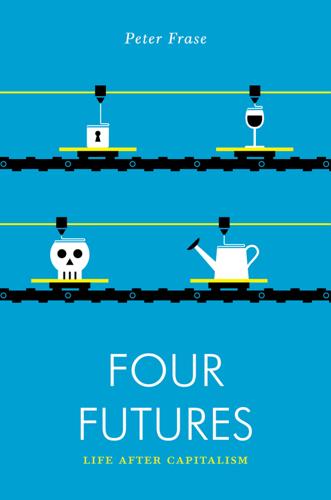
Four Futures: Life After Capitalism
by
Peter Frase
Published 10 Mar 2015
Stocker et al., “Climate Change 2013: The Physical Science Basis,” Intergovernmental Panel on Climate Change, Working Group I Contribution to the Fifth Assessment Report of the Intergovernmental Panel on Climate Change, New York: Cambridge University Press, 2013. 3Erik Brynjolfsson and Andrew McAfee, The Second Machine Age: Work, Progress, and Prosperity in a Time of Brilliant Technologies, New York: W. W. Norton, 2014. 4Carl Benedikt Frey and Michael A. Osborne, “The Future of Employment: How Susceptible Are Jobs to Computerisation?,” OxfordMartin.ox.ac.uk, 2013. 5Kevin Drum, “Welcome, Robot Overlords. Please Don’t Fire Us?,” Mother Jones, May/June 2013. 6Brynjolfsson and McAfee, The Second Machine Age, pp. 7–8. 7Frey and Osborne, “The Future of Employment.” 8Martin Ford, Rise of the Robots: Technology and the Threat of a Jobless Future, New York: Basic Books, 2015. 9Katie Drummond, “Clothes Will Sew Themselves in Darpa’s Sweat-Free Sweatshops,” Wired.com, June 6, 2012. 10Leanna Garfield, “These Warehouse Robots Can Boost Productivity by 800%,” TechInsider.io, February 26, 2016. 11Ilan Brat, “Robots Step into New Planting, Harvesting Roles,” Wall Street Journal, April 23, 2015. 12Shulamith Firestone, The Dialectic of Sex: The Case for Feminist Revolution, New York: Farrar, Straus and Giroux, 1970. 13Soraya Chemaly, “What Do Artificial Wombs Mean for Women?”
…
The Intergovernmental Panel on Climate Change predicts diminishing sea ice, acidification of the oceans, and increasing frequency of droughts and extreme storm events.2 At the same time, news of technological breakthroughs in the context of high unemployment and stagnant wages has produced anxious warnings about the effects of automation on the future of work. In early 2014, Massachusetts Institute of Technology professors Erik Brynjolfsson and Andrew McAfee published The Second Machine Age: Work, Progress, and Prosperity in a Time of Brilliant Technologies.3 They surveyed a future in which computer and robotics technology replaces human labor not just in traditional domains such as agriculture and manufacturing, but also in sectors ranging from medicine and law to transportation.
…
The persistently weak post-recession labor market has produced a generalized background anxiety about job loss. Automation and computerization are beginning to reach into professional and creative industries that long seemed immune, threatening the jobs of the very journalists who cover these issues. And the pace of change at least seems, to many, to be faster than ever. The “second machine age” is a concept promoted by Brynjolfsson and McAfee. In their book of the same name, they argue that just as the first machine age—the Industrial Revolution—replaced human muscle with machine power, computerization is allowing us to greatly magnify, or even replace, “the ability to use our brains to understand and shape our environments.”6 In that book and its predecessor, Race Against the Machine, Brynjolfsson and McAfee argue that computers and robots are rapidly permeating every part of the economy, displacing labor from high- and low-skill functions alike.
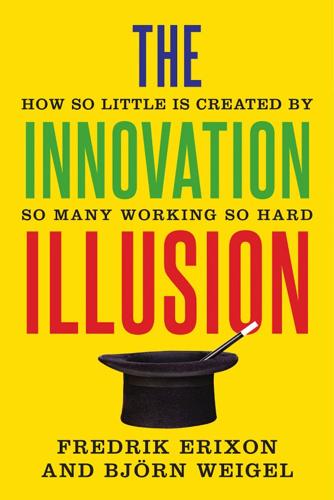
The Innovation Illusion: How So Little Is Created by So Many Working So Hard
by
Fredrik Erixon
and
Bjorn Weigel
Published 3 Oct 2016
31.Gordon, “The Demise of US Economic Growth,” figs 9 and 10. 32.Haltiwanger, Hathaway, and Miranda, “Declining Business Dynamism in the US High-Technology Sector,” 9. 33.Hatzius and Dawsey, “Doing the Sums on Productivity Paradox v2.0.” 34.Fernald and Wang, “Why Has the Cyclicality of Productivity Changed?” 35.Brynjolfsson and McAfee, The Second Machine Age, 105. 36.Brynjolfsson and McAfee, The Second Machine Age, 105. 37.Fernald, “Productivity and Potential Output.” 38.Fernald and Wang, “The Recent Rise and Fall of Rapid Productivity Growth.” 39.Frey and Osborne, “Technology at Work,” 62. 40.Summers, “Making Sense of the Productivity Slowdown,” 5. 41.Cardarelli and Lusinyan, “US Total Factor Productivity Slowdown.” 42.Syversen, “Challenges to Mismeasurement Explanations.” 43.Syversen, “Challenges to Mismeasurement Explanations.” 44.Copeland, “Seasonality, Consumer Heterogeneity and Price Indexes.” 45.The data reference is from the US Bureau of Economic Analysis’s chained price index for IT software. 46.Nakamura and Soloveichik.
…
In reality the cyclical effects on total factor productivity have substantially weakened over time to become acyclical, and labor productivity has been countercyclical – going up in recessions.34 Technology optimists like Brynjolfsson and McAfee would disagree. In their otherwise important book The Second Machine Age, they claim that “part of the recent slowdown simply reflects the Great Recession and its aftermath.”35 They argue that US productivity growth “in the decade following the year 2000 exceeded even the high growth rates of the roaring 1990s, which in turn was higher than 1970s or 1980s growth rates had been.”36 These propositions do not stand up to scrutiny.
…
While there is a postcrisis trend of unusually high profit margins in some countries, the long-term trend for the US, the UK, France, Italy, Belgium, and other advanced economies is stable, prone to mean reversion, and not exactly ammunition for the Marxian view of capital using and abusing labor.50 Even in Germany, where profit margins accelerated remarkably fast in the decade leading up to 2005, there has lately been a corrective return to the mean. However, the decoupling thesis, or variants thereof, has received serious support. Brookings’ William Galston, for instance, has argued that “the Great Decoupling of wages and benefits from productivity, the biggest economic story of the past 40 years, shows no sign of ending.”51 In The Second Machine Age, economists Erik Brynjolfsson and Andrew McAfee argue that median hourly wages only increased by 0.1 percent annually from 1973 to 2011 at the same time as productivity increased by 1.56 percent annually.52 In The Rise of the Robots, Martin Ford uses a similar observation to argue that productivity gains are not matched by workers’ gains in terms of jobs and pay.

Utopia for Realists: The Case for a Universal Basic Income, Open Borders, and a 15-Hour Workweek
by
Rutger Bregman
Published 13 Sep 2014
Stuffed to the gills with 200 million pages of information, including a complete copy of Wikipedia, Watson gave more correct responses than Jennings and Rutter put together. “‘Quiz show contestant’ may be the first job made redundant by Watson,” Jennings observed, “but I’m sure it won’t be the last.”22 The new generations of robots are proxies not only for our muscle power, but for our mental capacity, too. Welcome, my friends, to the Second Machine Age, as this brave new world of chips and algorithms is already being called. The first began with the Scottish inventor James Watt, who during a stroll in 1765 came up with an idea for improving the efficiency of the steam engine. It being a Sunday, the pious Watt had to wait another day before putting his idea into action, but by 1776, he’d built a machine able to pump 60 feet of water out of a mine in just 60 minutes.23 At a time when nearly everyone, everywhere was still poor, hungry, dirty, afraid, stupid, sick, and ugly – the line of technological development began to curve.
…
According to Wilde, the ancient Greeks had known an uncomfortable truth: Slavery is a prerequisite for civilization. “On mechanical slavery, on the slavery of the machine, the future of the world depends.” However, there’s something else that is equally vital to the future of our world, and that’s a mechanism for redistribution. We have to devise a system to ensure that everybody benefits from this Second Machine Age, a system that compensates the losers as well as the winners. For 200 years that system was the labor market, which ceaselessly churned out new jobs and, in so doing, distributed the fruits of progress. But for how much longer? What if the Luddites’ fears were premature, but ultimately prophetic?
…
“No, no, I will have nothing to do with it,” he declared, “lest the revolution might come into the country.”36 His resistance meant that far into the 19th century, Austrian trains continued to be drawn by horses. Anyone who wants to continue plucking the fruits of progress will have to come up with a more radical solution. Just as we adapted to the First Machine Age through a revolution in education and welfare, so the Second Machine Age calls for drastic measures. Measures like a shorter workweek and universal basic income. The Future of Capitalism For us today, it is still difficult to imagine a future society in which paid labor is not the be-all and end-all of our existence. But the inability to imagine a world in which things are different is only evidence of a poor imagination, not of the impossibility of change.
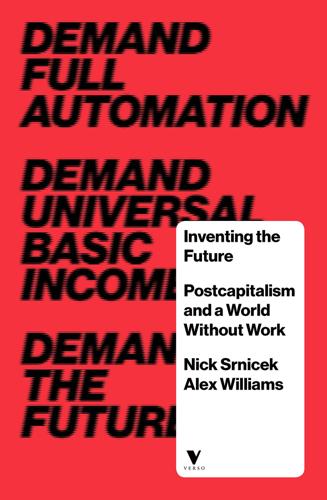
Inventing the Future: Postcapitalism and a World Without Work
by
Nick Srnicek
and
Alex Williams
Published 1 Oct 2015
Eventually, with legal and insurance changes, consumers will be forced into adopting this technology. 28.Isaac Arnsdorf, ‘Rolls-Royce Drone Ships Challenge $375 Billion Industry: Freight’, Bloomberg, 25 February 2014, at bloomberg.com; BBC News, ‘Amazon Testing Drones for Deliveries’, BBC News, 2 December 2013; Danielle Kucera, ‘Amazon Acquires Kiva Systems in Second-Biggest Takeover’, Bloomberg, 19 March 2012, at bloomberg.com; Vicky Validakis, ‘Rio’s Driverless Trucks Move 100 Million Tonnes’, Mining Australia, 24 April 2013, at miningaustralia.com.au; Elise Hu, ‘The Fast-Food Restaurants that Require Few Human Workers’, NPR.org, 29 August 2013, at npr.org; Christopher Steiner, Automate This: How Algorithms Came to Rule Our World (New York: Portfolio/Penguin, 2012); Mark Levinson, The Box: How the Shipping Container Made the World Smaller and the World Economy Bigger (Princeton, NJ: Princeton University Press, 2008); Daniel Beunza, Donald MacKenzie, Yuval Millo and Juan Pablo Pardo-Guerra, Impersonal Efficiency and the Dangers of a Fully Automated Securities Exchange (London: Foresight, 2011). 29.For a slightly outdated but still useful summary of various automation processes, see Ramin Ramtin, Capitalism and Automation: Revolution in Technology and Capitalist Breakdown (London: Pluto, 1991), Chapter 4. 30.Erik Brynjolfsson and Andrew McAfee, The Second Machine Age: Work, Progress, and Prosperity in a Time of Brilliant Technologies (New York: W. W. Norton, 2014), Chapters 2–4. 31.Ibid., Chapter 1; Frey and Osborne, Future of Employment, p. 44. 32.Paul Lippe and Daniel Martin Katz, ‘10 Predictions About How IBM’s Watson Will Impact the Legal Profession’, ABA Journal, 2 October 2014, at abajournal.com. 33.Brynjolfsson and McAfee, Second Machine Age, Chapter 2. 34.Dave Cliff, Dan Brown and Philip Treleaven, Technology Trends in the Financial Markets: A 2020 Vision (London: Foresight, 2011), p. 36.
…
These are tasks that computers are perfectly suited to accomplish once a programmer has created the appropriate software, leading to a drastic reduction in the numbers of routine manual and cognitive jobs over the past four decades.22 The result has been a polarisation of the labour market, since many middle-wage, mid-skilled jobs are routine, and therefore subject to automation.23 Across both North America and Western Europe, the labour market is now characterised by a predominance of workers in low-skilled, low-wage manual and service jobs (for example, fast-food, retail, transport, hospitality and warehouse workers), along with a smaller number of workers in high-skilled, high-wage, non-routine cognitive jobs.24 The most recent wave of automation is poised to change this distribution of the labour market drastically, as it comes to encompass every aspect of the economy: data collection (radio-frequency identification, big data); new kinds of production (the flexible production of robots,25 additive manufacturing,26 automated fast food); services (AI customer assistance, care for the elderly); decision-making (computational models, software agents); financial allocation (algorithmic trading); and especially distribution (the logistics revolution, self-driving cars,27 drone container ships and automated warehouses).28 In every single function of the economy – from production to distribution to management to retail – we see large-scale tendencies towards automation.29 This latest wave of automation is predicated upon algorithmic enhancements (particularly in machine learning and deep learning), rapid developments in robotics and exponential growth in computing power (the source of big data) that are coalescing into a ‘second machine age’ that is transforming the range of tasks that machines can fulfil.30 It is creating an era that is historically unique in a number of ways. New pattern-recognition technologies are rendering both routine and non-routine tasks subject to automation: complex communication technologies are making computers better than humans at certain skilled-knowledge tasks, and advances in robotics are rapidly making technology better at a wide variety of manual-labour tasks.31 For instance, self-driving cars involve the automation of non-routine manual tasks, and non-routine cognitive tasks such as writing news stories or researching legal precedents are now being accomplished by robots.32 The scope of these developments means that everyone from stock analysts to construction workers to chefs to journalists is vulnerable to being replaced by machines.33 Workers who move symbols on a screen are as at risk as those moving goods around a warehouse.
…
The large number of relevant texts include: Ad Hoc Committee, ‘The Triple Revolution’, International Socialist Review 24: 3 (1964); Donald Michael, Cybernation: The Silent Conquest (Santa Barbara, CA: Center for the Study of Democratic Institutions, 1962); Paul Mattick, ‘The Economics of Cybernation’, New Politics 1: 4 (1962); David Noble, Progress Without People: In Defense of Luddism (Toronto: Between the Lines, 1995); Jeremy Rifkin, The End of Work: The Decline of the Global Labor Force and the Dawn of the Post-Market Era (New York: Putnam, 1997); Martin Ford, The Lights in the Tunnel: Automation, Accelerating Technology and the Economy of the Future (US: CreateSpace Independent Publishing Platform, 2009); Erik Brynjolfsson and Andrew McAfee, The Second Machine Age: Work, Progress, and Prosperity in a Time of Brilliant Technologies (New York: W. W. Norton, 2014). 16.These estimates are for the US and European labour markets, though similar numbers undoubtedly hold globally and, as we argue later, may even be worse in developing economies. Carl Benedikt Frey and Michael Osborne, The Future of Employment: How Susceptible Are Jobs to Computerisation?
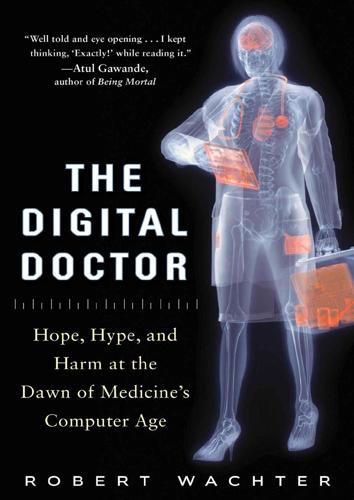
The Digital Doctor: Hope, Hype, and Harm at the Dawn of Medicine’s Computer Age
by
Robert Wachter
Published 7 Apr 2015
Emanuel, MD, PhD Vice Provost for Global Initiatives and Chair, Departments of Medical Ethics and Health Policy, University of Pennsylvania “In Bob Wachter, I recognize a fellow mindful optimist: someone who understands the immense power of digital technologies, yet also realizes just how hard it is to incorporate them into complicated, high-stakes environments full of people who don’t like being told what to do by a computer. Read this important book to see what changes are ahead in healthcare, and why they’re so necessary.” —Andrew McAfee cofounder of the MIT Initiative on the Digital Economy; coauthor of The Second Machine Age “One of the best books I’ve ever read. Wachter’s warm humor and deep insights kept me turning the pages without interruption. To make our healthcare system work, we need new models of care and new ways of managing our technology. The Digital Doctor brings us much closer to making this happen, which is why I finished the book far more optimistic than I was when I began it.
…
Soon after the well-publicized trouncing, IBM announced that one of its first “use cases” for Watson would be medicine. Sean Hogan, vice president for IBM Healthcare, told me that “healthcare jumped out as an area whose complexity and nuances would be receptive to what Watson was representing.” Andy McAfee, coauthor with Erik Brynjolfsson of the terrific book The Second Machine Age, agrees with Khosla that computers will ultimately take over much of what physicians do, including diagnosis. “I can’t see how that doesn’t happen,” McAfee, a self-described “technology optimist,” told me when we met for lunch near his MIT office. McAfee and Brynjolfsson argue that the confluence of staggering growth in computing power, zetabytes of fully networked information available on the Web, and the “combinatorial power” of innovation mean that areas that seemed like dead ends, such as artificial intelligence in medicine, are now within reach.
…
While specific technologies—a new jet engine, say, or a solar panel—can improve productivity, since the Industrial Revolution the technologies associated with the greatest productivity bumps have been so-called general-purpose technologies—technologies that transformed multiple industries and laid the groundwork for many new applications. The best-known examples are the steam engine and electricity, and so it’s fair to say that such technologies don’t come around very often, perhaps every 50 to 100 years. Information technology falls into the same category—in fact, in The Second Machine Age, Erik Brynjolfsson and Andrew McAfee call IT “the most general purpose of all.” Given the power and range of information technology, one would think that its implementation would rapidly and predictably lead to a sharp uptick in productivity. Yet, in the 1980s, economists began to notice something strange.
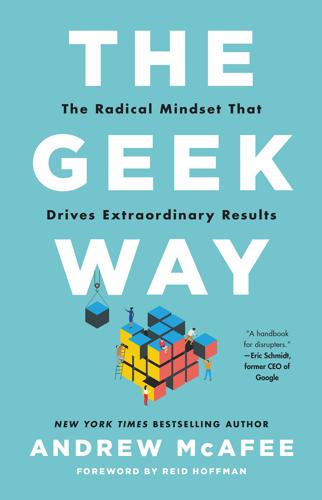
The Geek Way: The Radical Mindset That Drives Extraordinary Results
by
Andrew McAfee
Published 14 Nov 2023
I started collaborating with economist Erik Brynjolfsson, a great scholar of technology and information.2 We shared a sense that something big was unfolding right in front of us—something as big as the Industrial Revolution. As we wrote in our 2014 book, The Second Machine Age, “The Industrial Revolution… allowed us to overcome the limitations of muscle power, human and animal, and generate massive amounts of useful energy at will… Now comes the second machine age. Computers and other digital advances are doing for mental power—the ability to use our brains to understand and shape our environments—what the steam engine and its descendants did for muscle power.
…
The Right Word Erik and I also published two other books about digital transformation: Race Against the Machine (2011) and Machine | Platform | Crowd (2017). We were writing about the right topic at the right time, and our “machine trilogy” found a receptive audience. The Economist named The Second Machine Age “the most influential recent business book,” and the Financial Times called me and Erik “the pinup boys of the Davos crowd.” That kind of attention didn’t cause my modeling career to take off, but it did lead to a lot of offers to talk with leaders all over the world about the tectonic shifts taking place in industries, economies, and societies.
…
So did household names like Kodak (1881), JCPenney (1902), Radio Shack (1921), and Polaroid (1937). General Electric was one of the companies included when the Dow Jones Industrial Average was first calculated in 1896. In 2018 GE was delisted from the Dow because of its stock’s poor performance. As we moved deeper into the second machine age, entire industries collapsed. US newspaper advertising revenues declined by two-thirds between 2000 and 2015, erasing a full half century of growth. Magazines didn’t fare much better; their ad revenue dropped by 40 percent between 2008 and 2018. The growing popularity of music streaming services hasn’t come close to offsetting the near elimination of CDs and other physical media; revenues from recorded music fell by more 46 percent between 1999 and 2021.

The Economic Singularity: Artificial Intelligence and the Death of Capitalism
by
Calum Chace
Published 17 Jul 2016
Andrew McAfee and Erik Brynjolfsson As a pair of MIT professors[xxxiv], McAfee and Brynjolfsson bring academic credibility to their book on AI automation, “The Second Machine Age”. They have helped to validate the discussion of the possibility of technological unemployment. Their book (and their argument) is in three parts. The first part (chapters 1 to 6 inclusive) describes the characteristics of what they call the second machine age. They warn readers that their recitation of recent and forthcoming developments may seem like science fiction, and their prose is sometimes slightly breathless: even tenured professors can get excited about the speed of technological change and the wonders it produces.
…
“Spread” seems to be a synonym for inequality, although the authors are strangely reluctant to use that word.[xxxv] It is “ever-bigger differences among people in economic success”. This part of the book could have been written by a member of the Occupy movement[xxxvi]. “Spread is a troubling development for many reasons, and one that will accelerate in the second machine age unless we intervene.” Brynjolfsson and McAfee pose the question whether bounty will overcome the spread. In other words, will we create an economy of radical abundance, in which inequality is relatively unimportant because even though a minority is extraordinarily wealthy, everyone else is comfortably off?
…
Jerry Kaplan Serial entrepreneur Jerry Kaplan co-founded GO Corporation, which was a precursor to smartphones and tablets, and was sold to AT&T. He also co-founded OnSale, an internet auction site which pre-dated Ebay, and was sold for $400m. He teaches at his alma mater, Stanford University, and writes books, including one called “Humans Need Not Apply”. Its message is similar to “The Second Machine Age”: AI has reached a tipping point and is becoming powerfully effective. This will disrupt most walks of life (the computer, he observes, is blind to the colour of your collar), and unless we manage the transition well, the resulting economic instability and growing inequality could be damaging.

Rebel Ideas: The Power of Diverse Thinking
by
Matthew Syed
Published 9 Sep 2019
See also Jon Krakauer, Into Thin Air. 4: Innovation 1 Ian Morris, Why the West Rules – For Now: The Patterns of History and What They Reveal About the Future (Profile, 2011). 2 Erik Brynjolfsson and Andrew McAfee, The Second Machine Age: Work, Progress, and Prosperity in a Time of Brilliant Technologies (W. W. Norton, 2014). 3 Brynjolfsson and McAfee, The Second Machine Age. 4 Andrew McAfee and Erik Brynjolfsson, Machine, Platform, Crowd: Harnessing Our Digital Future (W. W. Norton, 2017). 5 Shaw Livermore, ‘The Success of Industrial Mergers’, Quarterly Journal of Economics, Vol. 50, Issue 1, November 1935, pp. 68–96. 6 https://www.researchgate.net/publication/24092915_The_Decline_of_Dominant_Firms_1905–1929 7 https://abcnews.go.com/Travel/suitcase-wheels-turns-40-radical-idea-now-travel/story?
…
id=11779469 8 McAfee and Brynjolfsson, Machine, Platform, Crowd. 9 Matt Ridley, The Rational Optimist: How Prosperity Evolves (4th Estate, 2010). 10 https://insight.kellogg.northwestern.edu/article/a_virtuous_mix_allows_innovation_to_thrive 11 https://insight.kellogg.northwestern.edu/article/a_virtuous_mix_allows_innovation_to_thrive 12 https://royalsocietypublishing.org/doi/full/10.1098/rsif.2015.0272 13 Scott E. Page, The Diversity Bonus. 14 See Brynjolfsson and McAfee, The Second Machine Age. 15 Brynjolfsson and McAfee, The Second Machine Age. 16 http://startupsusa.org/fortune500/ 17 https://pubs.aeaweb.org/doi/pdfplus/10.1257/jep.30.4.83 18 https://www.kauffman.org/what-we-do/resources/entrepreneurship-policy-digest/the-economic-case-for-welcoming-immigrant-entrepreneurs 19 https://www.hbs.edu/faculty/Publication%20Files/17-011_da2c1cf4-a999-4159-ab95-457c783e3fff.pdf 20 https://www.kauffman.org/~/media/kauffman_org/resources/2015/entrepreneurship%20policy%20digest/september%202015/the_economic_case_for_welcoming_immigrant_entrepreneurs_updated_september_2015.pdf 21 McAfee and Brynjolfsson, Machine, Platform, Crowd. 22 See also Erik Dane ‘Reconsidering the Trade-off Between Expertise and Flexibility’, Academy of Management Review, Vol. 35, No. 4, pp. 579–603. 23 https://www.sciencedirect.com/science/article/pii/S0883902616300052 24 https://www.apa.org/pubs/journals/releases/psp9651047.pdf 25 https://www.squawkpoint.com/wp-content/uploads/2017/01/Identification-of-scientists-making-long%E2%80%90term-high%E2%80%90impact-contributions-with-notes-on-their-methods-of-working.pdf 26 https://www.psychologytoday.com/files/attachments/1035/arts-foster-scientific-success.pdf 27 https://www.forbes.com/sites/catherinewines/2018/09/07/why-immigrants-are-natural-entrepreneurs/ 28 https://blog.aboutamazon.co.uk/company-news/2018-letter-to-shareholders 29 https://www.weforum.org/agenda/2016/11/introducing-a-new-competition-to-crowdsource-a-more-inclusive-economy/ 30 Matt Ridley, The Rational Optimist. 31 See Steven Johnson, Where Good Ideas Come From: The Seven Patterns of Innovation (Allen Lane, 2010). 32 Randall Collins, The Sociology of Philosophies: A Global Theory of Intellectual Change (Belknap Press, 1998). 33 Randall Collins, The Sociology of Philosophies. 34 https://royalsocietypublishing.org/doi/full/10.1098/rstb.2015.0192 35 Steven Johnson, Where Good Ideas Come From. 36 https://royalsocietypublishing.org/doi/full/10.1098/rspb.2010.0452 37 Joseph Henrich, The Secret of Our Success. 38 Joseph Henrich, The Secret of Our Success. 39 Joseph Henrich and Michael Muthukrishna argue that differences in individual IQ are an emergent property of the collective brain.
…
Cappella, Friend and Foe by Adam Galinsky and Maurice Schweitzer, Invisible Women by Caroline Criado Perez, The Blunders of Our Governments by Anthony King and Ivor Crewe, Der Spiegel, Inside 9/11, Infotopia by Cass R. Sunstein, The Righteous Mind by Jonathan Haidt, What Works by Iris Bohnet, Give and Take by Adam Grant, Principles by Ray Dalio, The Origins of Political Order by Francis Fukuyama, The Rational Optimist by Matt Ridley, Wiser by Cass Sunstein and Reid Hastie, The Second Machine Age by Erik Brynjolfsson and Andrew McAfee, Imagine by Jonah Lehrer, Creative Conspiracy by Leigh Thompson, Darwin’s Unfinished Symphony by Kevin N. Laland, Superforecasting by Philip Tetlock and Dan Gardner, Social Physics by Alex Pentland, Scale by Geoffrey West, Hit Refresh by Satya Nadella, The Geography of Thought by Richard E.

The Patient Will See You Now: The Future of Medicine Is in Your Hands
by
Eric Topol
Published 6 Jan 2015
Sifferlin, “The Doctor Will Skype You Now,” TIME, January 13, 2014, http://content.time.com/time/subscriber/printout/0,8816,2161682,00.html. 41. K. Bourzac, “The Computer Will See You Now,” Nature 502 (2013): 592–594. 42. “The Robots Are Coming. How Many of Us Will Prosper from the Second Machine Age?,” Raw Story, January 4, 2014, http://www.rawstory.com/rs/2014/01/04/the-robots-are-coming-how-many-of-us-will-prosper-from-the-second-machine-age/. 43. J. Marte, “The Doctor Visit of the Future May Be a Phone Call,” Market Watch, March 3, 2014, http://www.marketwatch.com/story/the-doctor-will-facetime-you-now-2014-03-03/print?guid=D2E3D006-A2D6-11E3-BC16-00212803FAD6. 44.
…
—GREG WASSON, CEO OF WALGREENS “Eric Topol understands better than anybody else the growing battle between technology-and information-empowered patients on one side, and the incumbent medical establishment on the other. He also understands who should win it. Read this book and you’ll join him in fighting the good fight.” —ANDREW MCAFEE, AUTHOR OF The Second Machine Age “In this extraordinary book, Topol has, in effect, provided us with a prescription for the future of medicine. He outlines the challenges of the current practice of medicine, and gives us a powerful vision of what can be changed—and how. Topol writes about the future more effectively than any physician or scientist that I know.
…
With more information at their fingertips, patients can truly be in the driving seat.”96 As we reviewed in Chapter 7, we will get away from keyboards in the office, also known as “death by a thousand clicks,” and replace them with computer processing of natural language into notes.98–100 This sort of data, combined with a machine-learning powered app to turn spoken words into notes, will truly revolutionize the doctor’s visit of the future—assuming, of course, that we need the routine visits at all. Doctors Disintermediated? We’ve already seen some examples of how physicians react to the threat of being marginalized, along with their general reluctance to adapt to new technology. Now we get into the “Second Machine Age”101 question as to whether the new digital landscape will reboot the need for doctors and health professionals. Kevin Kelly, a cofounder of Wired, has asserted: “The role tasks of any information-intensive job can be automated. It doesn’t matter if you are a doctor, lawyer, architect, reporter, or even programmer: The robot takeover will be epic.”102 An emergency medicine physician likened the current practice of medicine to a Radio Shack store in his piece “Doctor Dinosaur: Physicians may not be exempt from extinction.”103 In late 2013, Korean doctors threatened to go on an all-out strike if the government went ahead with new telemedicine laws that would support clinical diagnoses to be made remotely.
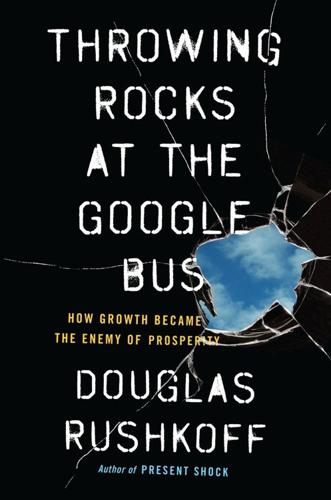
Throwing Rocks at the Google Bus: How Growth Became the Enemy of Prosperity
by
Douglas Rushkoff
Published 1 Mar 2016
Yet we continue to optimize our businesses and our economy for growth, even as we transition toward an entirely different technological and social landscape—one with very different potentials. This is why the leading voices today are those that still treat the emerging digital economy as Industrialism 2.0 or, as Massachusetts Institute of Technology professors Erik Brynjolfsson and Andrew McAfee put it in the title of their respected business book, The Second Machine Age. It’s no wonder such ideas captivate the business community: for all their revolutionary bravado they are actually promising business as usual. Workers will continue to be displaced by automation, corporations will remain the major players in the economic landscape, and it’s up to people to keep up with the pace of technological change if they want to survive.
…
Amazon replaces thousands of brick-and-mortar stores, as well as all the industries that supported them—from window dressers to shelving manufacturers to the eateries where the shoppers lunched. Airbnb destroys far more jobs, income, and health insurance plans than it creates. Instead of rethinking the innovations of the industrial age, we extended them into that “second machine age” envisioned by the MIT economists. Rather than transcending industrialism’s antihuman values, we digitized them. Some of these examples will be elucidated in the coming chapters, but what should already be clear is that the financial and marketing innovations we associate with the digital age are less disruptions than extensions of established business practices—new ways of exercising the same old corporatism.
…
Instead of simply amplifying the most dehumanizing and extractive qualities of industrialism, it pushes ahead to something different—while also retrieving the truly free-market principles long obsolesced by corporatism. RENAISSANCE NOW? The digital industrialists have it wrong. There will be no second machine age. Like any truly new medium, digital technology will amplify and retrieve different values than the technologies that came before it did. Individuals and businesses will succeed in different ways and by different means than they have been. This is good news: what was repressed by the industrial corporation can be retrieved and renewed by the distributed enterprise—while the excesses of the industrial era can themselves be repressed, or at least reduced, in a digital one.
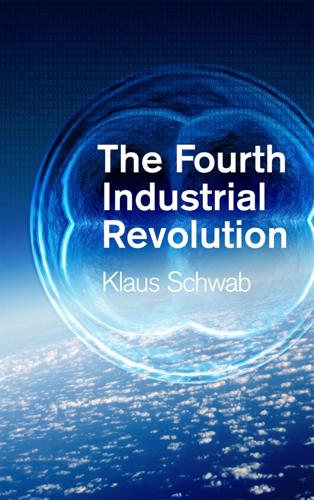
The Fourth Industrial Revolution
by
Klaus Schwab
Published 11 Jan 2016
Digital technologies that have computer hardware, software and networks at their core are not new, but in a break with the third industrial revolution, they are becoming more sophisticated and integrated and are, as a result, transforming societies and the global economy. This is the reason why Massachusetts Institute of Technology (MIT) Professors Erik Brynjolfsson and Andrew McAfee have famously referred to this period as “the second machine age”2, the title of their 2014 book, stating that the world is at an inflection point where the effect of these digital technologies will manifest with “full force” through automation and and the making of “unprecedented things”. In Germany, there are discussions about “Industry 4.0”, a term coined at the Hannover Fair in 2011 to describe how this will revolutionize the organization of global value chains.
…
Some designers and architects are already mixing computational design, additive manufacturing, materials engineering and synthetic biology to pioneer systems that involve the interaction among micro-organisms, our bodies, the products we consume, and even the buildings we inhabit. In doing so, they are making (and even “growing”) objects that are continuously mutable and adaptable (hallmarks of the plant and animal kingdoms).4 In The Second Machine Age, Brynjolfsson and McAfee argue that computers are so dexterous that it is virtually impossible to predict what applications they may be used for in just a few years. Artificial intelligence (AI) is all around us, from self-driving cars and drones to virtual assistants and translation software.
…
Christensen, Michael E. Raynor, and Rory McDonald, What is Disruptive Innovation?, Harvard Business Review, December 2015. While respecting the concerns of Professor Christensen and his colleagues about definitions, I have employed the broader meanings in this book. 2 Erik Brynjolfsson and Andrew McAfee, The Second Machine Age: Work, Progress, and Prosperity in a Time of Brilliant Technologies, W.W. Norton & Company, 2014. 3 James Manyika and Michael Chui, “Digital Era Brings Hyperscale Challenges”, The Financial Times, 13 August 2014. 4 The designer and architect Neri Oxman offers a fascinating example of what I just described.
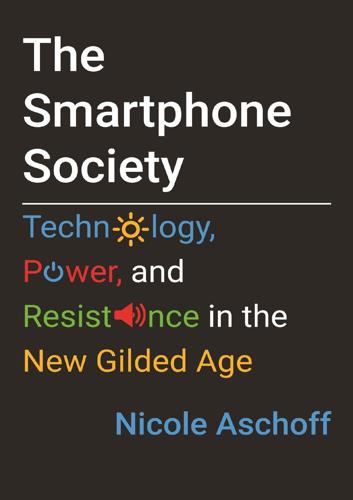
The Smartphone Society
by
Nicole Aschoff
Smartphones, which are “1 million times cheaper, 1000 times more powerful, and about 100,000 times smaller than one computer in MIT in 1965,” seem to exemplify this arrival.18 The explosive growth in connectivity at all scales over the past decade, in combination with advances in data collection and storage, computing power, and machine learning, have convinced many scholars that we’re on the precipice of something fundamentally different and new. Two MIT professors, Eric Brynjolfsson and Andrew McAfee, say we’ve reached the “second machine age.” Brynjolfsson and McAfee liken the impact of computers, big data, peer-to-peer networks, and other digital advances in our technological capabilities to the monumental societal impact of the steam engine and electricity: However, unlike the steam engine or electricity, second machine age technologies continue to improve at a remarkably rapid exponential pace, replicating their power with digital perfection and creating even more opportunities for combinatorial innovation. . . .
…
Bowles, “Clooneys to Attend a VIP Fundraiser for Clinton—and Sanders Fans Are Outraged.” 15. Weiss, The American Myth of Success, 9. 16. For a good critique of platforms, see Srnicek, Platform Capitalism. 17. Sundararajan, Sharing Economy, 124. 18. Moazed and Johnson, Modern Monopolies, 62. 19. Brynjolfsson and McAfee, The Second Machine Age, 106. 20. Anderson, “The End of Theory.” 21. Harris, “Inside the First Church of Artificial Intelligence.” 22. O’Gieblyn, “Ghost in the Cloud.” 23. Ullman, Life in Code, 295. 24. Losse, The Boy Kings, 201–2. 25. See John Perry Barlow, “A Declaration of the Independence of Cyberspace,” Electronic Frontier Foundation website, https://www.eff.org/cyberspace-independence. 26.
…
Labor and Monopoly Capital: The Degradation of Work in the Twentieth Century. New York: Monthly Review Press, 1998. Brooks, Rodney. “The Seven Deadly Sins of AI Prediction.” MIT Technology Review, October 6, 2017. Bruder, Jessica. Nomadland: Surviving America in the Twenty-First Century. New York: W. W. Norton, 2017. Brynjolfsson, Eric, and Andrew McAfee. The Second Machine Age: Work, Progress, and Prosperity in a Time of Brilliant Technologies. New York: W. W. Norton, 2014. Burgess, Jean, Alice Marwick, and Thomas Poell. SAGE Handbook of Social Media. Thousand Oaks, CA: Sage Publications, 2017. Burns, Janet. “House Passes Bill That Could Have Teens Facing 15 Years for Trying to Sext.”

Reinventing Capitalism in the Age of Big Data
by
Viktor Mayer-Schönberger
and
Thomas Ramge
Published 27 Feb 2018
forecast depressing employment figures: Erik Brynjolfsson and Andrew McAfee, The Second Machine Age: Work, Progress, and Prosperity in a Time of Brilliant Technologies (New York: W. W. Norton, 2016); Carl Benedikt Frey and Michael A. Osborne, The Future of Employment: How Susceptible Are Jobs to Computerisation? (Oxford, UK: Oxford Martin School, September 17, 2013), http://www.oxfordmartin.ox.ac.uk/downloads/academic/The_Future_of _Employment.pdf. advent of a “second machine age”: Brynjolfsson and McAfee, The Second Machine Age. “labor share” has declined considerably: Matthias Kehrig and Nicolas Vincent, “Growing Productivity Without Growing Wages: The Micro-Level Anatomy of the Aggregate Labor Share Decline,” CESifo Working Paper Series No. 6454, May 3, 2017, https://ssrn.com/abstract=2977787.
…
As manufacturing became more automated, the services sector grew. The question today is whether this will happen again. With a well-developed services sector that itself may face the challenge of increasing automation, what is there to employ the middle-class workers displaced in data-rich markets? Is this the advent of a “second machine age”—the neat phrase to describe the coming displacement through automation of white-collar jobs coined by MIT professors Erik Brynjolfsson and Andrew McAfee? It is likely, as we suggested in Chapter 6, that there will be less work for humans in the future; but no matter what happens to overall labor force participation, it is almost certain that the types of jobs available will be quite different from the jobs people hold today.

Pivot: The Only Move That Matters Is Your Next One
by
Jenny Blake
Published 14 Jul 2016
BE DISCERNING ABOUT YOUR LEARNING Even with the pace of change, all hope of strategically positioning yourself for success in our economy is not lost. Instead, focus your energy on how you spot skills that are needed, particularly those rooted in your existing strengths. In their book The Second Machine Age: Work, Progress, and Prosperity in a Time of Brilliant Technologies, authors Erik Brynjolfsson and Andrew McAfee make the point that the fundamental metrics of our economy have changed, saying, “More and more what we care about in the second machine age are ideas, not things . . . interactions, not transactions.” According to Brynjolfsson and McAfee, there are some guidelines to keep in mind regarding what skills and opportunities to pursue to complement technology, rather than compete against it.
…
These books provide in-depth coverage of areas where I just scratched the surface. I encourage you to dig deeper into anything that grabbed you. For the full reading list, visit PivotMethod.com/toolkit. Introduction A Whole New Mind by Daniel H. Pink Antifragile by Nassim Nicholas Taleb The Second Machine Age by Erik Brynjolfsson and Andrew McAfee The Antidote by Oliver Burkeman The Start-Up of You by Reid Hoffman and Ben Casnocha Plant The Power of Full Engagement by Jim Loehr and Tony Schwartz Finding Your Own North Star by Martha Beck The Big Leap by Gay Hendricks Body of Work by Pamela Slim Choose Yourself by James Altucher Scan So Good They Can’t Ignore You by Cal Newport The First 20 Hours by Josh Kaufman Tribes by Seth Godin Stand Out by Dorie Clark Essentialism by Greg McKeown Pilot The Lean Startup by Eric Ries Eat That Frog!
…
Downing, “Contemporary Models of Intelligence,” in Handbook of Intelligence, ed. Robert J. Sternberg (Cambridge: Cambridge University Press, 2000). In his 1951 book: Alan W. Watts, The Wisdom of Insecurity: A Message for an Age of Anxiety (New York: Vintage, 1951), 32. complement technology, rather than compete: Erik Brynjolfsson and Andrew McAfee, The Second Machine Age: Work, Progress, and Prosperity in a Time of Brilliant Technologies (New York: W. W. Norton, 2014), 153–54, 189–200. Leverage refers to: Ibid. it is futile to ask: Geoff Colvin, Humans Are Underrated: What High Achievers Know That Brilliant Machines Never Will (New York: Portfolio/Penguin, 2015), 42, 44; Oliver Burkeman, “Are Machines Making Humans Obsolete?”
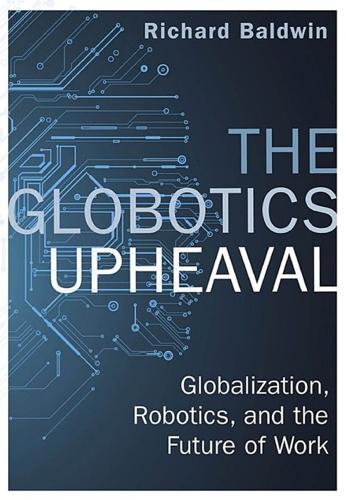
The Globotics Upheaval: Globalisation, Robotics and the Future of Work
by
Richard Baldwin
Published 10 Jan 2019
This technology took the horse out of horsepower; it created better tools for people who worked with their hands as Erik Brynjolfsson and Andrew McAfee point out in their seminal 2014 book, The Second Machine Age.4 It was mostly about goods, and it shifted the masses from making farm goods to making manufactured goods. Office work grew more productive, but mostly due to the fruits of industrialization (office machinery, electricity, etc). The Services Transformation was launched, in 1973, by the development of computers-on-a-chip and all the Information and Communication Technology (ICT) that followed. This technological impulse pushed the economy in a radically different direction, since it was radically different—Byrnjolsson and McAfee call it the Second Machine Age. ICT created better substitutes for people whose jobs involved manual tasks and better tools for people whose jobs involved mental tasks.
…
A. 370, no. 1960 (2012): 534–543, http://rsta.royalsocietypublishing.org/content/roypta/370/1960/534.full.pdf. 3. Kevin Roose, “His 2020 Campaign Message: The Robots Are Coming,” New York Times, February 10, 2018, https://www.nytimes.com/2018/02/10/technology/his-2020-campaign-message-the-robots-are-coming.html. 4. Erik Brynjolfsson and Andrew McAfee, The Second Machine Age: Work, Progress, and Prosperity in a Time of Brilliant Technologies (New York: Norton & Company, 2014). 5. Jack Welch and John Byrne, Jack: Straight from the Gut (Warner Business Books, 2001). PART I Historical Transformations, Upheavals, Backlashes, and Resolutions 2 We’ve Been Here Before: The Great Transformation Catherine Spence and her infant starved to death in the London Docklands.
…
What might seem strange about this widespread practice is that the digital products made of these free components are often insanely valuable. Varian’s law is thus: digital components are free while digital products are highly valuable. Innovation explodes as people try to get rich by working through the nearly infinite combinations of components in search of valuable digital products. In their breakthrough book, The Second Machine Age, Erik Brynjolfsson and Andy McAfee point out the implications. A big difference between digital technology and traditional technology is that new products and components can be reproduced costlessly, instantly, and perfectly. Imagine how much faster the Industrial Revolution would have spread if Newcomen’s steam engine could have been reproduced costlessly, instantly, and perfectly.
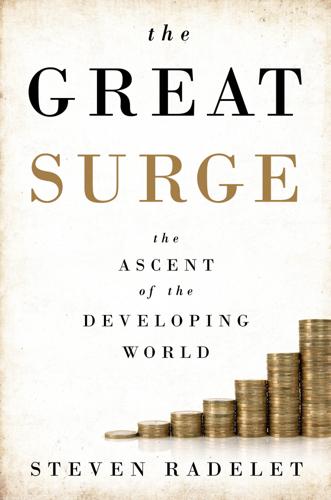
The Great Surge: The Ascent of the Developing World
by
Steven Radelet
Published 10 Nov 2015
Just as the industrial revolution can be traced to James Watt’s invention of the steam engine, which drove innovations and changes across the economic landscape, much of the current technological revolution can be traced back to the semiconductor and the computer, a history that Erik Brynjolfsson and Andrew McAfee recount in The Second Machine Age: Work, Progress, and Prosperity in a Time of Brilliant Technologies.14 There are multiple examples, but I will focus on technological advances in four areas that have been important to developing countries: transportation, agriculture, information, and health. MOVING GOODS, MOVING PEOPLE The most important development in integrating global trade during the last century was not the World Trade Organization (WTO) or global trade agreements or lower tariffs.
…
Managing the peaceful rise of China will be one of the most important global challenges of the next two decades, with profound effects on global development progress. TECHNOLOGY AND INNOVATION We live in a period of some of the most dramatic technological changes in history—what Erik Brynjolfsson and Andrew McAfee called “the second machine age.”10 Many view the microprocessor as the single most important invention since the steam engine kicked off the industrial revolution. Advances in information technology, energy, transportation, health, and agriculture have propelled the world economy forward. Developing countries have not fully reaped the benefits of existing powerful technologies, not to mention those of the future.
…
The Growth Report: Strategies for Sustained Growth and Inclusive Development (Washington, DC: International Bank for Reconstruction and Development/World Bank on behalf of the Commission on Growth and Development, 2008), p. 2, https://openknowledge.worldbank.org/bitstream/handle/10986/6507/449860PUB0Box3101OFFICIAL0USE0ONLY1.pdf?sequence. 14. Erik Brynjolfsson and Andrew McAfee, The Second Machine Age: Work, Progress, and Prosperity in a Time of Brilliant Technologies (New York: W. W. Norton, 2014). 15. “History of Containerization,” World Shipping Council, www.worldshipping.org/about-the-industry/history-of-containerization. 16. Daniel Bernhofen, Zouheir El-Sahli, and Richard Kneller, “Estimating the Effects of the Container Revolution on World Trade,” working paper 4136, Center for Economic Studies and the Ifo Institute, February 2013, http://ssrn.com/abstract=2228625.

Blood in the Machine: The Origins of the Rebellion Against Big Tech
by
Brian Merchant
Published 25 Sep 2023
Gravener Henson was infatuated with this process; he kept detailed notes of the innumerable improvements made to cloth-producing technology over the decades by the workers who used it. Yet technology is often described as undergoing “explosive” periods of “rapid acceleration,” like the Industrial Revolution, or the so-called Second Machine Age of artificial intelligence and computerized automation said to be taking shape in the twenty-first century. The explosion comes not when technology itself advances to any particular point, but when it’s used to disrupt the way we work and live. Technological disruption is not an accidental or inevitable phenomenon, either, but an intentional one.
…
For a time, Yang was able to rally modern-day John Booths; the Yang Gang that swarmed social media in support of his presidency was outspoken to say the least. Yang is far from alone in forecasting a turbulent era in which automation and artificial intelligence sweep away working-class jobs in droves. With money pouring into AI, robotics, and software automation, throughout the 2010s, pundits and prognosticators forecasted the arrival of “second machine age,” or the “fourth industrial revolution,” or a “world without work”—an era when machinery and software become so advanced that humans simply will not be able to compete. Yang calls this the “war on normal people,” which is also the title of his 2018 book. These economists and automation theorists continue to highlight studies that show that some half of all American jobs are vulnerable to computerization.
…
Here’s a telling example: In 2019, the New York Times’ Kevin Roose filed a report from Davos detailing how the business leaders and tech CEOs at that year’s World Economic Forum (WEF) were very eager to implement automation. “They’ll never admit it in public,” Roose wrote, “but many of your bosses want machines to replace you as soon as possible.” In public, the elites preferred to discuss the abstract need to prepare for “the fourth industrial revolution” or “the second machine age.” In private, they were more direct. “People are looking to achieve very big numbers,” said Mohit Joshi, the president of the automation firm Infosys, who worked with those very people; the leaders of major companies and organizations. “Earlier they had incremental, 5 to 10 percent goals in reducing their work force.

Futureproof: 9 Rules for Humans in the Age of Automation
by
Kevin Roose
Published 9 Mar 2021
Marvin Minsky, the MIT researcher typically credited as the father of artificial intelligence, was reported to have said in 1970 that “in from three to eight years we will have a machine with the general intelligence of an average human being.” These fears never materialized. But today, AI anxiety is burning bright again, fueled by popular books like Martin Ford’s Rise of the Robots and Erik Brynjolfsson and Andrew McAfee’s The Second Machine Age, both of which made the case that AI was going to fundamentally change society and transform the global economy. Academic studies of the future of work, like an Oxford University study that estimated that as many as 47 percent of U.S. jobs were at “high risk” of automation within the next two decades, added to the sense of impending doom.
…
“Humans and AI will collaborate, not compete.” Optimists also argue that much of today’s AI is designed to work with humans, rather than substituting for them, and that we should think of our relationship with AI as a collaborative opportunity, rather than a competitive threat. In The Second Machine Age, Erik Brynjolfsson and Andrew McAfee suggest replacing the phrase “race against the machines” with “race with the machines.” Paul R. Daugherty and H. James Wilson, two executives at the consulting firm Accenture, write in their book Human + Machine that human-AI collaborations will be a cornerstone of the twenty-first-century economy.
…
If you’re looking to start your own robot-themed bookshelf, I’d recommend starting here. Artificial Unintelligence by Meredith Broussard (2018). Broussard, an experienced data journalist and NYU professor, is a savvy guide to the foibles and limitations of AI, and her book is a forceful argument against what she calls “technochauvinism.” The Second Machine Age by Erik Brynjolfsson and Andrew McAfee (2014). This book by two MIT professors was years ahead of its time. I find myself going back to it frequently. Humans Are Underrated by Geoff Colvin (2015). Colvin, a longtime writer and editor at Fortune, makes a compelling case for the economic value of human skills.

AI Superpowers: China, Silicon Valley, and the New World Order
by
Kai-Fu Lee
Published 14 Sep 2018
And then there are technological changes on an entirely different scale. The ramifications of these breakthroughs will cut across dozens of industries, with the potential to fundamentally alter economic processes and even social organization. These are what economists call general purpose technologies, or GPTs. In their landmark book The Second Machine Age, MIT professors Erik Brynjolfsson and Andrew McAfee described GPTs as the technologies that “really matter,” the ones that “interrupt and accelerate the normal march of economic progress.” Looking only at GPTs dramatically shrinks the number of data points available for evaluating technological change and job losses.
…
Yes, they displaced a relatively small number of skilled craftspeople (some of whom would become Luddites), but they empowered much larger numbers of low-skilled workers to take on repetitive, machine-enabled jobs that increased their productivity. Both the economic pie and overall standards of living grew. But what about the most recent GPT, information and communication technologies (ICT)? So far, its impact on labor markets and wealth inequality have been far more ambiguous. As Brynjolfsson and McAfee point out in The Second Machine Age, over the past thirty years, the United States has seen steady growth in worker productivity but stagnant growth in median income and employment. Brynjolfsson and McAfee call this “the great decoupling.” After decades when productivity, wages, and jobs rose in almost lockstep fashion, that once tightly woven thread has begun to fray.
…
suffer stagnant wages: Robert Allen, “Engel’s Pause: A Pessimist’s Guide to the British Industrial Revolution,” University of Oxford Department of Economics Working Papers, April 2007, https://www.economics.ox.ac.uk/department-of-economics-discussion-paper-series/engel-s-pause-a-pessimist-s-guide-to-the-british-industrial-revolution. technologies that “really matter”: Erik Brynjolfsson and Andrew McAfee, The Second Machine Age: Work, Progress, and Prosperity in a Time of Brilliant Technologies (New York: Norton, 2014), 75–77. “the great decoupling”: Erik Brynjolfsson and Andrew McAfee, “Jobs, Productivity and the Great Decoupling,” New York Times, December 11, 2012, http://www.nytimes.com/2012/12/12/opinion/global/jobs-productivity-and-the-great-decoupling.html.
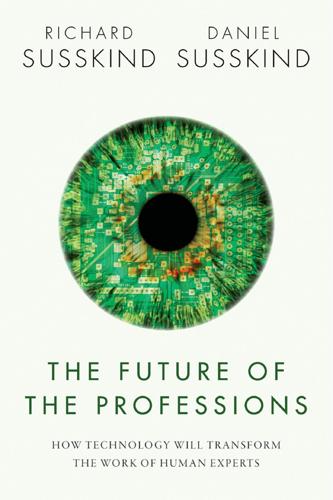
The Future of the Professions: How Technology Will Transform the Work of Human Experts
by
Richard Susskind
and
Daniel Susskind
Published 24 Aug 2015
The first is the notion that machines and systems will work alongside tomorrow’s professionals as partners. The challenge here is to allocate tasks, as between human beings and machines, according to their relative strengths. And, working together, humans and machines will outperform unassisted human experts. This is the position taken by Bryonjolfsson and McAfee in The Second Machine Age—they say we need to race ‘with the machines’, rather than against them.14 The second relationship is harder to concede. It is based on frank recognition that some systems will soon be manifestly superior at discharging entire bodies of work that today are undertaken by people—machines, in other words, will replace human beings.
…
Clayton Christensen and Henry Eyring, The Innovative University (2011). 12 Joseph Schumpeter describes the process of ‘creative destruction’ in Capitalism, Socialism and Democracy (1994), foreshadowing this contemporary literature. See part II, ch. VII. 13 See e.g. <http://www.data.gov> for the USA, <http://data.gov.uk> for the UK, and <http://www.data.go.jp> for Japan. 14 Erik Brynjolfsson and Andrew McAfee, The Second Machine Age (2014), ch. 12. 15 Most notably, the Sarbanes–Oxley Act of 2002 (enacted 30 July 2002), known also as the ‘Public Company Accounting Reform and Investor Protection Act’. This is part of the federal law of the USA. 16 See e.g. Glasgow Herald, 18 Nov.1985, p. 15. 17 <http://www.ey.com> (accessed 23 March 2015). 18 Atul Gawande, The Checklist Manifesto (2010), 34. 19 Gawande, The Checklist Manifesto, 36. 20 See Yochai Benkler, The Wealth of Networks—How Social Production Transforms Markets and Freedom (2006). 21 <http://www.tripadvisor.co.uk>. 22 See Eric Topol, The Patient Will See You Now (2015), on driverless cars and doctorless patients. 23 Penelope Eckert, ‘Communities of Practice’, in The Encyclopedia of Language and Linguistics, ed.
…
And they are given some academic support for this claim by the MIT economist David Autor, who suggests that ‘many of the tasks currently bundled into these jobs cannot readily be unbundled … without a substantial drop in quality’.29 However, this is simply not the experience of those who are working at the vanguard of the professions (see Chapter 2), nor of the current work of ‘process analysts’ (see section 6.8). Others argue that the most efficient future lies with machines and human beings working together. Human beings will always have value to add as collaborators with machines. This is one of the central arguments of Erik Brynjolfsson and Andrew McAfee in The Second Machine Age,30 and is also in the spirit of Garry Kasparov, the former chess world champion, who claims that a strong human player with a modest laptop can beat an extraordinarily powerful supercomputer.31 This position also aligns with IBM’s work on Watson. They speak of a ‘new partnership between people and computers’.32 We accept the force of this position in 2015.
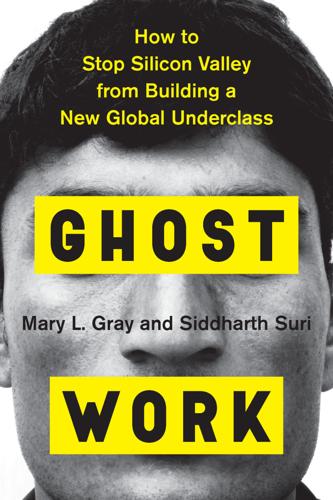
Ghost Work: How to Stop Silicon Valley From Building a New Global Underclass
by
Mary L. Gray
and
Siddharth Suri
Published 6 May 2019
But, in reality, they are being served by an international staff, quietly laboring in the background. These jobs, dominated by freelance and contingent work arrangements rather than full-time or even hourly wage positions, have no established, legal status. Sometimes these jobs are given heft as harbingers of the “Second Machine Age” or the “Fourth Industrial Revolution” or part of a larger digital or platform economy. Other times, they’re simply, glibly called gigs.9 No employment laws capture the on-demand gig economy’s odd mix of independence from any single employer and dependency on a web-based platform. As the taskmasters of the gig economy, on-demand platforms make their money by matching those buying and selling human labor online, generating a two-sided market of myriad businesses and anonymous crowds of workers.
…
Geneva, Switzerland: Broadband Commission for Sustainable Development, 2017. Brynjolfsson, Erik, and Andrew McAfee. Race Against the Machine: How the Digital Revolution Is Accelerating Innovation, Driving Productivity, and Irreversibly Transforming Employment and the Economy. Lexington, MA: Digital Frontier, 2012. ———. The Second Machine Age: Work, Progress, and Prosperity in a Time of Brilliant Technologies. New York: W. W. Norton, 2014. Bureau of Labor Statistics. “Contingent and Alternative Employment Arrangements, May 2017.” Economic News Release, U.S. Department of Labor, June 7, 2018. Butler, Elizabeth Beardsley. “Women and the Trades: Pittsburgh, 1907–1908.”
…
We offer this as a speculative example that imagines what Ayesha’s work would have looked like had she followed through on working with CrowdFlower. We hope this drives home the point that getting a sense of this labor is hard because of the constant churn among workers and the challenges of seeing and following the workers behind ghost work. [back] 9. Erik Brynjolfsson and Andrew McAfee, The Second Machine Age: Work, Progress, and Prosperity in a Time of Brilliant Technologies (New York: W. W. Norton, 2014); Klaus Schwab, The Fourth Industrial Revolution (New York: Penguin, 2017); Erik Brynjolfsson and Andrew McAfee, Race Against the Machine: How the Digital Revolution Is Accelerating Innovation, Driving Productivity, and Irreversibly Transforming Employment and the Economy (Lexington, MA: Digital Frontier, 2012).
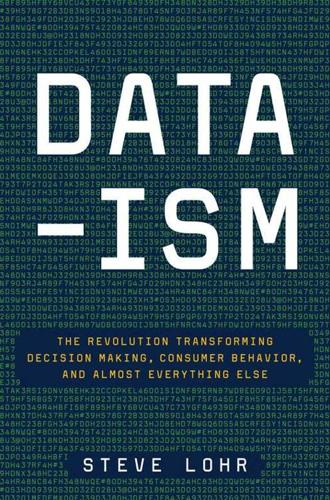
Data-Ism: The Revolution Transforming Decision Making, Consumer Behavior, and Almost Everything Else
by
Steve Lohr
Published 10 Mar 2015
Today, the manufacturing share of the labor force has declined to about 8 percent, even as the nation’s manufacturing output has increased sharply in value over the decades. Yet even techno-optimists have second thoughts as they see smarter machines likely to take on cognitive tasks long reserved for humans—when what is being replaced is not sweat but synapses. In The Second Machine Age, Erik Brynjolfsson and Andrew McAfee of MIT make the case for a technology-led surge in productivity and growth in the future, but one that will have more sweeping and disruptive effects on society than previous waves of automation. The book, published in 2014, calls for adaptive changes in policy, education, and skills training to prevent more and more workers from being left behind.
…
“Man-Computer Symbiosis”: Licklider’s essay was published in the IRE Transactions on Human Factors in Electronics, vol. HFE-1 (March 1960): 4–11. http://groups.csail.mit.edu/medg/people/psz/Licklider.html. Yet there is another view: Murray Campbell’s descriptions and quotes come from an interview on Aug. 21, 2013. The book, published in 2014: The Second Machine Age (W. W. Norton & Company, 2014) fleshes out and refines an e-book Race Against the Machine by the same pair in 2011. “wonderful place for data scientists to experiment”: An interview on Feb. 1, 2013, with Claudia Perlich. “a storyteller”: Danny Hillis’s descriptions and quotes come from a talk he gave at IBM’s Watson lab on Oct. 2, 2013. 7: Data Gets Physical “This is autumn in the vineyard”: Nick Dokoozlian’s descriptions and quotes come from two interviews, on Oct. 15 and Nov. 19, 2013.
…
Gallo’s use of, 123–33 Predix, 136 PricewaterhouseCoopers, 44 Principles of Scientific Management, The (Taylor), 208 Privacy Act (1974), 185 privacy concerns, 183–206 balancing privacy and data collection, 202–6 big data and personally identifying information, 187–92 cameras and, 183–86 data correlation and, 113 discrimination by statistical inference, 192–95 early computers and, 185–87 marketing and use of data, 195–97 social network data collection and, 197–202 productivity paradox, of computers, 72–75 Profiles in Performance: Business Intelligence Journeys and the Roadmap for Change (Dresner), 76 psycholinguistics, used for studying tweets, 199 Pulleyblank, William, 45–46, 47–48, 49 quantitative-to-qualitative transformation, data and, 7–8 “reality mining,” 206 Reisman, David, 155 Richardson, Tara, 106–7 Riedl, Paul, 156 Rock Health, 16 Rogers, Matt, 144 romantic relationships, social network research and, 87–88 Rometty, Virginia Haydock and, 156 IBM’s big data strategy and, 9, 42–45, 46, 47, 53–56 Rosenn, Itamar, 89–90, 94 Rotenberg, Marc, 204–5 Rothschild, Jeff, 86, 91–92, 98 Rubinsteyn, Alex, 180 Ruh, William, 134, 135–36 Sabre (Semi-Automated Business Research Environment), 46 Sage Bionetworks, 101–2, 170–71 SAS Institute, 52 satellite imagery, precision agriculture and, 129–32 Schadt, Eric background, 172–73 at Mount Sinai, 171–72, 173–74, 175 Sage Bionetworks and, 102 Schrage, Michael, 197 Science, 108 scientific management (Taylorism), 207–8 Seay, Mike, 188–89 Second Machine Age, The (Brynjolfsson and McAfee), 119–20 Shah, Rachana. See Fischer, Rachana Shah Singapore, traffic management in, 47–48 Singer, Natasha, 190 “six degrees of separation,” 87 Six Sigma system, 62 Sloan School of Management, at MIT, 71 “slow” thinking, 66–67 Smarr, Larry, 134, 214, 215 Smarter Planet campaign, of IBM, 48–53, 62, 128 smartphone cameras, privacy concerns and, 186 Smeall, Andrew, 26 Snow, C.
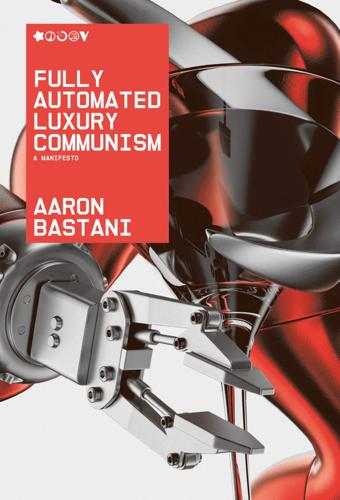
Fully Automated Luxury Communism
by
Aaron Bastani
Published 10 Jun 2019
‘India’s Slowing Growth Blamed on “Big Mistake” Of Demonetisation’. Guardian, 1 June 2017. York, Stephen. ‘Greenspan Says Crisis Left Him in “Shocked Disbelief”’. Independent, 24 October 2008. 2. The Three Disruptions Industry: The Second Disruption Brynjolfsson, Erik and Andrew McAfee. The Second Machine Age: Work, Progress, and Prosperity in a Time of Brilliant Technologies. W.W. Norton, 2014. Hobsbawm Eric. The Age of Revolution: Europe 1789–1848. Abacus, 2014. Capitalism’s Critics Gawenda, Alex and Ashok Kumar. ‘Made In Post-China™’. Counterpunch, 14 June 2013. Harvey, David. A Companion to Marx’s Capital.
…
‘NASA Just Fast-Tracked Its Mission to Explore a $10,000 Quadrillion Metal Asteroid’. Sciencealert.com, 25 May 2017. Goodall, Chris. The Switch: How Solar, Storage and New Tech Means Cheap Power for All. Profile Books, 2016. Going Exponential: Ibn Khallikan to Kodak Brynjolfsson, Erik and Andrew McAfee. The Second Machine Age: Work, Progress, and Prosperity in a Time of Brilliant Technologies. W.W. Norton, 2014. Chace, Calum. The Economic Singularity: Artificial Intelligence and the Death of Capitalism. Three Cs Publishing, 2016. Moore, G.E. ‘Cramming More Components onto Integrated Circuits’. Proceedings of the IEEE, 1998.
…
Forbes, 20 January 2017. Croft, Jane. ‘More than 100,000 Legal Roles to Become Automated’. Financial Times, 15 March 2016. Snow, Jackie. ‘A New Algorithm Can Spot Pneumonia Better than a Radiologist’. MIT Technology Review, 16 November 2017. The Future of Work Brynjolfsson, Erik and Andrew McAfee. The Second Machine Age: Work, Progress, and Prosperity in a Time of Brilliant Technologies. W.W. Norton, 2014. 5. Limitless Power: Post-Scarcity in Energy Energy and Disruption Malm, Andreas. Fossil Capital: The Rise of Steam Power and the Roots of Global Warming. Verso Books, 2016. Arrival of the Anthropocene Lynch, Patrick.
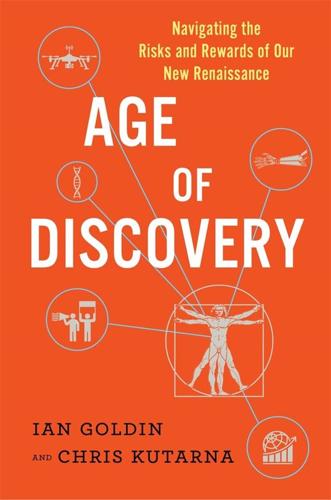
Age of Discovery: Navigating the Risks and Rewards of Our New Renaissance
by
Ian Goldin
and
Chris Kutarna
Published 23 May 2016
Mathematical Ciphers: From Caesar to RSA. Providence, RI: American Mathematical Society. 45. Brynjolfsson, Erik and Andrew McAfee (2014). The Second Machine Age: Work, Progress, and Prosperity in a Time of Brilliant Technologies. New York: W.W. Norton & Company. 46. Chen, Yan, Grace Young, et al. (2013). “A Day without a Search Engine: An Experimental Study of Online and Offline Searches.” Experimental Economics 14(4): 512–536; Brynjolfsson, Erik and Andrew McAfee (2014). The Second Machine Age: Work, Progress, and Prosperity in a Time of Brilliant Technologies. New York: W.W. Norton & Company. 47. Metcalfe, Robert (1995, December 4).
…
Arthur, Brian (2010). The Nature of Technology. London: Penguin. 49. Mansfield, Harvey (1998). Machiavelli’s Virtue. Chicago: University of Chicago Press. 50. Arthur, Brian (2010). The Nature of Technology. London: Penguin. 51. Brynjolfsson, Erik and Andrew McAfee (2014). The Second Machine Age: Work, Progress, and Prosperity in a Time of Brilliant Technologies. New York: W.W. Norton & Company. 52. EvaluatePharma (2015). “World Preview 2015, Outlook to 2020.” London: Evaluate Group. Retrieved from info.evaluategroup.com. 53. Lloyd, Ian (2015). “New Active Substances Launched During 2014.”
…
US Department of Homeland Security (2006). Report on H-1B Petitions: Fiscal Year 2004, Annual Report October 1, 2003—September 30, 2004. United States Citizenship and Immigration Services. Washington, D.C.: US Department of Homeland Security. 52. Brynjolfsson, Erik and Andrew McAfee (2014). The Second Machine Age: Work, Progress, and Prosperity in a Time of Brilliant Technologies. New York: W.W. Norton & Company. 53. Charette, Robert N. (2013, August 30). “The Stem Crisis Is a Myth.” IEEE Spectrum. Retrieved from spectrum.ieee.org; The Wall Street Journal (2007, March 19). “Does Silicon Valley Need More Visas for Foreigners.”
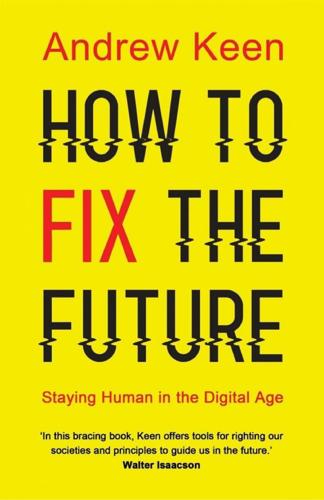
How to Fix the Future: Staying Human in the Digital Age
by
Andrew Keen
Published 1 Mar 2018
And though none of this is exactly wrong, the problem is that education has become the default solution to everything. When we don’t know how to solve a big problem, we shove it into the classroom and make underpaid and overworked teachers responsible for fixing it. The bigger and more amorphous the problem, the more we hand it off to schools to fix. So, for example, in their excellent bestselling The Second Machine Age—about the economic impact of Moore’s Law on society—the MIT economists Erik Brynjolfsson and Andrew McAfee make education their number one policy recommendation for solving the American future. “Teach the children well,” Brynjolfsson and McAfee conclude, speaking of the need to pay teachers better and make them more accountable for their pedagogical work, particularly the teaching of “hard-to-measure skills like creativity and unstructured problem-solving.”
…
Rutger Bregman, Utopia for Realists: How We Can Build the Ideal World (Little Brown, 2017). 11. Martin Ford, Rise of the Robots: Technology and the Threat of a Jobless Future (Basic Books, 2016). 12. Albert Wenger, World After Capital (worldaftercapital.org 2016). 13. Erik Brynjolfsson and Andrew McAfee, The Second Machine Age: Work, Progress and Prosperity in a Time of Brilliant Technologies (Norton, 2014), 213. 14. Lee Rainie, “The Future of Jobs and Jobs Training,” Pew Research Center, May 3, 2017. 15. Danielle Pacquette, “Bosses Believe Your Work Skills Will Soon Be Useless,” Washington Post, May 3, 2017. 16.
…
Petersburg Economic Forum, 96 Salesforce, 117, 205, 280–281 Samson, Renate, 159–164 Samwer, Marc, Oliver, and Alexander, 174–175 Sandel, Michael, 116 Sanders, Bernie, 141–142, 146–147 San Francisco, on worker and consumer choice issues, 254 “Satanic mills” concept, 16 Schama, Simon, 95 Schlink, F. J., 49–50 Schlosser, Eric, 50 Schmetz, Jean-Paul, 189 Schmidt, Eric, 139 Schneier, Bruce, 60 Schrems, Max, 155–156, 159 Schulz, Martin, 151–152 Schumacher, Tim, 172, 176–181 Schwab, Klaus, 24, 27 Seattle City Council, worker and consumer choice issues, 254 Second Machine Age, The (Brynjolfsson, McAfee), 269 Seidman, Dov, 14–16, 23, 107 self-conscious algorithms, 54–56 self-driving cars, 256–257 sexual assault, social responsibility and, 201–202, 220–222 Shah, Viral, 98–100 Shallows, The (Carr), 270 Sharma, Sharad, 149–150 Sikkut, Siim, 81 Silent Spring (Carson), 50 Silicon Germany (Keese), 174 Silo Effect, The (Tett), 274 Sina Weibo, 121 Singapore, 101–125 “Big Bang Data” exhibition (ArtScience Museum), 112–115, 124 China and, 120–125 on competition (antitrust), 141 connectedness of, 102–103 digital ID card system of, 106–108 economy of, 109–112 education in, 275–279 Estonia compared to, 92 government and human rights issues of, 104–106 inspiration for Utopia (More) and, 101–102 regulation issues, 141 Smart Nation initiative, 103–104, 106, 112–120 Singapore University of Technology and Design (SUTD), 277–279 Singer, Natasha, 280–281 Siri (Apple), 25 Slock.it, 170–171 Smith, Tiffany, 220, 222 Snowden, Edward, 8–12, 59, 88, 96–97, 156 social graph, 157 social media.
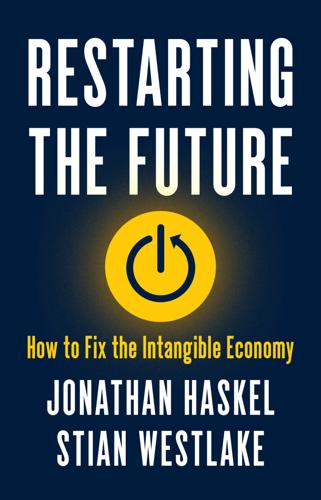
Restarting the Future: How to Fix the Intangible Economy
by
Jonathan Haskel
and
Stian Westlake
Published 4 Apr 2022
An alternative version of the Lost Golden Age story agrees that we live in an age of sluggish growth, but it claims we can be reasonably confident that growth will return—perhaps even faster than before. We may not live in the postwar golden age, but we can hope for a new economic dawn in the future, ushered in by new technology. Erik Brynjolfsson and Andrew McAfee’s The Second Machine Age holds that we are living in an age in which growth is low because new technologies are bedding in.25 Our economic fields look bare, but wait a bit and a bumper harvest will come in, delivered by rapidly increasing computing power and its application to every domain of human endeavour. According to this retooling hypothesis, a period of slow growth reflects businesses and workers gearing up to make use of radically different new technologies.
…
“The Industrial Revolution and the Great Divergence: Recent Findings from Historical National Accounting.” Centre for Economic Policy Research, discussion paper no. DP15207. https://cepr.org/active/publications/discussion_papers/dp.php?dpno=15207. Brynjolfsson, Erik, and Andrew McAfee. 2014. The Second Machine Age. New York: W. W. Norton. Brynjolfsson, Erik, Daniel Rock, and Chad Syverson. 2021. “The Productivity J-Curve: How Intangibles Complement General Purpose Technologies.” American Economic Journal: Macroeconomics 13 (1): 333–72. Building Better, Building Beautiful Commission. 2020. Living with Beauty: Promoting Health, Well Being and Sustainable Growth.
…
See work from home (WFH) rent seeking, 117, 138, 141, 216, 244, 254–55 replication crisis, 129–30 reputation, 92–93 research and development (R&D), 48, 53, 55–58, 124–26, 160, 178, 193, 203 retooling hypothesis, 40, 45 reversion to the mean, 156 Ridley, Matt, 123, 136 Roads and Bridges (Eghbal), 139 Robert-Nicoud, Frédéric, 204 Roberts, John, 142, 245 Robinson, James, 85, 96, 266n1 Rock, Daniel, 243 Rogers, Mark, 133 Romer, Paul, 247 Rossi-Hansberg, Esteban, 217 Ruiz-Valenzuela, Jenifer, 232 “Ryan’s World” (YouTube program), 35–36 Sawhill, Isabel, 208 scalability, 52–53, 115 Schoenholtz, Jim, 151 Schulz, Nick, 10, 86 Schumacher, Ernst, 58 Schwartz, Peter, 25 Scott, James C., 58 Second Machine Age, The (Brynjolfsson and McAfee), 39 segmentation, market, 223 Selden, George, 2 Sena, Vania, 133 Sever, Can, 155, 178 Shadbolt, Nigel, 146 shareholder value management, 158–62 Sheer, Lia, 160–61 Shiller, Robert, 36–37 Shleifer, Andrei, 156 Shockley, William, 204 short-termism, 159, 161–62 Sichel, Dan, 42, 45 signalling, human capital, 233–34 Simon, Hermann, 57 Skelton, David, 202 skeuomorphs, 106–7 Smith, James, 179 Smith, Noah, 236 Southwood, Ben, 138 special interests, capture by, 130 specificity, 104–6 spillovers, 52–53, 113, 121–36, 134f, 158–62, 269n48 Srivastava, Anup, 157 stagnation, 4, 23–26, 24f, 26f, 67–70, 68f state capacity, 16, 143–46, 240, 244, 245f, 247, 249–53 State We’re In, The (Hutton), 41 status, inequality of, 28 Stoker, Gerry, 29 street votes, 197–98 suitcase, wheelie, 123–24 Summers, Lawrence, 33, 163 sunkenness, 114, 115t, 116, 181 synergies, 53–54, 68–69, 114, 158–62, 269n48 Syverson, Chad, 243 Tabarrok, Alex, 133 Tabarrok curve, 133–34, 134f Taylor, Mark Zachary, 144, 256 Taylor, Tim, 268n24 tech-governance fit, 105 technical debt, 12 technocrats, 193–96 technological approach, 87 technological change, 99–104 technology, 39, 42–43, 68–69, 128–30 technopopulism, 257 Theranos, 80 Thicke, Robert, 131–32 Thiel, Peter, 35, 137, 141, 258 Timmis, Jonathan, 217 Tobin’s Q, 25–26, 26f, 264n13 total factor productivity (TFP), 43, 45, 67–68, 68f, 69–70, 264n31, 265n3 transactions costs, 95, 266n8 transport infrastructure, 188–89, 199–200 Tranter, Justin, 132, 270n19 Trump, Donald, 7, 202, 258 trust, 92–93, 99 uncertainty, 88, 265n49 unemployment/inflation trade-off, 166 unpredictability, 108–10 vaccines, 22, 43 value-based management, 158–62 value investing, 155–58 van Bavel, Bas, 111, 242 van Zandt, David, 101, 268n24, 268n31 VC.

Machines of Loving Grace: The Quest for Common Ground Between Humans and Robots
by
John Markoff
Published 24 Aug 2015
Despite the challenges of separating the impact of the recession from the implementation of new technologies, increasingly the connection between new automation technologies and rapid economic change has been used to imply that a collapse of the U.S. workforce—or at least a prolonged period of dislocation—might be in the offing. Brynjolfsson and McAfee argue for the possibility in a much expanded book-length version of “Race Against the Machine,” entitled The Second Machine Age: Work, Progress, and Prosperity in a Time of Brilliant Technologies. Similar sentiments are offered by Jaron Lanier, a well-known computer scientist now at Microsoft Research, in the book Who Owns the Future? Both books draw a direct link between the rise of Instagram, the Internet photo-sharing service acquired by Facebook for $1 billion in 2012, and the decline of Kodak, the iconic photographic firm that declared bankruptcy that year.
…
Maybe right now we need humans, but these guys [software automation designers] are making progress.”42 The assumption of many like Vardi is that a market economy will not protect a human labor force from the effects of automation technologies. Like many of the “Singularitarians,” he points to a portfolio of social engineering options for softening the impact. Brynjolfsson and McAfee in The Second Machine Age sketch out a broad set of policy options that have the flavor of a new New Deal, with examples like “teach the children well,” “support our scientists,” “upgrade infrastructure.” Others like Harvard Business School professor Clayton Christensen have argued for focusing on technologies that create rather than destroy jobs (a very clear IA versus AI position).
…
Green, and Ben Sand, “The Great Reversal in the Demand for Skill and Cognitive Tasks,” NBER Working Paper No. 18901, National Bureau of Economic Research, March 2013, http://www.economics.ubc.ca/files/2013/05/pdf_paper_paul-beaudry-great-reversal.pdf. 26.Ibid. 27.James Manyika, Susan Lund, Byron Auguste, and Sreenivas Ramaswamy, “Help Wanted: The Future of Work in Advanced Economies,” McKinsey Global Institute, March 2012, http://www.mckinsey.com/insights/employment_and_growth/future_of_work_in_advanced_economies. 28.Robin Harding, “US Has Lost 2M Clerical Jobs since 2007,” Financial Times, April 1, 2013, http://www.ft.com/intl/cm/s/0/37666e6c-9ae5-11e2-b982-00144feabdc0.html#axzz3V2czZqsP. 29.Melody Johnson, “Right-Wing Media Attack Obama for Accurate Remarks on Business’ [sic] Investment in Automated Machines,” MediaMatters for America, June 15, 2011, http://mediamatters.org/research/2011/06/15/right-wing-media-attack-obama-for-accurate-rema/180602. 30.“Are ATMs Stealing Jobs?” Economist, June 15, 2011, http://www.economist.com/blogs/democracyinamerica/2011/06/technology-and-unemployment. 31.Ben Sumers, “Bank Teller Case Study” (unpublished, 2012). 32.Erik Brynjolfsson and Andrew McAfee, The Second Machine Age: Work, Progress, and Prosperity in a Time of Brilliant Technologies (New York: W. W. Norton & Co., 2014), 127. 33.Jaron Lanier, Who Owns the Future? Kindle ed. (New York: Simon & Schuster, 2014), Kindle location 222–230. 34.Tim O’Reilly, Google+, January 9, 2014, https://plus.google.com/+TimOReilly/posts/F85gaWoBp3Z. 35.Matthieu Pélissié du Rausas, James Manyika, Eric Hazan, Jacques Bughin, Michael Chui, and Rémi Said, “Internet Matters: The Net’s Sweeping Impact on Growth, Jobs, and Prosperity,” McKinsey Global Institute, May 2011, http://www.mckinsey.com/insights/high_tech_telecoms_internet/internet_matters. 36.
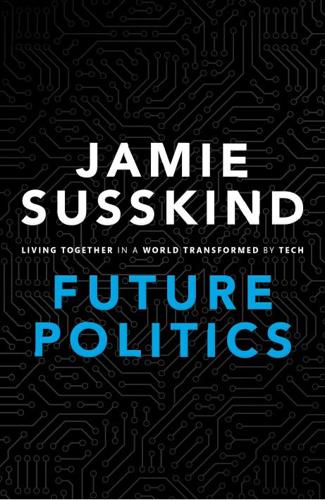
Future Politics: Living Together in a World Transformed by Tech
by
Jamie Susskind
Published 3 Sep 2018
Good Old-Fashioned Capital Good old-fashioned capital—land, shares, industrial machinery, and so forth—will be an important source of income in the digital lifeworld. The value of a particular item of capital will always depend on how productive and how scarce it is. The more productive and scarce it is, the greater the wealth it is likely to generate.8 In The Second Machine Age (2014) Andrew McAfee and Erik Brynjolfsson suggest that in the future, production will depend less on physical assets and more on intangible ones like intellectual property, organizational capital (business processes, production techniques, and the like), and ‘user-generated content’ (YouTube videos, Facebook photos, and online ratings).
…
Susskind and Susskind, Future of the Professions, 157; Kevin Kelly, What Technology Wants (New York: Penguin, 2010), 166–7; Eric Schmidt and Jared Cohen, The New Digital Age: Reshaping the Future of People, Nations and Business (London: John Murray, 2014), 5; Shanahan, Technological Singularity, xviii; Erik Brynjolfsson and Andrew McAfee, The Second Machine Age: Work, Progress, and Prosperity in a Time of Brilliant Technologies (NewYork: W.W. Norton & Company, 2014), 49;Wendell Wallach, A Dangerous Master: How to Keep Technology from Slipping Beyond Our Control (New York: Basic Books, 2015), 67. OUP CORRECTED PROOF – FINAL, 30/05/18, SPi РЕЛИЗ ПОДГОТОВИЛА ГРУППА "What's News" VK.COM/WSNWS Notes 375 51.
…
Sandra Braman, Change of State: Information, Policy, and Power (Cambridge, Mass: MIT Press, 2009), 2. 20. James Gleick, The Information: A History, A Theory, A Flood (London: Fourth Estate, 2012), 7–8. OUP CORRECTED PROOF – FINAL, 30/05/18, SPi РЕЛИЗ ПОДГОТОВИЛА ГРУППА "What's News" VK.COM/WSNWS 390 Notes 21. Erik Brynjolfsson and Andrew McAfee, The Second Machine Age:Work, Progress, and Prosperity in a Time of Brilliant Technologies (New York: W. W. Norton & Company, 2014), 16. 22. Karl Marx, The German Ideology, in Karl Marx and Frederick Engels: Collected Works Vol. 5 (London: Lawrence & Wishart, 1976), 36. 23. Karl Mannheim, Ideology and Utopia: An Introduction to the Sociology of Knowledge, translated by Louis Wirth and Edward Shils (Connecticut: Martino Publishing, 2015), 3. 24.
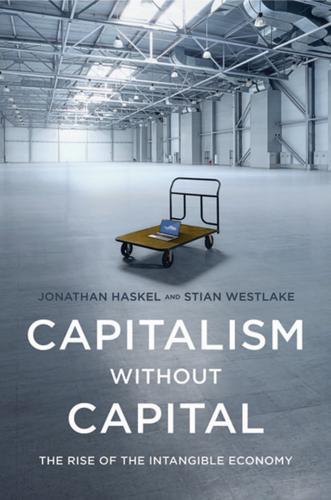
Capitalism Without Capital: The Rise of the Intangible Economy
by
Jonathan Haskel
and
Stian Westlake
Published 7 Nov 2017
Source: authors’ calculations based on INTAN-Invest database (www.intan-invest.net). This raises an interesting question: Is it possible that the rise of intangible investment is nothing more than a consequence of improvements in IT? Is the intangible economy a sort of corollary of Moore’s Law or an epiphenomenon of what Erik Brynjolfsson and Andrew McAfee call the Second Machine Age? It is difficult to prove causality in technological change, but there are grounds to think it is a bit more complicated than that. It is certainly true that some intangibles operate through computers—indeed, for one category of intangibles, software, computers are a necessary precondition.
…
Journal of Economic History 73 (1): 142–76. doi:10.1017/S0022050713000053. Brynjolfsson, Erik, Loren Hitt, and Shinkyu Yang. 2002. “Intangible Assets: How the Interaction of Computers and Organizational Structure Affects Stock Market Valuations.” Brookings Papers on Economic Activity 33 (1): 137–98. Brynjolfsson, Erik, and Andrew McAffee. 2014. The Second Machine Age. W. W. Norton and Co. Chen, Ester, Ilanit Gavious, and Baruch Lev. 2015. “The Positive Externalities of IFRS R&D Rule: Enhanced Voluntary Disclosure.” http://people.stern.nyu.edu/blev/files/Positive-Externalities-of-IFRS_March_30_2015_k4gn98s2.pdf. Chesson, Adrian. 2001. “Estimation of Software in the UK National Accounts—Recent Developments.”
…
K., 131 rules and norms, 211–14 Sadun, Rafaella, 53, 82 Salter, Ammon, 197 Sampson, Rachelle, 168 Samsung, 73, 112 Sanders, Bernie, 223 Santa Fe Institute, 80 scalability, 9–10, 58, 60, 87, 101–2; definition of, 246n2; importance of, 67–68; income inequality and, 133–34; and increased investment, 110; and intangibles, 65–67; secular stagnation and, 103–5 Schreyer, Paul, 40 Schwarzenegger, Arnold, 16 Science: The Endless Frontier (Bush), 232 Second Machine Age, 30 secular stagnation, 91, 116; explanation for, 101–16; and intangibles investment, 102–3; profits and productivity differences and, 103–7; relationship of scalability and spillovers to, 109–16; symptoms of, 92–96 Shankar, Ravi, 61 Shi, Yuan, 168 Shih, Willy, 85 Shinoda, Yukio, 42 short-termism, 161, 168–69 Sichel, Dan, 4, 5, 39, 42, 43, 45 Siemens, 60–61, 204 single-factor productivity, 98–101 Six Sigma, 51 Skype, 217 Slack, 152, 217 smartphones, 72–73, 81 Smil, Vaclav, 146 Smith, Adam, 36, 188 social capital, 156, 236 soft infrastructure, 156 solar energy, 85 Solow, Robert, 39, 125 Song, Jae, 129, 131, 135 South Wales Institution of Engineers, 83 speculation, 249n1 spending, 46–47, 54; on assets, 20; rent-seeking, 113 Spenser, Percy, 80 spillovers, 9, 58, 61, 87, 102; contestedness and, 87; importance of, 77–79; and intangibles, 72–77, 109–16; Jacobs, 138; Marshall-Arrow-Romer, 62, 138; physical infrastructure and, 147–51; secular stagnation and, 103–4; slowing TFP growth and, 107–9; venture capital and, 178 Spotify, 18 Stack Overflow, 29 Stansted Airport, 1–2, 3–4 Starbucks, 34, 52, 65, 140, 183, 195, 197; scalability of, 67 start-up ecosystems, 222 Statute of Anne (1709), 76 stock markets, 167–68, 205–6; IPOs and, 171–72 stock of intangible assets, 56–57 Summers, Larry, 93 sunkenness, 8–9, 58, 60, 87, 246n5; as characteristic of intangibles, 68–70; importance of, 70–72; venture capital and, 175–76 sustained advantage, 250n2 Sutton, John, 67 symbolic analysis, 132–34 synergies, 10, 58, 61, 87–88, 213; and intangible assets, 80–83, 83–86; among investments, 110; maximizing the benefits of, 214–18; physical infrastructure and, 147–51; venture capital and, 176 System of National Accounts, 20, 43, 51 systems innovation, 198 tacit knowledge, 65 tangible investments, differences between intangible and, 7–10, 58 taxes, 139–40, 235; and financing, 166, 219 technology: and cost of intangible investment, 28; inequality as result of improvements in, 123–24, 126–27; and productivity of intangibles, 28–30; and spillovers, 151–52 Tesla Motors, 24, 111, 209 Thatcher, Margaret, 127 Theory of Moral Sentiments, The (Smith), 188 Thiel, Peter, 78, 175, 184–85, 187, 223 3M, 194 Toffler, Alvin, 4 Tonogi, Konomi, 42 total factor productivity (TFP), 96, 98, 102; poor performance of, 109–9, 114 Toyota, 29, 51 trade and inequality, 124 trademarks, 76 training and education, 51–52, 170, 228–30 Trajtenberg, Manuel, 106 Trump, Donald, 122, 141–42, 143 trust, 156 23andMe, 152 Twitter, 185, 187 Uber, 24, 28, 51; building of driver network by, 112–13; contestedness and, 115; legal travails of, 187; scalability of, 67, 101–2, 105; and synergies, 82; venture capital and, 174, 175 uncertainty, 87 Ure, Andrew, 126 Ur-Nammu, 75 US Federal Reserve, 4, 40, 41, 42, 165 US Food and Drug Administration, 154 Van Reenen, John, 82, 136, 173, 195 venture capital (VC) funding, 154–55, 161, 166, 174–75; problems with, 177–79; and intangibles, 175–77 Vlachos, Jonas, 131 Volcker, Paul, 165 von Mises, Ludwig, 38 von Wachter, Till, 129 Wallis, Gavin, 42, 223–24 Walmart, 81, 187 Warsh, David, 62 Wasmer, Etienne, 128 Watt, James, 78 wealth, 119–20, 121; housing and, 122, 128–29, 136–39; inequality of, 139–40; intangibles’ effects on, 129–40 Wealth of Nations, The (Smith), 36 Weightless World, The (Coyle), 4 Weitzman, Martin L., 195 Welch, Jack, 184 Whalley, Alexander, 224 “What Is the U.S.

No Ordinary Disruption: The Four Global Forces Breaking All the Trends
by
Richard Dobbs
and
James Manyika
Published 12 May 2015
By 2025, we estimate that the GDP of Tianjin will have risen to around $625 billion—approximately that of all of Sweden.12 The second disruptive force is the acceleration in the scope, scale, and economic impact of technology. Technology—from the printing press to the steam engine and the Internet—has always been a great force in overturning the status quo. The difference today is the sheer ubiquity of technology in our lives and the speed of change. In their bestseller The Second Machine Age, Erik Brynjolfsson and Andrew McAfee of the Massachusetts Institute of Technology dubbed the current era the “second half of the chessboard.” Brynjolfsson and McAfee give a modern twist to an old story about the power of exponential growth. Pleased with the invention of chess, a Chinese emperor offered the inventor his choice of prizes.
…
Bouton, Shannon, David Cis, Lenny Mendonca, Herbert Pohl, Jaana Remes, Henry Ritchie, and Jonathan Woetzel, How to make a city great, McKinsey & Company, September 2013. Bouvard, François, Robert Carsouw, Eric Labaye, Alastair Levy, Lenny Mendonca, Jaana Remes, Charles Roxburgh, and Samantha Test, Better for less: Improving public sector performance on a tight budget, McKinsey & Company, July 2011. Brynjolffson, Eric, and Andrew McAfee, The Second Machine Age: Work, Progress, and Prosperity in a Time of Brillliant Technologies (New York: W. W. Norton, 2014). Bughin, Jacques, Michael Chui, and James Manyika, “Ten IT-enabled business trends for the decade ahead,” McKinsey on Business Technology 33, spring 2014. Bughin, Jacques, and James Manyika, “Measuring the full impact of digital capital,” McKinsey Quarterly, July 2013.
…
in Japan, 53–54 Rocket Internet, 79 Russia, 81 (table) Saga, 70 San Francisco, California, 27, 29, 30 See also Silicon Valley Sarkozy, Nicolas, 197 Saudi Arabia, 56, 81 (table), 113 (table), 143 Savings rates, 137–138, 139 Scentsa, 52 Schröder, Gerhard, 181–182 Science, technology, engineering, and mathematics (STEM), 155, 156, 158, 159 (table) The Second Machine Age (Brynjolfsson and McAfee), 6 Seniors. See Aging population Sensors, 38, 47, 70 Sephora, 52 Services. See Goods and services; New goods and services Shanghai, China, 21 (fig.), 24, 71 Shapeways, 84 Sharing economy, 32, 48, 167–168, 171–172 See also Peer-to-peer services Shenzhen, China, 101 Silicon Valley, 58, 64, 77, 86, 175, 189 Singapore aging population in, 67, 68 connectedness rank of, 81 (table), 87 immigration policy tightening in, 185–186 infrastructure innovation by, 28 SWFs in, 143 talent relocation to, 177–178 Skills gap.
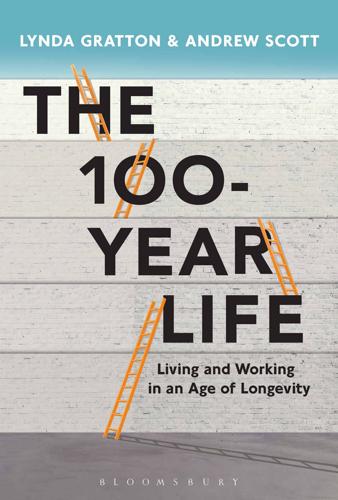
The 100-Year Life: Living and Working in an Age of Longevity
by
Lynda Gratton
and
Andrew Scott
Published 1 Jun 2016
When even Professor Stephen Hawking worries that the rise of AI represents a fundamental threat to the future of humanity, it is perhaps not surprising that such widespread concerns exist. 9See for instance Ford, M., The Rise of the Robots (Basic Books, 2015); Brynjolfsson, E. and McAfee, A., The Second Machine Age (W. W. Norton & Company, 2014). 10Ford, The Rise of the Robots. 11Brynjolfsson and McAfee, The Second Machine Age. 12Autor, D. H., Levy, F. and Murnane, R. J., ‘The Skill Content of Recent Technological Change: An Empirical Exploration’, Quarterly Journal of Economics 118 (4) (2003): 1279–334. 13Beaudry, P., Green, D. A. and Sand, B.M., ‘The Great Reversal in the Demand for Skill and Cognitive Tasks’, NBER Working Paper 18901 (2013). 14Frey, C.B. and Osbourne, M.A., ‘The Future of Employment: How Susceptible are Jobs to Computerization?’
…
In his thought-provoking analysis, Silicon Valley entrepreneur Martin Ford remarks: ‘The threat to overall employment is that as creative destruction unfolds the destruction will fall primarily on labor-intensive businesses in traditional areas like retail and goods preparation while the creation will generate new businesses and industries that simply don’t hire many people.’10 In the words of MIT professors Erik Brynjolfsson and Andrew McAfee, ‘Computers and other digital advances are doing for mental power … what the steam engine and its descendants did for muscle power’.11 The second half of the chessboard In 1965, Intel’s Geoffrey E. Moore conjectured that the processing power of semi-conductors would double roughly every two years and, to date, this has been an extraordinarily accurate prediction. As a consequence of this exponential growth, ‘Second Machine Age’ proponents argue that we are now in the ‘second half of the chessboard’. This is a reference to a fable concerning a king in India who, bored with all his existing pastimes, set a challenge to his kingdom to come up with a better form of entertainment. When presented with an early form of chess, the king was so delighted he offered the inventor anything he wanted.
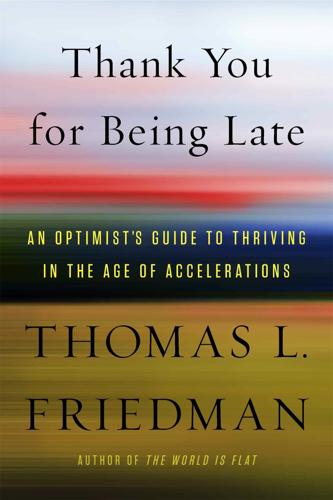
Thank You for Being Late: An Optimist's Guide to Thriving in the Age of Accelerations
by
Thomas L. Friedman
Published 22 Nov 2016
All of those technologies blossomed after I wrote The World Is Flat—most of them around 2007. So a few years later, I began updating in earnest my view of how the Machine worked. A crucial impetus was a book I read in 2014 by two MIT business school professors—Erik Brynjolfsson and Andrew McAfee—entitled The Second Machine Age: Work, Progress, and Prosperity in a Time of Brilliant Technologies. The first machine age, they argued, was the Industrial Revolution, which accompanied the invention of the steam engine in the 1700s. This period was “all about power systems to augment human muscle,” explained McAfee in an interview, “and each successive invention in that age delivered more and more power.
…
This period was “all about power systems to augment human muscle,” explained McAfee in an interview, “and each successive invention in that age delivered more and more power. But they all required humans to make decisions about them.” Therefore, the inventions of that era actually made human control and labor “more valuable and important.” Labor and machines were, broadly speaking, complementary, he added. In the second machine age, though, noted Brynjolfsson, “we are beginning to automate a lot more cognitive tasks, a lot more of the control systems that determine what to use that power for. In many cases today artificially intelligent machines can make better decisions than humans.” So humans and software-driven machines may increasingly be substitutes, not complements.
…
The intellectual one is: Since the technological forces driving this change in the pace of change are not likely to slow down, how do we adapt? If your answer to the first question is “yes,” then let me assure you that you are not alone. Here is my favorite story in Erik Brynjolfsson and Andrew McAfee’s book The Second Machine Age: The Dutch chess grandmaster Jan Hein Donner was asked how he’d prepare for a chess match against a computer, like IBM’s Deep Blue. Donner replied: “I would bring a hammer.” Donner isn’t alone in fantasizing that he’d like to smash some recent advances in software and artificial intelligence (AI).
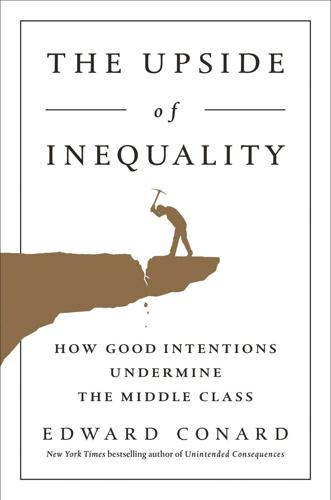
The Upside of Inequality
by
Edward Conard
Published 1 Sep 2016
Thomas Piketty, Capital in the Twenty-First Century (Cambridge, MA: Harvard University Press, 2013). 3. Lawrence Summers, “U.S. Economic Prospects: Secular Stagnation, Hysteresis, and the Zero Lower Bound,” Business Economics 49, no. 2 (February 24, 2014), http://larrysummers.com/wp-content/uploads/2014/06/NABE-speech-Lawrence-H.-Summers1.pdf. 4. Erik Brynjolfsson and Andrew McAfee, The Second Machine Age: Work, Progress, and Prosperity in a Time of Brilliant Technologies (New York: W. W. Norton, 2014), 202. 5. Alan Krueger, “Rise and Consequences of Inequality in the United States,” remarks at the Center for American Progress, January 12, 2012, https://www.whitehouse.gov/sites/default/files/krueger_cap_speech_final_remarks.pdf. 6.
…
Paul Krugman, “The Conscience of a Liberal: Rethinking Japan,” New York Times, October 20, 2015, http://krugman.blogs.nytimes.com/2015/10/20/rethinking-japan. 57. John Cochrane, “The Fed Needn’t Rush to ‘Normalize,’” Wall Street Journal, September 16, 2015, http://www.wsj.com/articles/the-fed-neednt-rush-to-normalize-1442441737. Chapter 6: The Myth That Progress Hollows Out the Middle Class 1. Erik Brynjolfsson and Andrew McAfee, The Second Machine Age: Work, Progress, and Prosperity in a Time of Brilliant Technologies (New York: W. W. Norton, 2014), 202. 2. Christopher Matthews, “How Silicon Valley Is Hollowing Out the Economy (and Stealing from You to Boot),” Time, May 7, 2013, http://business.time.com/2013/05/07/how-silicon-valley-is-hollowing-out-the-economy-and-stealing-from-you-while-theyre-at-it. 3.
…
Sabrina Tavernise, “Education Gap Grows Between Rich and Poor, Studies Say,” New York Times, February 9, 2012, http://www.nytimes.com/2012/02/10/education/education-gap-grows-between-rich-and-poor-studies-show.html. 10. Charles Murray, Coming Apart: The State of White America, 1960–2010 (New York: Crown Forum, 2012). 11. Ibid and Raghuram Rajan, Fault Lines: How Hidden Fractures Still Threaten the World Economy (Princeton, NJ: Princeton University Press, 2010). 12. Brynjolfsson and McAfee, The Second Machine Age. 13. David Autor, “The Polarization of Job Opportunities in the U.S. Labor Market: Implications for Employment and Earnings,” The Center for American Progress and The Hamilton Project, 2010, http://www.brookings.edu/re search/papers/2010/04/jobs-autor. 14. “The American Middle Class Is Losing Ground,” Pew Research Center, December 9, 2015, http://www.pewsocialtrends.org/files/2015/12/2015-12-09_middle-class_FINAL-report.pdf. 15.
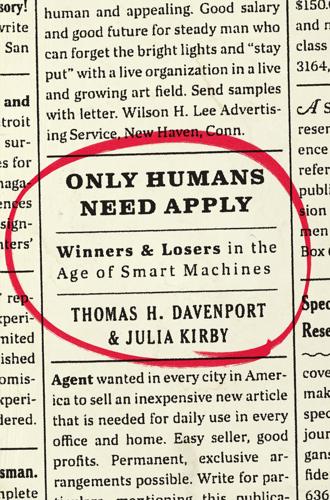
Only Humans Need Apply: Winners and Losers in the Age of Smart Machines
by
Thomas H. Davenport
and
Julia Kirby
Published 23 May 2016
Machines are becoming so capable that, today, it is hard to see the higher cognitive ground that many people could move to. That is making some very smart people worry. Massachusetts Institute of Technology (MIT) professors Erik Brynjolfsson and Andy McAfee, for example, in their acclaimed book, The Second Machine Age, note that the anticipated recovery in labor markets has been just around the corner for a long time. The persistence of high unemployment levels in Western economies might mean that the dislocation caused by the last wave of skill-biased technical change is permanent. Paul Beaudry, David Green, and Benjamin Sand have done research on the total demand for workers in the United States who are highly skilled.5 They say demand peaked around the year 2000 and has fallen since, even as universities churn out an ever-growing supply.
…
It’s definitely a realm in which some humility on the part of humans is called for. In one-on-one matches, we know the best chess players are computers these days. Yet the trouncing isn’t so complete as you might have been led to believe. The economist Tyler Cowen (not surprisingly, a chess champion in his youth) and The Second Machine Age authors Erik Brynjolfsson and Andrew McAfee use the example of “freestyle chess,” in which human chess players are free to use as much help from computers as they wish.11 The two of us personally don’t play chess much (we like to get paid for thinking that hard), but we gather that under these rules, people often manage to beat the best programs.
…
J., 179 Persado, 121 personal shoppers, 111 Pink, Daniel, 169 Plett, Heather, 110–11 Popa, Dan, 123 Port, David, 87 precariat, 241 Predictably Irrational (Ariely), 113 Press, Gil, 191 productivity automation and gains, 1, 3, 167, 227 BYOD and, 13 knowledge workers and, 100 man-machine partnerships and, 234 price reductions and, 14 “silent firing” and, 24 Progressive insurance, 197 “Prose of the Machines, The” (Oremus), 127 ProSystem, 22 “quantified self” movement, 68 Race Against the Machine, 31 RAGE Frameworks, 45, 216–17 Reimsbach-Kounatze, Christian, 236 Rethink Robotics, 50, 182, 193 Rhodin, Mike, 55 Riedl, Mark, 126 Riordan, Staci Jennifer, 160 Rise of the Robots (Ford), 205 Risi, Karin, 210, 220, 223 Ritchie, Graeme, 125 Robinson, Sir Ken, 115 robotic process automation, 48–49, 187, 221, 222–23 robotics, 24, 35, 40, 49–52, 54, 157 anthropomorphizing and, 49 collaborative robots, 49–51, 182, 193 DARPA Robotics Challenge, 51, 56 education for, 232 patience and, 123–24 programming language, 49, 50 self-awareness and, 56 transparency and ease of use, 193 warnings and predictions about, 225–26 Ronanki, Rajeev, 187–89, 220 Roosevelt, Franklin D., 238, 248 Rudin, Cynthia, 193 Rumsfeld, Donald, 214 Russell, Stuart, 227–28 Sachs, Jeffrey, 228 Sadler-Smith, Eugene, 117–18 Safecast, 247 Saffo, Paul, 24 Salovey, Peter, 113, 116 Samasource, 168 Sand, Benjamin, 6 SAP, 133 SAS, 104, 132, 140, 141, 194 Saxena, Manoj, 45 Schneider National, 132, 147–48, 189–90, 196 Short Haul Optimizer, 147, 190, 191 Scientific Music Generator (SMUG), 126 “School of One,” 141 Science: The Endless Frontier (Bush), 248 Scott, David, 67 Scott, Rebecca, 162 Second Machine Age, The (Brynjolfsson and McAfee), 6, 74 self-driving vehicles, 4, 51–52, 213–14, 244, 246 Sharp, Phillip, 209 Shaughnessy, Dan, 117 Shiller, Robert, 7 Simon, Herbert, 163 Singapore, 250 Singularity Is Near, The (Kurzweil), 36 Skype Translator, 56 smartphones, 53, 235, 239 “social license to operate,” 233 Spanish National Research Council, 54–55 Spielberg, Steven, 125 spreadsheets, 69–70 Standing, Guy, 241 Starner, Thad, 65 Stats Inc., 97 Steinberg, Dan, 124–25 Stepping Aside, 77 artisanal jobs, 119–21 augmentation to free people up, 121–24 characteristics of a candidate, 129 for financial planners and brokers, 87 how to build skills for, 129–30 incursion of machines into human attributes, 124–27 in insurance underwriting, 81 jobs with nonprogrammable skills, 109–12 learning “noncognitive” skills, 115–18 multiple intelligences and, 112–14 for teachers, 85 value of human involvement, 127–28 what it means, 108 where a candidate is likely found, 130 Stepping Forward, 77, 176–200 adding new sources of data, 196–97 broadening application of tools, 194–95 broadening the base of methods, 194 characteristics of a candidate, 199–200 consultants, 187–89 creating usability and transparency by business users, 192–94 data scientists, 179–80 embedding automation functions, 196 entrepreneurs, 185–87 examples, successful people, 179–89 for financial planners and brokers, 88 focusing on behavioral finance and economics, 198–99 how to build skills for, 200 in insurance underwriting, 83–84 internal automation leaders, 189–91 jobs, technical and nontechnical, 177–91 marketers, 183–85 number of jobs, 191–92 product managers, 182–83 programmers and IT professionals, 178 reporting and showing results, 195–96 researchers, 181–82 for teachers, 85–86 what it is, 176 where a candidate is likely found, 200 working on the math, 197–98 Stepping In, 77, 131–52 automation technologies and, 134–35 bright future for, 149–51 characteristics of a candidate, 151–52 common attributes of, 145–49 examples, successful people, 132, 134–35, 137–48 for financial planners and brokers, 97 having an aptitude for, 142–45 how to build skills for, 152 in insurance underwriting, 81–82 predecessors of, 132–34 purple people, 131, 133–34, 135, 147, 151 for teachers, 85 value provided by, 138–42 what it is, 131–32 what candidates are and aren’t, 135–38 where a candidate is likely found, 152 working with vendors and, 140–41 Stepping Narrowly, 77, 153–75 achieving mastery and, 162–66 augmentation and, 166–69, 173–74 building on your narrowness, 161–62 characteristics of a candidate, 174 education for, 232 examples, successful people, 153–54, 159–60, 162, 163, 164, 170, 172–73 for financial planners and brokers, 87–88 finding a specialty, 158–61 “hedgehog” thinker and, 171 how to build skills for, 175 individual psychology and, 169–71 in insurance underwriting, 82 “long tail” and, 157, 162 machine-unfriendly economics and, 155–58, 162 in medicine, 157 niche business, 153–54, 171–73 for teachers, 85 where a candidate is likely found, 175 Stepping Up, 76–77, 89–107, 155 automation decisions and, 93–95 big-picture perspective, 98–100 building and ecosystem, 100–102 careful work design for automated business functions, 103–4 characteristics of a candidate, 106 creating a balance between computer-based and human skills, 105–6 examples, successful people, 89–91, 95–98 for financial planners and brokers, 86–87 in financial sector, 92–93 how to build skills for, 106–7 in insurance underwriting, 80 in marketing, 93 staying close, but moving on and, 102–3 for teachers, 84–85 what it is, 91–93 where a candidate is likely found, 107 Stewart, Martha, 111 Summers, Larry, 95, 227 Suncor, 205 Surrogates (film), 125 Sutton, Bob, 170–71 Sweetwood, Adele, 104 taste, augmentation and, 122 TaxCut, 22 tax preparation, 22, 67–68 Tegmark, Max, 243–44, 247 Telefónica’s O2, 49 Teradata, 43 Terminator films, 65 Tesla, 213, 246 Thiel, Peter, 243 Thinking, Fast and Slow (Kahneman), 236 Thinking for a Living (Davenport), 5 This, Herve, 164 Thompson, Derek, 242 Tibco, 194 Time magazine, AI cover and article, 36 TopCoder, 168 Torrence, Travis, 132, 147–48, 189, 190 Tourville, Lisa, 83–84, 137 TurboTax, 22, 67–68 “12 Risks That Threaten Human Civilization” (Armstrong), 249 2001: A Space Odyssey (film), 76, 245 Udacity, 178 UltraTax, 22 UnitedHealthCare, 83 University of California, Berkeley, 51 University of Michigan’s Institute for Social Research, 115 “Unusual and Highly Specialized Practice Areas” (Bohrer), 159 UPS automated driver routing algorithm (ORION), 196 USAA, 87–88 U.S.
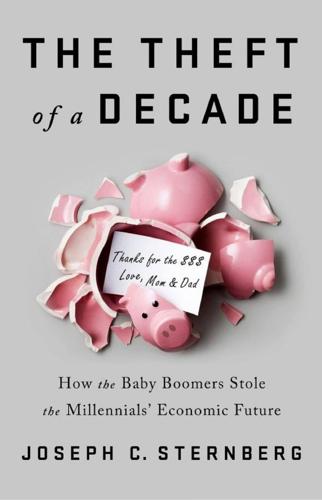
The Theft of a Decade: How the Baby Boomers Stole the Millennials' Economic Future
by
Joseph C. Sternberg
Published 13 May 2019
Like any good upper crust, the creative class would feel a sense of noblesse oblige toward its inferiors: “To build true social cohesion,” Florida warned, “the members of the Creative Class will need to offer those in other classes a tangible vision of ways to improve their own lives by becoming part of the Creative Economy or, at the very least, by reaping some of its rewards.” More recently, Erik Brynjolfsson and Andrew McAfee’s influential 2014 book The Second Machine Age argued that the American economy inevitably will be characterized by a “bounty” of fabulous economic gains for workers and entrepreneurs with the right skills, but also a widening “spread” between those winners and the growing army of losers whose jobs will disappear under a tidal wave of technological change.32 That book won approving reviews or front-cover blurbs from public figures many Millennials have grown up respecting, such as New York Times columnist Thomas Friedman, Netscape founder Marc Andreessen, and someone whose job title is “chief maverick” at Wired magazine.
…
Philip Oreopoulos, Till von Wachter, and Andrew Heisz, “The Short- and Long-Term Career Effects of Graduating in a Recession,” American Economic Journal: Applied Economics 4, no. 1 (2012). 31. Richard Florida, “Preface to the Original Edition,” in The Rise of the Creative Class, Revisited (New York: Basic Books, 2012). 32. Erik Brynjolfsson and Andrew McAfee, The Second Machine Age: Work, Progress, and Prosperity in a Time of Brilliant Technologies (New York: Norton, 2014). 33. Tyler Cowen, Average Is Over: Powering America Beyond the Age of the Great Stagnation (New York: Plume, 2013). 34. Paul Beaudry, David A. Green, and Benjamin M. Sand, “The Great Reversal in the Demand for Skill and Cognitive Tasks,” National Bureau of Economic Research Working Paper No. 18901, March 2013. 35.
…
See Affordable Care Act/Obamacare Ocasio-Cortez, Alexandria election to Congress, 211 as Millennial, 211, 219 policy positions/views, 211, 222 taxes and, 195, 197 Occupy Wall Street movement, 130, 214 Ohio Public Employee Retirement Systems (OPERS), 175 Once and Future Worker, The (Cass), 58 Operation Twist, 134 Organization for Economic Cooperation and Development, 61 O’Rourke, Beto, 214 Patel, Suraj, 219 Paul, Ron, 222 Paulson, Hank, 129, 131 peace dividend, 151 Pell Grant program, 97, 99, 100 pension/plans Boomers and, 121, 159, 221 Detroit city government example, 175 European countries, 183, 196, 198, 199, 200 Germany/Millennials and, 199, 200 Japan and, 203, 205, 208n mid-twentieth century, 49 Millennials (US) and, 79–80, 81, 81n, 82 Ohio example, 175 problems with state/local government plans, 150, 158–159, 175 trend in private work, 158 Perot, Ross, 217 politics and Millennials 2018 midterm elections, 213 first nationally-elected officials, 211–212 fixing problems and, 213–214 House Member age statistics, 212 interns and, 213 party support/political views and, 214–216, 217–219, 222–223 political influence and, 213 state offices, 212 stereotypes, 214 trade policy, 217–218 voting and, 213 wants, 220–223, 232–236 working economy, 220–221 Powell, Jerome, 231–232 productivity by the 1970s, 48 investment and, 16, 49 measuring, 48n “qualified mortgage” (QM) standard, 139–140 quantitative easing description, 133 Federal Reserve and, 18–19, 60 housing/global financial crisis, 133, 135, 136, 137 Reagan, Ronald economic policies, 24, 52–54 fixed investment, 53 supply-side economics and, 52, 54–55, 58 support for, 20 taxes and, 52 recession postwar period, 62 See also financial crisis/Great Recession regulation (financial) changes/consequences, 56–57 during Reagan administration, 52, 54 regulations and Trump, 229–230, 234 religion and Millennials, 216–217 Resolution Foundation think tank, 178 retirement finances 401 (k) plans, 80 Millennials as “retirement plans” for parents, 145 Millennials/savings and, 79, 80–81 See also pension/plans; Social Security Revolutionary War/state debts, 147, 147n Romney, Mitt as candidate, 215, 225 manufacturing background, 232n youth vote, 215 Rubin, Robert, 54–55 “Rubinomics” program, 54–55, 124 Ryan, Paul, 231 S&P 500, 10 Sanders, Bernie description/political party and, 219, 222 Millennial support, 195, 214, 219 taxes, 173, 195, 197 savings/Millennials college-educated Millennials and, 78–79 debt and, 81n, 82 defined-contribution plans, 80 description/overview, 77–83 emergency-lending facility use and, 78 job market and, 79 obsession and, 79 parents vs., 77 pension plans and, 79–80 retirement finances and, 79, 80–81 Social Security benefits and, 82–83 statistics on, 78–79, 80–83, 83n Wall Street payback and, 83 worries about, 81–82 Say, Jean-Baptiste, 50n Say’s Law, 50n Schock, Aaron, 211–212 Second Machine Age, The (Brynjolfsson and McAfee), 41 self-employment trends (since 2000), 71 See also gig economy September 11 terror attacks/consequences, 57, 152 Shapiro, Ben, 215, 224–225 “sheepskin effect,” 90 Sixteenth Amendment, 148 Smith, Brad, 71–72 SNAP (Supplement Nutrition Assistance Program), 164 social capital, 22 social programs/benefits consequences/Mulligan and, 165–166 financial crisis and, 163–165 Social Security beginnings, 149 financial problems/Millennials and, 153–161 housing and, 114n insurance comparisons, 154, 157–158 Millennial expectations, 82–83 Millennial resources and, 142 taxes and, 150n, 196 See also entitlements for elderly solar panels installation, 28 Spain and financial crisis, 180 steel industry (1970s to 1990s), 50–51 stock market crash (1929), 10 financial crisis, 10 Strauss, William, 6–7 “structural deficits,” 150–151, 151n Supplement Nutrition Assistance Program (SNAP), 164 supply-side economics, 52, 54–55, 58 TANF, 164 TARP (Troubled-Asset Relief Program), 59, 130, 130n taxes on capital/consequences, 53 Clinton and, 55, 152 cuts with Great Recession, 163 inflation as, 207 myth on, 195 national consumption tax and, 173–174 politicians in Germany/US and, 197 Reagan and, 52 Republicans and, 174 Sixteenth Amendment, 148 tax wedge, 183 Trump and, 227–228 Tea Party movement, 130, 231 technology labor and (mid-twentieth century), 49 role in economic problems, 234–235 See also computer/information technology Thatcher, Margaret, 189 “total-factor productivity,” 48n total number of hours worked in 1970s, 47 as measure of labor market, 47 trade policy and Millennials, 217–218 training investing less, 17, 69, 88 investing more, 228 Millennials wanting, 29, 72 See also internships/Millennials Troubled-Asset Relief Program (TARP), 59, 130, 130n Trump, Donald Affordable Care Act and, 68 description, 19 entitlements and, 231 immigration and, 225–226 interest rates/Federal Reserve and, 19, 231–232 Japan/foreign competition and, 202, 217–218, 225 Millennials and, 214, 215, 217, 224, 225–232 real estate background and, 232n regulations and, 229–230, 234 taxes, 227–228, 234 traits/character, 224 unemployment rate and, 226 Uber, 70, 70n unemployment Britain/Millennials and, 189 NEETs, 181 unemployment-assistance programs (US) creation, 149 financial crisis and, 164 unemployment rate (US) in 1950s and 1960s, 47 in 1970s, 47 in 1980s, 54 changes post-2008 decade, 30, 33 description, 30 global financial crisis/recovery and, 11, 12, 13 Millennials and, 42 Trump and, 226 See also labor-force participation rate union power other countries and, 186 in US, 49, 49n United Kingdom minimum wage, 184 Urban Institute, 139 US Bureau of Labor Statistics, 28, 30, 37, 47 Vance, J.

Revolution Française: Emmanuel Macron and the Quest to Reinvent a Nation
by
Sophie Pedder
Published 20 Jun 2018
Macron spent a lot of time hanging out with tech types at the time. When I interviewed him in the autumn of 2015, I asked him what he had read recently on the subject. Most French ministers would have quoted a piece of French research, or more commonly a French government report. Macron cited The Second Machine Age, by Erik Brynjolfsson and Andrew McAfee. He had a good grasp of the pace and nature of technological change, as well as its implications for jobs and society as machines hollowed out the salaried working middle. French policymakers have long tended to favour producers over consumers, and to protect incumbents from newcomers to the market.
…
INDEX Abel, Olivier here Adenauer, Konrad here Agir pour l’Ecole here Alduy, Cécile here Allard, Mathilde here Aly, Guillaume here Amiens here description of here, here Henriville here, here, here La Providence Catholic school here, here, here, here launch of En Marche here, here, here 2017 presidential election campaign here Arnault, Bernard here Aschenbroich, Jacques here al-Assad, Bashar here, here Asselineau, François here Association for the Renewal of Political Life, The here Attali, Jacques here, here Attali Commission here, here, here, here, here Aubry, Martine here, here, here, here Auzière, André-Louis here, here, here Auzière, Brigitte here, here, here: see also Macron, Brigitte Auzière, Laurence here, here Auzière, Sébastien here Auzière, Tiphaine here, here, here Aymard, Léonard here Badinter, Robert here Balibar, Etienne here Bande de Filles (film) here banlieues here, here, here, here, here Avignon here Clichy-sous-Bois, Paris here Décines-Charpieu, Lyon here Lyon here, here Paris here, here, here, here, here, here, here Seine-Saint-Denis, Paris here Sevran, Paris here, here Trappes, Paris here unemployment here Vaulx-en-Velin, Lyon here Barbier, Christophe here Barre, Raymond here Barthes, Roland here, here, here Bastiat, Frédéric here Bastille Day military parade (2017) here, here, here, here, here Sarkozy and (2008) here terrorist attack (2016) here Baverez, Nicolas here, here Bayeux Tapestry here, here, here Bayrou, François here, here, here Berger, Laurent here Bertelsmann Stiftung here Berville, Hervé here, here Bessière, Sylvianne here Besson, Philippe here, here, here Bigorgne, Laurent here, here, here, here, here, here Binaisse, Eugène here BlaBlaCar here Blair, Tony here, here, here, here, here, here Blanquer, Jean-Michel here, here, here, here, here, here Blondel, Marc here Blum, Léon here Bolhuis, Véronique here Bolloré, Vincent here Bonnell, Bruno here, here, here, here, here Bordes, Antoine here Bourgi, Robert here Bousquet de Florian, Pierre de here Bouvet, Laurent here Brabeck, Peter here Brexit here, here, here, here, here, here, here, here Brice, Laurent here Briois, Steeve here Britain, see Brexit and Europe Brown, Gordon here, here Bruckner, Pascal here Bruni, Carla here Brynjolfsson, Erik: The Second Machine Age here Bugatti, Ettore here Bugatti production site, Molsheim here Buzyn, Agnès here Cahuzac, Jérôme here Cambadélis, Jean-Christophe here Cameron, David here Camos, Sylvain here Camp, Garrett here Campbell, Alastair here Canard Enchaîné, Le: Penelopegate here, here Canto-Sperber, Monique here car industry here Carrère, Emmanuel here, here, here Castries, Henri de here centrism here, see also Third Way politics CFDT (Confédération Française Démocratique du Travail) here CGT (Confédération Générale du Travail) here, here, here Chaban-Delmas, Jacques here, here Chamboredon, Jean-David here Charbonnier, Eric here Chevènement, Jean-Pierre here Chirac, Jacques here, here, here, here, here, here, here, here, here, here and wealth tax here, here climate change here, here, here Clinton, Bill here, here, here Code du Travail here cohabitation here Cohen, Elie here Colbert, Jean-Baptiste here Collomb, Gérard here Confédération Française Démocratique du Travail (CFDT) here Confédération Générale du Travail (CGT) here, here, here Constant, Benjamin here contrat première embauche (CPE) here Cour des Comptes here, here, here Crozier, Michel here Dalongeville, Gérard here Dardel, Frédéric here Dargnat, Christian here, here, here, here, here, here, here, here, here, here, here Dartevelle, Renaud here, here, here, here, here, here, here Dauenhauer, Bernard here de Filippo, Eduardo: L’Art de la Comédie here de Gaulle, Charles here, here, here, here, here, here de Jean, Pierre, see Jean, Pierre de de Villepin, Dominique, see Villepin, Dominique de Delors, Jacques here Delpla, Jacques here, here Denormandie, Julien here, here, here Depardieu, Gérard here Depardon, Raymond here deuxième gauche here digital era artificial intelligence here digital economy here, here, here digital revolution here Dosse, François here Duhamel, Alain here Dworkin, Ronald here Ecole Nationale d’Administration (ENA) here, here Ecole Normale Supérieure here, here economy here, here, here business here competition here digital revolution here industrial policy here labour market here labour reforms here, here politics of taxation here potential for growth here public sector here, here public spending here, here, here, here, here start-ups here, here, here, here see also industry EDP (excessive deficit procedure) here education baccalauréat here, here, here, here, here, here 42 (school) here higher education here lycées here, here, here reforms here, here see also grandes écoles Elysée Palace here, here, here salon doré here, here Emelien, Ismaël here, here, here, here, here, here, here, here, here, here En Marche (On the Move) here, here, here beginnings of here door-to-door canvassing here, here, here finances here Grande Marche (2016) here, here, here, here, here hacking of here launch of here, here, here political positioning of here, here structure of here, here, here victory of here ENA (Ecole Nationale d’Administration) here, here Etienne, Philippe here, here Europe here Athens speech here Brexit here, here, here, here Britain here, here, here, here Central and Eastern Europe here defence here, here EDP here eurozone here France and here, here, here Germany here, here reform of here, here Sorbonne speech here excessive deficit procedure (EDP) here Fabius, Laurent here Fadell, Tony here Fairey, Shepard here Ferracci, Marc here, here, here, here, here, here Ferry, Jules here, here Fête de la Rose, Frangy-en-Bresse here Fiévet, Jean-Marie here Fillon, François here, here Penelopegate here political views here 2017 presidential election campaign here, here, here, here Finance Ministry, Bercy here, here, here, here, here, here, here, here financial crisis (2008) here, here Finkielkraut, Alain here FN, see National Front Force Ouvrière here foreign policy here Africa here climate change here Europe, see Europe Middle East here USA here Fort, Sylvain here, here, here Fottorino, Eric here Fouré, Brigitte here Fourquet, Jérôme here, here Frangy-en-Bresse: Fête de la Rose here Front National, see National Front Gaci, Azzedine here Gaddafi, Muammar here Gantzer, Gaspard here, here, here Garicano, Luis here Gatignon, Stéphane here Gauchet, Marcel here Gayet, Julie here Ghosn, Carlos here Giddens, Anthony here, here Giesbert, Franz-Olivier here, here Girier, Jean-Marie here Giscard d’Estaing, Valéry here, here, here, here, here globalization here, here, here, here Gnao, Ange-Mireille here Goldman, Jean-Jacques here Gomes, Christophe here Goulard, Sylvie here Gracques here, here grandes écoles Ecole Centrale here Ecole Nationale d’Administration (ENA) here, here Ecole Normale Supérieure here, here Ecole Polytechnique here, here ESSEC here, here, here HEC here, here Mines ParisTech here, here Sciences Po here, here, here, here, here, here, here Gravier, Jean-François: Paris et le désert français here Grelier, Jean-Carles here Griveaux, Benjamin here, here, here, here, here, here Guerini, Stanislas here Guibert, Pauline here Guilluy, Christophe here Haine, La (film) here, here Hallyday, Johnny here, here Hamon, Benoît here, here, here Hariri, Saad here Hazareesingh, Sudhir here Heisbourg, François here, here, here, here Hénin-Beaumont, see National Front Henrot, François here Hermand, Henry here, here Hesse, Hermann: ‘Stufen’ here Hidalgo, Anne here Hollande, François here, here, here, here, here, here, here, here, here, here, here déchéance here election campaigns here, here, here, here foreign policy here, here, here legalisation of gay marriage here and Macron’s resignation here and private life here and taxation here, here, here and terrorism here, here and Un président ne devrait pas dire ça here Houellebecq, Michel here, here, here The Elementary Particles here Hugo, Victor here industry here car industry here luxury products here new businesses here state and here 35-hour working week here, here, here, here, here, here Inspection Générale des Finances here Institut Montaigne report (2004) here Jean, Guy de here Jean, Pierre de here, here Joffrin, Laurent here Jospin, Lionel here, here, here Jouyet, Jean-Pierre here, here, here, here, here, here Judis, John here Julliard, Jacques here July, Serge here Juncker, Jean-Claude here Juppé, Alain here, here, here, here, here, here conviction for political corruption here plan Juppé here 2017 presidential election campaign here, here, here Kalanick, Travis here Kara, Yacine here Kasbarian, Guillaume here Kassovitz, Mathieu here, here Kepel, Gilles here El-Khatmi, Amine here Kimelfeld, David here Kohler, Alexis here, here Kuchna, Patrice here Kundera, Milan: Jacques et son Maître here Kurtul, Mahir here Laffont, Jean-Jacques here laïcité here Laine, Mathieu here, here, here Lamy, Pascal here, here, here, here Landier, Augustin here Le Bras, Hervé here, here Le Feur, Sandrine here Le Maire, Bruno here, here Le Pen, Jean-Marie here, here, here, here, here, here Le Pen, Marine here, here, here, here, here, here, here, here and FN here in Hénin-Beaumont here, here, here and political realignment here 2017 presidential election campaign here, here, here, here, here, here, here, here Le Pen, Marion Maréchal see Maréchal-Le Pen, Marion Lecanuet, Jean here LeLarge, Claire here liberalism here, here, here Liegey, Guillaume here, here, here, here, here Lienemann, Marie-Noëlle here Littiere, Mickaël here London School of Economics here, here, here, here Louvre: Cour Napoléon here, here, here, here Love, Courtney here Lycée Henri IV, Paris here Lyon here banlieues here, here Maastricht Treaty here, here, here McAfee, Andrew: The Second Machine Age here Machiavelli, Niccolò here Macron, Brigitte here, here, here, here, here, here after-school theatre club here marriage here, here parental opposition to here Macron, Emmanuel after-school theatre club here and Britain here, here, here caricatures of here and déchéance here early life here economic adviser to Hollande here, here, here economy minister here, here, here, here education here, here, here, here, here election of here En Marche, see En Marche ‘en même temps’ here, here and Europe, see Europe essay in Esprit here family background here and foreign policy, see foreign policy gay rumours here and globalization here, here, here and grandmother, here, here, here, here, here, here iconography here inauguration ceremony here insulting comments here, here, here interviews with, as President here, here, here, here, here, here, here and Jupiterian presidency here, here, here karaoke here and labour reform here, here, here leadership/personal qualities here on literature here loi Macron here, here marriage here, here and Merkel here, here, here, here, here, here, here and music here and networking here, here novels, own here, here optimism of here parental opposition to Brigitte Auzière here, here, here, here and philosophy here, here, here and political realignment here 2017 presidential election campaign here, here, here public-speaking performance here relationship with Brigitte here, here, here, here Rothschild’s here and tech industry here and Third Way politics here and Trump here, here, here, here, here, here, here, here, here, here and welfare state here Macron, Estelle here Macron, Françoise (née Noguès) here, here, here, here, here Macron, Jean-Michel here, here, here, here, here Macron, Laurent here Madelin, Alain here Mahjoubi, Mounir here Mailly, Jean-Claude here mal français here Malandain, Guy here Malraux, André here Mandelson, Peter here Manette, see Noguès, Germaine Maréchal-Le Pen, Marion here Marguet, Antoine here, here, here, here Martinez, Philippe here May, Theresa here, here Mazzella, Frédéric here, here, here melancholy here Mélenchon, Jean-Luc here, here, here, here, here, here, here, here Merchet, Jean-Dominique here Mercier, Hugo here Merkel, Angela here, here, here, here, here, here, here Mihi, Samir here Minc, Alain here, here, here Mines ParisTech here, here Miquel, Emmanuel here, here, here Mitterrand, François here, here, here, here, here, here, here, here, here, here mobile telephony here, here Molière (Jean-Baptiste Poquelin): Le Misanthrope here Monnet, Jean here Montebourg, Arnaud here, here, here, here Moreau, Florence here Moscovici, Pierre here Moustaki, Georges: ‘Le Métèque’ here Muller, Arthur here Musée des Confluences here Nanterre, University of here, here Napoleon Bonaparte here, here, here, here, here National Centre for Counter-Terrorism here National Front (FN) here, here, here, here, here, here, here in Hénin-Beaumont here see also Le Pen, Marine NATO here, here, here Ndiaye, Sibeth here, here Niel, Xavier here, here, here, here, here Noguès, Germaine (Manette) here, here, here, here, here Noguès, Jean here Nora, Pierre here nuclear industry here, here O, Cédric here Obama, Barack here, here, here ‘Hope’ portrait here Obey (Shepard Fairey) street art here Oudéa, Frédéric here Paque, Sophie here, here Paris-Descartes, University of here Paulson, Lex here, here Pébereau, Michel here Penelopegate here Pénicaud, Muriel here, here, here Permanent Structured Cooperation (PESCO) here Pervis, Patrick here Peyrefitte, Alain here Philippe, Edouard here, here, here Piette, Jacques here Piketty, Thomas here, here Piochon, Christophe here PIRLS international study of reading (2016) here Pisani-Ferry, Jean here political realignment here Pompidou, Georges here, here Pons, Vincent here Poujade, Pierre here poverty here, here anti-poverty policy here, here, here in banlieues here presidential election campaign (2017) here, here Amiens here Prochasson, Christophe here public spending here, here, here, here, here Putin, Vladimir here, here, here radicalization here Rawls, John here reforms here, here under Chirac here, here under Sarkozy here under Hollande here education here, here and Europe here and eurozone here, here, here, here, here, here, here and labour market here, here, here, here regional France here FN in here Hénin-Beaumont here Lyon here, here, here policies to reunite here regional cities here Republicans, The here, here, here, here Reza, Yasmina here Ricoeur, Paul here, here, here Robert, Father Philippe here, here, here Robertson, George here Rocard, Michel here, here, here, here Rothschild & Cie here Rothschild, David de here, here Rouart, Jean-Marie here Royal, Ségolène here, here, here Rutte, Mark here Sablon, Sandy here Sadirac, Nicolas here, here, here Saint-Exupéry, Antoine de here, here Saint Gobain mirror factory here, here Saint-Simon, Henri de here Salafism here Salhi, Yassin here Sandberg, Sheryl here Santerre, Jean here, here Sarkozy, Cécilia here Sarkozy, Nicolas here, here, here, here, here, here, here, here foreign policy here, here, here private life here, here 2017 presidential election campaign here, here, here, here and reforms here Sartre, Jean-Paul here Say, Jean-Baptiste here Schröder, Gerhard here Schuman, Robert here Sciamma, Céline here Sciences Po, Paris here, here, here, here, here, here, here Séjourné, Stéphane here Sen, Amartya here, here Shety, Loic here Simoncini, Marc here Socialist Party here, here, here, here, here, here, here, here, here, here, here, here, here Spitz, Bernard here, here, here start-ups, see digital era and taxation and tech Stefanini, Patrick here Strauss-Kahn, Dominique here strikes, see unions and reforms Studer, Bruno here, here, here Sunday trading here, here see also loi Macron Szydlo, Beata here Taquet, Adrien here, here, here, here, here Tardieu, Jean: La Comédie du Langage here taxation here, here, here, here Chirac and here, here Hollande and here, here, here, here Macron and here, here, here, here, here politics of here Sarkozy and here, here and tech here, here, here, here, here wealth tax here, here, here, here, here, here taxis in Paris here, here Uber here, here, here, here Taylor, Maurice here Teixeira, Ruy here terrorist attacks here, here, here counter-terrorism law here Thatcher, Margaret here, here Third Way politics here Thomson, David here, here, here Tirole, Jean here Tocqueville, Alexis de here Toulouse School of Economics (TSE) here, here, here Trierweiler, Valérie here, here Trogneux, Jean here Trogneux chocolate business here, here Trump, Donald here, here, here, here, here, here, here, here, here, here TSE (Toulouse School of Economics) here, here, here Uber here, here, here protests against here unemployment here, here, here, here, here, here, here, here Amiens here banlieues here Calais here Chirac and here, here FN and here, here Hénin-Beaumont here Hollande and here Macron and here, here, here, here Uber and here Vaulx-en-Velin here unions, see CFDT, CGT, reforms Unsubmissive France (La France Insoumise) here, here, here Vallée, Shahin here Valls, Manuel here, here, here, here, here, here and terrorism here, here, here 2017 presidential election campaign here, here, here Van Reenen, John here Veil, Simone here Veneau, Jérôme here Vercors (Jean Bruller): Le silence de la mer here Versailles, Palace of: May 2017 meeting with Putin here, here Villepin, Dominique de here, here, here Villeroy de Galhau, François here Voltaire (François-Marie Arouet): Candide here Vuillemot, Jérôme here Weber, Max here Weinberg, Serge here, here welfare state here Wilders, Geert here Xi Jinping here, here Zeugin, Sophie here, here A NOTE ON THE AUTHOR Sophie Pedder has been the Paris Bureau Chief of The Economist since 2003.
…
INDEX Abel, Olivier here Adenauer, Konrad here Agir pour l’Ecole here Alduy, Cécile here Allard, Mathilde here Aly, Guillaume here Amiens here description of here, here Henriville here, here, here La Providence Catholic school here, here, here, here launch of En Marche here, here, here 2017 presidential election campaign here Arnault, Bernard here Aschenbroich, Jacques here al-Assad, Bashar here, here Asselineau, François here Association for the Renewal of Political Life, The here Attali, Jacques here, here Attali Commission here, here, here, here, here Aubry, Martine here, here, here, here Auzière, André-Louis here, here, here Auzière, Brigitte here, here, here: see also Macron, Brigitte Auzière, Laurence here, here Auzière, Sébastien here Auzière, Tiphaine here, here, here Aymard, Léonard here Badinter, Robert here Balibar, Etienne here Bande de Filles (film) here banlieues here, here, here, here, here Avignon here Clichy-sous-Bois, Paris here Décines-Charpieu, Lyon here Lyon here, here Paris here, here, here, here, here, here, here Seine-Saint-Denis, Paris here Sevran, Paris here, here Trappes, Paris here unemployment here Vaulx-en-Velin, Lyon here Barbier, Christophe here Barre, Raymond here Barthes, Roland here, here, here Bastiat, Frédéric here Bastille Day military parade (2017) here, here, here, here, here Sarkozy and (2008) here terrorist attack (2016) here Baverez, Nicolas here, here Bayeux Tapestry here, here, here Bayrou, François here, here, here Berger, Laurent here Bertelsmann Stiftung here Berville, Hervé here, here Bessière, Sylvianne here Besson, Philippe here, here, here Bigorgne, Laurent here, here, here, here, here, here Binaisse, Eugène here BlaBlaCar here Blair, Tony here, here, here, here, here, here Blanquer, Jean-Michel here, here, here, here, here, here Blondel, Marc here Blum, Léon here Bolhuis, Véronique here Bolloré, Vincent here Bonnell, Bruno here, here, here, here, here Bordes, Antoine here Bourgi, Robert here Bousquet de Florian, Pierre de here Bouvet, Laurent here Brabeck, Peter here Brexit here, here, here, here, here, here, here, here Brice, Laurent here Briois, Steeve here Britain, see Brexit and Europe Brown, Gordon here, here Bruckner, Pascal here Bruni, Carla here Brynjolfsson, Erik: The Second Machine Age here Bugatti, Ettore here Bugatti production site, Molsheim here Buzyn, Agnès here Cahuzac, Jérôme here Cambadélis, Jean-Christophe here Cameron, David here Camos, Sylvain here Camp, Garrett here Campbell, Alastair here Canard Enchaîné, Le: Penelopegate here, here Canto-Sperber, Monique here car industry here Carrère, Emmanuel here, here, here Castries, Henri de here centrism here, see also Third Way politics CFDT (Confédération Française Démocratique du Travail) here CGT (Confédération Générale du Travail) here, here, here Chaban-Delmas, Jacques here, here Chamboredon, Jean-David here Charbonnier, Eric here Chevènement, Jean-Pierre here Chirac, Jacques here, here, here, here, here, here, here, here, here, here and wealth tax here, here climate change here, here, here Clinton, Bill here, here, here Code du Travail here cohabitation here Cohen, Elie here Colbert, Jean-Baptiste here Collomb, Gérard here Confédération Française Démocratique du Travail (CFDT) here Confédération Générale du Travail (CGT) here, here, here Constant, Benjamin here contrat première embauche (CPE) here Cour des Comptes here, here, here Crozier, Michel here Dalongeville, Gérard here Dardel, Frédéric here Dargnat, Christian here, here, here, here, here, here, here, here, here, here, here Dartevelle, Renaud here, here, here, here, here, here, here Dauenhauer, Bernard here de Filippo, Eduardo: L’Art de la Comédie here de Gaulle, Charles here, here, here, here, here, here de Jean, Pierre, see Jean, Pierre de de Villepin, Dominique, see Villepin, Dominique de Delors, Jacques here Delpla, Jacques here, here Denormandie, Julien here, here, here Depardieu, Gérard here Depardon, Raymond here deuxième gauche here digital era artificial intelligence here digital economy here, here, here digital revolution here Dosse, François here Duhamel, Alain here Dworkin, Ronald here Ecole Nationale d’Administration (ENA) here, here Ecole Normale Supérieure here, here economy here, here, here business here competition here digital revolution here industrial policy here labour market here labour reforms here, here politics of taxation here potential for growth here public sector here, here public spending here, here, here, here, here start-ups here, here, here, here see also industry EDP (excessive deficit procedure) here education baccalauréat here, here, here, here, here, here 42 (school) here higher education here lycées here, here, here reforms here, here see also grandes écoles Elysée Palace here, here, here salon doré here, here Emelien, Ismaël here, here, here, here, here, here, here, here, here, here En Marche (On the Move) here, here, here beginnings of here door-to-door canvassing here, here, here finances here Grande Marche (2016) here, here, here, here, here hacking of here launch of here, here, here political positioning of here, here structure of here, here, here victory of here ENA (Ecole Nationale d’Administration) here, here Etienne, Philippe here, here Europe here Athens speech here Brexit here, here, here, here Britain here, here, here, here Central and Eastern Europe here defence here, here EDP here eurozone here France and here, here, here Germany here, here reform of here, here Sorbonne speech here excessive deficit procedure (EDP) here Fabius, Laurent here Fadell, Tony here Fairey, Shepard here Ferracci, Marc here, here, here, here, here, here Ferry, Jules here, here Fête de la Rose, Frangy-en-Bresse here Fiévet, Jean-Marie here Fillon, François here, here Penelopegate here political views here 2017 presidential election campaign here, here, here, here Finance Ministry, Bercy here, here, here, here, here, here, here, here financial crisis (2008) here, here Finkielkraut, Alain here FN, see National Front Force Ouvrière here foreign policy here Africa here climate change here Europe, see Europe Middle East here USA here Fort, Sylvain here, here, here Fottorino, Eric here Fouré, Brigitte here Fourquet, Jérôme here, here Frangy-en-Bresse: Fête de la Rose here Front National, see National Front Gaci, Azzedine here Gaddafi, Muammar here Gantzer, Gaspard here, here, here Garicano, Luis here Gatignon, Stéphane here Gauchet, Marcel here Gayet, Julie here Ghosn, Carlos here Giddens, Anthony here, here Giesbert, Franz-Olivier here, here Girier, Jean-Marie here Giscard d’Estaing, Valéry here, here, here, here, here globalization here, here, here, here Gnao, Ange-Mireille here Goldman, Jean-Jacques here Gomes, Christophe here Goulard, Sylvie here Gracques here, here grandes écoles Ecole Centrale here Ecole Nationale d’Administration (ENA) here, here Ecole Normale Supérieure here, here Ecole Polytechnique here, here ESSEC here, here, here HEC here, here Mines ParisTech here, here Sciences Po here, here, here, here, here, here, here Gravier, Jean-François: Paris et le désert français here Grelier, Jean-Carles here Griveaux, Benjamin here, here, here, here, here, here Guerini, Stanislas here Guibert, Pauline here Guilluy, Christophe here Haine, La (film) here, here Hallyday, Johnny here, here Hamon, Benoît here, here, here Hariri, Saad here Hazareesingh, Sudhir here Heisbourg, François here, here, here, here Hénin-Beaumont, see National Front Henrot, François here Hermand, Henry here, here Hesse, Hermann: ‘Stufen’ here Hidalgo, Anne here Hollande, François here, here, here, here, here, here, here, here, here, here, here déchéance here election campaigns here, here, here, here foreign policy here, here, here legalisation of gay marriage here and Macron’s resignation here and private life here and taxation here, here, here and terrorism here, here and Un président ne devrait pas dire ça here Houellebecq, Michel here, here, here The Elementary Particles here Hugo, Victor here industry here car industry here luxury products here new businesses here state and here 35-hour working week here, here, here, here, here, here Inspection Générale des Finances here Institut Montaigne report (2004) here Jean, Guy de here Jean, Pierre de here, here Joffrin, Laurent here Jospin, Lionel here, here, here Jouyet, Jean-Pierre here, here, here, here, here, here Judis, John here Julliard, Jacques here July, Serge here Juncker, Jean-Claude here Juppé, Alain here, here, here, here, here, here conviction for political corruption here plan Juppé here 2017 presidential election campaign here, here, here Kalanick, Travis here Kara, Yacine here Kasbarian, Guillaume here Kassovitz, Mathieu here, here Kepel, Gilles here El-Khatmi, Amine here Kimelfeld, David here Kohler, Alexis here, here Kuchna, Patrice here Kundera, Milan: Jacques et son Maître here Kurtul, Mahir here Laffont, Jean-Jacques here laïcité here Laine, Mathieu here, here, here Lamy, Pascal here, here, here, here Landier, Augustin here Le Bras, Hervé here, here Le Feur, Sandrine here Le Maire, Bruno here, here Le Pen, Jean-Marie here, here, here, here, here, here Le Pen, Marine here, here, here, here, here, here, here, here and FN here in Hénin-Beaumont here, here, here and political realignment here 2017 presidential election campaign here, here, here, here, here, here, here, here Le Pen, Marion Maréchal see Maréchal-Le Pen, Marion Lecanuet, Jean here LeLarge, Claire here liberalism here, here, here Liegey, Guillaume here, here, here, here, here Lienemann, Marie-Noëlle here Littiere, Mickaël here London School of Economics here, here, here, here Louvre: Cour Napoléon here, here, here, here Love, Courtney here Lycée Henri IV, Paris here Lyon here banlieues here, here Maastricht Treaty here, here, here McAfee, Andrew: The Second Machine Age here Machiavelli, Niccolò here Macron, Brigitte here, here, here, here, here, here after-school theatre club here marriage here, here parental opposition to here Macron, Emmanuel after-school theatre club here and Britain here, here, here caricatures of here and déchéance here early life here economic adviser to Hollande here, here, here economy minister here, here, here, here education here, here, here, here, here election of here En Marche, see En Marche ‘en même temps’ here, here and Europe, see Europe essay in Esprit here family background here and foreign policy, see foreign policy gay rumours here and globalization here, here, here and grandmother, here, here, here, here, here, here iconography here inauguration ceremony here insulting comments here, here, here interviews with, as President here, here, here, here, here, here, here and Jupiterian presidency here, here, here karaoke here and labour reform here, here, here leadership/personal qualities here on literature here loi Macron here, here marriage here, here and Merkel here, here, here, here, here, here, here and music here and networking here, here novels, own here, here optimism of here parental opposition to Brigitte Auzière here, here, here, here and philosophy here, here, here and political realignment here 2017 presidential election campaign here, here, here public-speaking performance here relationship with Brigitte here, here, here, here Rothschild’s here and tech industry here and Third Way politics here and Trump here, here, here, here, here, here, here, here, here, here and welfare state here Macron, Estelle here Macron, Françoise (née Noguès) here, here, here, here, here Macron, Jean-Michel here, here, here, here, here Macron, Laurent here Madelin, Alain here Mahjoubi, Mounir here Mailly, Jean-Claude here mal français here Malandain, Guy here Malraux, André here Mandelson, Peter here Manette, see Noguès, Germaine Maréchal-Le Pen, Marion here Marguet, Antoine here, here, here, here Martinez, Philippe here May, Theresa here, here Mazzella, Frédéric here, here, here melancholy here Mélenchon, Jean-Luc here, here, here, here, here, here, here, here Merchet, Jean-Dominique here Mercier, Hugo here Merkel, Angela here, here, here, here, here, here, here Mihi, Samir here Minc, Alain here, here, here Mines ParisTech here, here Miquel, Emmanuel here, here, here Mitterrand, François here, here, here, here, here, here, here, here, here, here mobile telephony here, here Molière (Jean-Baptiste Poquelin): Le Misanthrope here Monnet, Jean here Montebourg, Arnaud here, here, here, here Moreau, Florence here Moscovici, Pierre here Moustaki, Georges: ‘Le Métèque’ here Muller, Arthur here Musée des Confluences here Nanterre, University of here, here Napoleon Bonaparte here, here, here, here, here National Centre for Counter-Terrorism here National Front (FN) here, here, here, here, here, here, here in Hénin-Beaumont here see also Le Pen, Marine NATO here, here, here Ndiaye, Sibeth here, here Niel, Xavier here, here, here, here, here Noguès, Germaine (Manette) here, here, here, here, here Noguès, Jean here Nora, Pierre here nuclear industry here, here O, Cédric here Obama, Barack here, here, here ‘Hope’ portrait here Obey (Shepard Fairey) street art here Oudéa, Frédéric here Paque, Sophie here, here Paris-Descartes, University of here Paulson, Lex here, here Pébereau, Michel here Penelopegate here Pénicaud, Muriel here, here, here Permanent Structured Cooperation (PESCO) here Pervis, Patrick here Peyrefitte, Alain here Philippe, Edouard here, here, here Piette, Jacques here Piketty, Thomas here, here Piochon, Christophe here PIRLS international study of reading (2016) here Pisani-Ferry, Jean here political realignment here Pompidou, Georges here, here Pons, Vincent here Poujade, Pierre here poverty here, here anti-poverty policy here, here, here in banlieues here presidential election campaign (2017) here, here Amiens here Prochasson, Christophe here public spending here, here, here, here, here Putin, Vladimir here, here, here radicalization here Rawls, John here reforms here, here under Chirac here, here under Sarkozy here under Hollande here education here, here and Europe here and eurozone here, here, here, here, here, here, here and labour market here, here, here, here regional France here FN in here Hénin-Beaumont here Lyon here, here, here policies to reunite here regional cities here Republicans, The here, here, here, here Reza, Yasmina here Ricoeur, Paul here, here, here Robert, Father Philippe here, here, here Robertson, George here Rocard, Michel here, here, here, here Rothschild & Cie here Rothschild, David de here, here Rouart, Jean-Marie here Royal, Ségolène here, here, here Rutte, Mark here Sablon, Sandy here Sadirac, Nicolas here, here, here Saint-Exupéry, Antoine de here, here Saint Gobain mirror factory here, here Saint-Simon, Henri de here Salafism here Salhi, Yassin here Sandberg, Sheryl here Santerre, Jean here, here Sarkozy, Cécilia here Sarkozy, Nicolas here, here, here, here, here, here, here, here foreign policy here, here, here private life here, here 2017 presidential election campaign here, here, here, here and reforms here Sartre, Jean-Paul here Say, Jean-Baptiste here Schröder, Gerhard here Schuman, Robert here Sciamma, Céline here Sciences Po, Paris here, here, here, here, here, here, here Séjourné, Stéphane here Sen, Amartya here, here Shety, Loic here Simoncini, Marc here Socialist Party here, here, here, here, here, here, here, here, here, here, here, here, here Spitz, Bernard here, here, here start-ups, see digital era and taxation and tech Stefanini, Patrick here Strauss-Kahn, Dominique here strikes, see unions and reforms Studer, Bruno here, here, here Sunday trading here, here see also loi Macron Szydlo, Beata here Taquet, Adrien here, here, here, here, here Tardieu, Jean: La Comédie du Langage here taxation here, here, here, here Chirac and here, here Hollande and here, here, here, here Macron and here, here, here, here, here politics of here Sarkozy and here, here and tech here, here, here, here, here wealth tax here, here, here, here, here, here taxis in Paris here, here Uber here, here, here, here Taylor, Maurice here Teixeira, Ruy here terrorist attacks here, here, here counter-terrorism law here Thatcher, Margaret here, here Third Way politics here Thomson, David here, here, here Tirole, Jean here Tocqueville, Alexis de here Toulouse School of Economics (TSE) here, here, here Trierweiler, Valérie here, here Trogneux, Jean here Trogneux chocolate business here, here Trump, Donald here, here, here, here, here, here, here, here, here, here TSE (Toulouse School of Economics) here, here, here Uber here, here, here protests against here unemployment here, here, here, here, here, here, here, here Amiens here banlieues here Calais here Chirac and here, here FN and here, here Hénin-Beaumont here Hollande and here Macron and here, here, here, here Uber and here Vaulx-en-Velin here unions, see CFDT, CGT, reforms Unsubmissive France (La France Insoumise) here, here, here Vallée, Shahin here Valls, Manuel here, here, here, here, here, here and terrorism here, here, here 2017 presidential election campaign here, here, here Van Reenen, John here Veil, Simone here Veneau, Jérôme here Vercors (Jean Bruller): Le silence de la mer here Versailles, Palace of: May 2017 meeting with Putin here, here Villepin, Dominique de here, here, here Villeroy de Galhau, François here Voltaire (François-Marie Arouet): Candide here Vuillemot, Jérôme here Weber, Max here Weinberg, Serge here, here welfare state here Wilders, Geert here Xi Jinping here, here Zeugin, Sophie here, here A NOTE ON THE AUTHOR Sophie Pedder has been the Paris Bureau Chief of The Economist since 2003.

MegaThreats: Ten Dangerous Trends That Imperil Our Future, and How to Survive Them
by
Nouriel Roubini
Published 17 Oct 2022
utm_source=copy_link&utm_medium=share_widget&utm_campaign=3134920. 37. Ariel Ezrachi and Maurice Stucke, “Artificial Intelligence & Collusion: When Computers Inhibit Competition,” University of Illinois Law Review, Vol. 2017, No. 5, p. 1775. 38. Steven Pearlstein, review of The Second Machine Age, by Erik Brynolfsson and Andrew McAfee, Washington Post, January 17, 2014, https://www.washingtonpost.com/opinions/review-the-second-machine-age-by-erik-brynjolfsson-and-andrew-mcafee/2014/01/17/ace0611a-718c-11e3-8b3f-b1666705ca3b_story.html. 39. David Autour, “Are the Robots Taking Our Jobs?” Columbus Museum of Art, https://youtu.be/uNw3ik7g1Ss @ approx. 22:24. 40.
…
“We are shifting from the world where executives expressly collude in smoke-filled hotel rooms to a world where pricing algorithms continually monitor and adjust to each other’s prices and market data.”37 Surrender scruples or face unpleasant consequences. Uneasy lies the head that built the algorithm. Is AI a friend or foe? Will self-learning algorithms replace more human roles, including programmers, than industries of the future can create? In their book, The Second Machine Age, authors Erik Brynjolfsson and Andrew McAfee dismiss the fear that the job market will vanish. They anticipate jobs no one has yet thought of thanks to staggering technological progress.38 Who foresaw jobs in electronics, data processing, or telecommunications when agricultural and manufacturing jobs began to disappear?

The Driver in the Driverless Car: How Our Technology Choices Will Create the Future
by
Vivek Wadhwa
and
Alex Salkever
Published 2 Apr 2017
Jason Kravarik and Sara Sidner, “The Dallas shootout, in the eyes of police,” CNN 15 July 2016, https://en.wikipedia.org/wiki/2016_shooting_of_Dallas_police_officers (accessed 21 October 2016). 9. Erik Brynjolfsson and Andrew McAfee, The Second Machine Age: Work, Progress, and Prosperity in a Time of Brilliant Technologies (rev.), W.W. Norton, 2016, http://books.wwnorton.com/books/The-Second-Machine-Age (accessed 21 October 2016). 10. Michael A. Osborne and Carl Benedikt Frey, The Future of Employment: How Susceptible Are Jobs to Computerisation?, Oxford: University of Oxford, 2013, http://futureoflife.org/data/PDF/michael_osborne.pdf (accessed 21 October 2016). 11.

Enlightenment Now: The Case for Reason, Science, Humanism, and Progress
by
Steven Pinker
Published 13 Feb 2018
Individualized instruction can be provided over the Web to children in the developing world by volunteers (the “Granny Cloud”) and to learners anywhere by artificially intelligent tutors. The innovations in the pipeline are not just a list of cool ideas. They fall out of an overarching historical development that has been called the New Renaissance and the Second Machine Age.20 Whereas the First Machine Age that emerged out of the Industrial Revolution was driven by energy, the second is driven by the other anti-entropic resource, information. Its revolutionary promise comes from the supercharged use of information to guide every other technology, and from exponential improvement in the technologies of information themselves, like computer power and genomics.
…
A third is the economic empowerment of billions of people through smartphones, online education, and microfinancing. Among the world’s bottom billion are a million people with a genius-level IQ. Just think what the world would look like if their brainpower were put to full use! Will the Second Machine Age kick economies out of their stagnation? It’s not certain, because economic growth depends not just on the available technology but on how well a nation’s financial and human capital are deployed to use it. Even if the technologies are put to full use, their benefits may not be registered in standard economic measures.
…
In fact the pamphlet, first published in 1909, argued that war was unprofitable, not that it was obsolete. 17. Diamandis & Kotler 2012, p. 11. 18. Fossil power, guilt-free: Service 2017. 19. Jane Langdale, “Radical Ag: C4 Rice and Beyond,” Seminars About Long-Term Thinking, Long Now Foundation, March 14, 2016. 20. Second Machine Age: Brynjolfsson & McAfee 2016. See also Diamandis & Kotler 2012. 21. Mokyr 2014, p. 88; see also Feldstein 2017; T. Aeppel, “Silicon Valley Doesn’t Believe U.S. Productivity Is Down,” Wall Street Journal, July 16, 2016; K. Kelly, “The Post-Productive Economy,” The Technium, Jan. 1, 2013. 22.

Augmented: Life in the Smart Lane
by
Brett King
Published 5 May 2016
An exabyte (EB) is 1024 petabytes, a zettabyte (ZB) is 1024 exabytes and a yottabyte (YB)—named after the Star Wars character Yoda—is 1024 zettabytes. 20 Statistics from the Library of Congress 21 According to Google Books software engineer Leonid Taycher, the actual figure was 129,864,880 books as of 2010. 22 Allowing for an average of 1 megabyte (MB) equivalent of storage required for each book, and accounting for approximately 9 zettabytes of content generated in 2014, we get the above figures. 23 “Michelle Phan: From YouTube Star to $84 Million Startup Founder,” Re/code, 27 October 2014. 24 You can check it out at http://www.businessinsider.com.au/chart-of-the-day-smartphones-us-saturation-2013-1. 25 Kate Dreyer, “Mobile Internet Usage Skyrockets in Past 4 Years to Overtake Desktop as Most Used Digital Platform,” comScore, 13 April 2015. 26 “Your Phone Loses Value Pretty Fast,” Priceonomics, February 2012. 27 Jeff Desjardins, “The Market has no bite without FANG stocks,” Visual Capitalist, 20 November 2015, http://www.visualcapitalist.com/the-market-has-no-bite-without-the-fang-stocks-chart/. 28 4.7 per cent in the United States and 8.6 per cent in the United Kingdom by 2014 29 Author’s own analysis from Business Insider, LinkedIn raw data/sources 30 Erik Brynjolfsson and Andrew McAfee. Race Against the Machine: How the Digital Revolution Is Accelerating Innovation, Driving Productivity, and Irreversibly Transforming Employment and the Economy (Richmond, VA: Digital Frontier Press, 2011). See also Erik Brynjolfsson and Andrew McAfee. The Second Machine Age: Work, Progress, and Prosperity in a Time of Brilliant Technologies (London: W. W. Norton, 2014). Chapter 2 The Augmented Age “Any sufficiently advanced technology is indistinguishable from magic.” Arthur C. Clarke’s Third Law from Profiles of the Future (revised edition, 1973) We are closer now to 2030 than we are to the start of the new millennium (2000).
…
It’s not just about industries being disrupted, or technology that we’re inventing, it’s about how your life will change radically on a day-to-day basis compared to that of the preceding generations. At its heart, this shift is about radical changes in the way the world is connected and works together. Simply classifying the next age as the second machine age would be too much of an economist’s view of the world—the probability that machine-or AI-based automation leads to economic impact from a productivity or jobs’ perspective is valid, but is only part of the picture. Since the coming of the industrial or machine age, society has been continuously impacted by new technologies, be it the steam engine or the selfie stick.
…
This will change everything, especially their numbers (insects outnumber humans by 200 million to one, and most people don’t notice or fear them) and their nature (they will match and exceed us in intelligence). Professors at the Massachusetts Institute of Technology (MIT) call what’s coming “the second machine age”, but I find the “robot singularity” as potentially far more significant, historically speaking, than that. Building a Robot in Your Garage? Evolutionary biologists posit that one of the single most significant events in the history of life on earth occurred shortly after unicellular (single celled) life discovered or evolved multicellularity.

Superminds: The Surprising Power of People and Computers Thinking Together
by
Thomas W. Malone
Published 14 May 2018
Searle, “Minds, Brains, and Programs,” Behavioral and Brain Sciences 3, no. 3 (1980): 417–24. 8. Edsger W. Dijkstra, “The Threats to Computing Science,” presented at the ACM South Central Regional Conference, Austin, TX, November 1984. 9. Russell and Norvig, Artificial Intelligence, 1,021. 10. Erik Brynjolfsson and Andrew McAfee, The Second Machine Age: Work, Progress, and Prosperity in a Time of Brilliant Technologies (New York: W. W. Norton, 2014); Martin Ford, Rise of the Robots: Technology and the Threat of a Jobless Future (New York: Basic Books, 2015). 11. Brooks, “Artificial Intelligence Is a Tool”; Rodney Brooks, “The Seven Deadly Sins of AI Predictions,” MIT Technology Review, October 6, 2017, https://www.technologyreview.com/s/609048/the-seven-deadly-sins-of-ai-predictions/. 12.
…
Richard Conniff, “What the Luddites Really Fought Against,” Smithsonian, March 2011, http://www.smithsonianmag.com/history/what-the-luddites-really-fought-against-264412/?no-ist. 2. David H. Autor, “Why Are There Still So Many Jobs? The History and Future of Workplace Automation,” Journal of Economic Perspectives 29, no. 3 (Summer 2015): 3–30. 3. Erik Brynjolfsson and Andrew McAfee, The Second Machine Age: Work, Progress, and Prosperity in a Time of Brilliant Technologies (New York: W. W. Norton, 2014). 4. David H. Autor, “Skills, Education, and the Rise of Earnings Inequality Among the ‘Other 99 Percent,’” Science 344, no. 6,186 (2014): 843–51. 5. For an excellent discussion of the economic reasons for these changes, see Autor, “Why Are There Still So Many Jobs?”
…
Why Artificial Intelligence Will Help Human Workers, Not Hurt Them,” Newsweek.com, January 18, 2018, http://www.newsweek.com/2018/01/26/artificial-intelligence-create-human-jobs-783730.html; David Autor, “Why Are There Still So Many Jobs?” TEDx Cambridge, November 28, 2016, https://www.youtube.com/watch?v=LCxcnUrokJo&feature=youtu.be. 12. Thomas W. Malone and Robert J. Laubacher, “The Dawn of the E-Lance Economy,” Harvard Business Review 76, no. 5 (September–October 1998): 144–52. 13. Brynjolfsson and McAfee, The Second Machine Age, chapter 11. 14. Danielle Douglas-Gabriel, “Investors Buying Shares in College Students: Is This the Wave of the Future? Purdue University Thinks So,” Washington Post, November 27, 2015, https://www.washingtonpost.com/news/grade-point/wp/2015/11/27/investors-buying-shares-in-college-students-is-this-the-wave-of-the-future-purdue-university-thinks-so. 15.
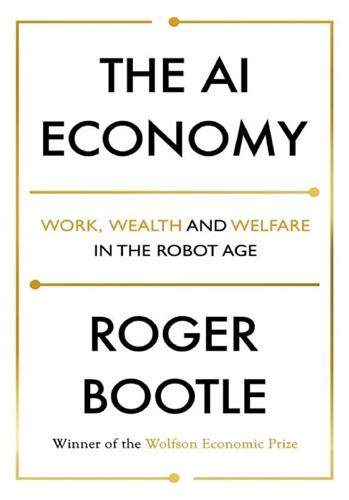
The AI Economy: Work, Wealth and Welfare in the Robot Age
by
Roger Bootle
Published 4 Sep 2019
Bootle, R. (2017) Making a Success of Brexit and Reforming the EU, London: Nicholas Brealey. Bostrom, N. (2014) Superintelligence: Paths, Dangers, Strategies, Oxford: Oxford University Press. Bregman, R. (2017) Utopia for Realists, London: Bloomsbury. Brockman, J. (2015) What to Think about Machines That Think, New York: HarperCollins. Brynjolfsson, E. and McAfee, A. (2016) The Second Machine Age: Work, Progress, and Prosperity in a Time of Brilliant Technologies, New York: W. W. Norton & Company. Caplan, B. (2018) The Case Against Education: Why the Education System Is a Waste of Time and Money, New Jersey: Princeton University Press. Carr, N. (2010) The Shallows, New York: W. W.
…
So the “Baumol” interpretation of the current technological slowdown really amounts to a subset of the school of economists who espouse “technological pessimism,” that is to say, those who believe that, in the wider sweep of history, recent and current technological developments don’t amount to very much. 28 Gordon, R. J. (2016) The Rise and Fall of American Economic Growth, USA: Princeton University Press. 29 Solow, R. (1987) We’d Better Watch Out New York Times Book Review, July 12, 1987. 30 Quoted in Brynjolfsson, E. and McAfee, A. (2016) The Second Machine Age, Work, Progress, And Prosperity in a Time of Brilliant Technologies, New York: W. W. Norton & Company, p. 112. 31 Feldstein, M. (2015) The US Underestimates Growth, USA: Wall Street Journal, May 18, 2015. Mind you, not all economists agree. A study by Byrne, D., Oliner, S., and Sichel, D. concludes the exact opposite.
…
These data come from World Inequality Database, https://wid.world/data/ and Office for National Statistics, Effects of taxes and benefits on household income: historical datasets, https://www.ons.gov.uk/peoplepopulationandcommunity/personalandhouseholdfinances/incomeandwealth/datasets/theeffectsoftaxesandbenefitsonhouseholdincomehistoricaldatasets 6 Quoted by Schwab, K. (2018) Shaping the Future of the Fourth Industrial Revolution, Penguin Radom House: London, p. 23. 7 Kelly, K. (2012) Better than Human: Why Robots Will – and Must – Take Our Jobs, Wired, December 24, 2012, p. 155. 8 Brynjolfsson, E. and McAfee, A. (2016) The Second Machine Age, Work, Progress, And Prosperity in a Time of Brilliant Technologies, New York: W. W. Norton & Company, p. 157. 9 Ibid., p. 179. 10 Piketty, T. (2014) Capital in the Twenty-First Century, Massachusetts: Harvard University Press. 11 See “Thomas Piketty’s Capital, Summarised in Four Paragraphs,” The Economist, May 2014, Lawrence Summers, “The Inequality Puzzle, Democracy: A Journal of Ideas, No. 33 (Summer 2014; Mervyn King, “Capital in the Twenty-First Century by Thomas Piketty,” review, The Daily Telegraph, May 10, 2014. 12 See M.

The Technology Trap: Capital, Labor, and Power in the Age of Automation
by
Carl Benedikt Frey
Published 17 Jun 2019
Indeed, even if the next three decades mirror the past three, that is not all that comforting since automation recently has pushed up joblessness among groups in the labor market and put downward pressure on the wages of those with no more than a high school degree. In their best-selling book The Second Machine Age, Erik Brynjolfsson and Andrew McAfee make a similar observation: “Technological progress is going to leave behind some people, perhaps even a lot of people, as it races ahead.… There’s never been a better time to be a worker with special skills or the right education, because these people can use technology to create and capture value.
…
Shannon, 1950, “Programming a Computer for Playing Chess,” Philosophical Magazine 41 (314): 256–75. 3. C. Koch, 2016, “How the Computer Beat the Go Master,” Scientific American 27 (4): 20. 4. F. Levy and R. J. Murnane, 2004, The New Division of Labor: How Computers Are Creating the Next Job Market (Princeton, NJ: Princeton University Press). 5. E. Brynjolfsson and A. McAfee, 2014, The Second Machine Age: Work, Progress, and Prosperity in a Time of Brilliant Technologies (New York: W. W. Norton), chapter 3, Kindle. 6. Koch, 2016, “How the Computer Beat the Go Master,” 20. 7. M. Fortunato et al. 2017, “Noisy Networks for Exploration,” preprint, submitted, https://arxiv.org/abs/1706.10295. 8.
…
Restrepo, 2018b, “The Race between Man and Machine: Implications of Technology for Growth, Factor Shares, and Employment,” American Economic Review 108 (6): 1488–542. 109. T. Berger and C. B. Frey, 2017a, “Industrial Renewal in the 21st Century: Evidence from US Cities,” Regional Studies 51 (3): 404–13. 110. Brynjolfsson and McAfee, 2014, The Second Machine Age, 11. 111. A. Goolsbee, 2018, “Public Policy in an AI Economy” (Working Paper 24653, National Bureau of Economic Research, Cambridge, MA). Chapter 13 1. See D. S. Landes, 1969, The Unbound Prometheus: Technological Change and Development in Western Europe from 1750 to the Present (Cambridge: Cambridge University Press), 4. 2.
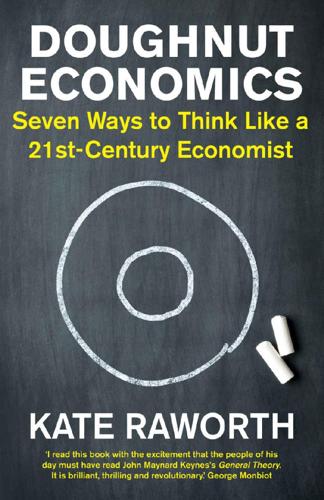
Doughnut Economics: Seven Ways to Think Like a 21st-Century Economist
by
Kate Raworth
Published 22 Mar 2017
‘If growth wanes,’ she warned a TED audience in 2015, ‘the risk to human progress and the risk to social and political instability rises and societies become dimmer, coarser, and smaller.’28 Since economic growth is deemed a political necessity by the keep-on-flying crowd – no matter how wealthy a country already is – it is no surprise to hear them argue that further growth in high-income countries is possible because it is coming and it can be made environmentally sustainable. First, growth is on the way, argue technology optimists such as Erik Brynjolfsson and Andrew McAfee: thanks to the exponential growth in digital processing power, we are entering the ‘second machine age’, in which the fast-rising productivity of robots will drive a new wave of GDP growth.29 What’s more, argue green growth advocates such as the UN, World Bank, IMF, OECD and EU, future growth can become green by decoupling GDP from ecological impacts. In other words, while GDP continues to grow over time, its associated resource use – such as freshwater use, fertiliser use, and greenhouse gas emissions – can fall at the same time.
…
Friedman, B. (2006) The Moral Consequence of Economic Growth. New York: Vintage Books, p. 4. 28. Moyo, D. (2015) ‘Economic growth has stalled. Let’s fix it’. TED Global, Geneva. https://www.ted.com/talks/dambisa_moyo_economic_growth_has_stalled_let_s_fix_it?language=en 29. Brynjolfsson, E. and MacAfee, A. (2014) The Second Machine Age. New York: W.W. Norton & Co. 30. Carbon Brief (2016) ‘The 35 countries cutting the link between economic growth and emissions’, 5 April 2016, available at: https://www.carbonbrief.org/the-35-countries-cutting-the-link-between-economic-growth-and-emissions. GDP data from the World Bank are given in constant local currency and consumption-based emissions data are from the Global Carbon Project’s CDIAC database. 31.
…
Page numbers in italics denote illustrations A Aalborg, Denmark, 290 Abbott, Anthony ‘Tony’, 31 ABCD group, 148 Abramovitz, Moses, 262 absolute decoupling, 260–61 Acemoglu, Daron, 86 advertising, 58, 106–7, 112, 281 Agbodjinou, Sénamé, 231 agriculture, 5, 46, 72–3, 148, 155, 178, 181, 183 Alaska, 9 Alaska Permanent Fund, 194 Alperovitz, Gar, 177 alternative enterprise designs, 190–91 altruism, 100, 104 Amazon, 192, 196, 276 Amazon rainforest, 105–6, 253 American Economic Association, 3 American Enterprise Institute, 67 American Tobacco Corporation, 107 Andes, 54 animal spirits, 110 Anthropocene epoch, 48, 253 anthropocentrism, 115 Apertuso, 230 Apple, 85, 192 Archer Daniels Midland (ADM), 148 Arendt, Hannah, 115–16 Argentina, 55, 274 Aristotle, 32, 272 Arrow, Kenneth, 134 Articles of Association and Memoranda, 233 Arusha, Tanzania, 202 Asia Wage Floor Alliance, 177 Asian financial crisis (1997), 90 Asknature.org, 232 Athens, 57 austerity, 163 Australia, 31, 103, 177, 180, 211, 224–6, 255, 260 Austria, 263, 274 availability bias, 112 AXIOM, 230 Axtell, Robert, 150 Ayres, Robert, 263 B B Corp, 241 Babylon, 13 Baker, Josephine, 157 balancing feedback loops, 138–41, 155, 271 Ballmer, Steve, 231 Bangla Pesa, 185–6, 293 Bangladesh, 10, 226 Bank for International Settlements, 256 Bank of America, 149 Bank of England, 145, 147, 256 banking, see under finance Barnes, Peter, 201 Barroso, José Manuel, 41 Bartlett, Albert Allen ‘Al’, 247 basic income, 177, 194, 199–201 basic personal values, 107–9 Basle, Switzerland, 80 Bauwens, Michel, 197 Beckerman, Wilfred, 258 Beckham, David, 171 Beech-Nut Packing Company, 107 behavioural economics, 11, 111–14 behavioural psychology, 103, 128 Beinhocker, Eric, 158 Belgium, 236, 252 Bentham, Jeremy, 98 Benyus, Janine, 116, 218, 223–4, 227, 232, 237, 241 Berger, John, 12, 281 Berlin Wall, 141 Bermuda, 277 Bernanke, Ben, 146 Bernays, Edward, 107, 112, 281–3 Bhopal gas disaster (1984), 9 Bible, 19, 114, 151 Big Bang (1986), 87 billionaires, 171, 200, 289 biodiversity, 10, 46, 48–9, 52, 85, 115, 155, 208, 210, 242, 299 as common pool resource, 201 and land conversion, 49 and inequality, 172 and reforesting, 50 biomass, 73, 118, 210, 212, 221 biomimicry, 116, 218, 227, 229 bioplastic, 224, 293 Birmingham, West Midlands, 10 Black, Fischer, 100–101 Blair, Anthony ‘Tony’, 171 Blockchain, 187, 192 blood donation, 104, 118 Body Shop, The, 232–4 Bogotá, Colombia, 119 Bolivia, 54 Boston, Massachusetts, 3 Bowen, Alex, 261 Bowles, Sam, 104 Box, George, 22 Boyce, James, 209 Brasselberg, Jacob, 187 Brazil, 124, 226, 281, 290 bread riots, 89 Brisbane, Australia, 31 Brown, Gordon, 146 Brynjolfsson, Erik, 193, 194, 258 Buddhism, 54 buen vivir, 54 Bullitt Center, Seattle, 217 Bunge, 148 Burkina Faso, 89 Burmark, Lynell, 13 business, 36, 43, 68, 88–9 automation, 191–5, 237, 258, 278 boom and bust, 246 and circular economy, 212, 215–19, 220, 224, 227–30, 232–4, 292 and complementary currencies, 184–5, 292 and core economy, 80 and creative destruction, 142 and feedback loops, 148 and finance, 183, 184 and green growth, 261, 265, 269 and households, 63, 68 living metrics, 241 and market, 68, 88 micro-businesses, 9 and neoliberalism, 67, 87 ownership, 190–91 and political funding, 91–2, 171–2 and taxation, 23, 276–7 workers’ rights, 88, 91, 269 butterfly economy, 220–42 C C–ROADS (Climate Rapid Overview and Decision Support), 153 C40 network, 280 calculating man, 98 California, United States, 213, 224, 293 Cambodia, 254 Cameron, David, 41 Canada, 196, 255, 260, 281, 282 cancer, 124, 159, 196 Capital Institute, 236 carbon emissions, 49–50, 59, 75 and decoupling, 260, 266 and forests, 50, 52 and inequality, 58 reduction of, 184, 201, 213, 216–18, 223–7, 239–41, 260, 266 stock–flow dynamics, 152–4 taxation, 201, 213 Cargill, 148 Carney, Mark, 256 Caterpillar, 228 Catholic Church, 15, 19 Cato Institute, 67 Celts, 54 central banks, 6, 87, 145, 146, 147, 183, 184, 256 Chang, Ha-Joon, 82, 86, 90 Chaplin, Charlie, 157 Chiapas, Mexico, 121–2 Chicago Board Options Exchange (CBOE), 100–101 Chicago School, 34, 99 Chile, 7, 42 China, 1, 7, 48, 154, 289–90 automation, 193 billionaires, 200, 289 greenhouse gas emissions, 153 inequality, 164 Lake Erhai doughnut analysis, 56 open-source design, 196 poverty reduction, 151, 198 renewable energy, 239 tiered pricing, 213 Chinese Development Bank, 239 chrematistics, 32, 273 Christianity, 15, 19, 114, 151 cigarettes, 107, 124 circular economy, 220–42, 257 Circular Flow diagram, 19–20, 28, 62–7, 64, 70, 78, 87, 91, 92, 93, 262 Citigroup, 149 Citizen Reaction Study, 102 civil rights movement, 77 Cleveland, Ohio, 190 climate change, 1, 3, 5, 29, 41, 45–53, 63, 74, 75–6, 91, 141, 144, 201 circular economy, 239, 241–2 dynamics of, 152–5 and G20, 31 and GDP growth, 255, 256, 260, 280 and heuristics, 114 and human rights, 10 and values, 126 climate positive cities, 239 closed systems, 74 coffee, 221 cognitive bias, 112–14 Colander, David, 137 Colombia, 119 common-pool resources, 82–3, 181, 201–2 commons, 69, 82–4, 287 collaborative, 78, 83, 191, 195, 196, 264, 292 cultural, 83 digital, 82, 83, 192, 197, 281 and distribution, 164, 180, 181–2, 205, 267 Embedded Economy, 71, 73, 77–8, 82–4, 85, 92 knowledge, 197, 201–2, 204, 229, 231, 292 commons and money creation, see complementary currencies natural, 82, 83, 180, 181–2, 201, 265 and regeneration, 229, 242, 267, 292 and state, 85, 93, 197, 237 and systems, 160 tragedy of, 28, 62, 69, 82, 181 triumph of, 83 and values, 106, 108 Commons Trusts, 201 complementary currencies, 158, 182–8, 236, 292 complex systems, 28, 129–62 complexity science, 136–7 Consumer Reaction Study, 102 consumerism, 58, 102, 121, 280–84 cooking, 45, 80, 186 Coote, Anna, 278 Copenhagen, Denmark, 124 Copernicus, Nicolaus, 14–15 copyright, 195, 197, 204 core economy, 79–80 Corporate To Do List, 215–19 Costa Rica, 172 Council of Economic Advisers, US, 6, 37 Cox, Jo, 117 cradle to cradle, 224 creative destruction, 142 Cree, 282 Crompton, Tom, 125–6 cross-border flows, 89–90 crowdsourcing, 204 cuckoos, 32, 35, 36, 38, 40, 54, 60, 159, 244, 256, 271 currencies, 182–8, 236, 274, 292 D da Vinci, Leonardo, 13, 94–5 Dallas, Texas, 120 Daly, Herman, 74, 143, 271 Danish Nudging Network, 124 Darwin, Charles, 14 Debreu, Gerard, 134 debt, 37, 146–7, 172–3, 182–5, 247, 255, 269 decoupling, 193, 210, 258–62, 273 defeat device software, 216 deforestation, 49–50, 74, 208, 210 degenerative linear economy, 211–19, 222–3, 237 degrowth, 244 DeMartino, George, 161 democracy, 77, 171–2, 258 demurrage, 274 Denmark, 180, 275, 290 deregulation, 82, 87, 269 derivatives, 100–101, 149 Devas, Charles Stanton, 97 Dey, Suchitra, 178 Diamond, Jared, 154 diarrhoea, 5 differential calculus, 131, 132 digital revolution, 191–2, 264 diversify–select–amplify, 158 double spiral, 54 Doughnut model, 10–11, 11, 23–5, 44, 51 and aspiration, 58–9, 280–84 big picture, 28, 42, 61–93 distribution, 29, 52, 57, 58, 76, 93, 158, 163–205 ecological ceiling, 10, 11, 44, 45, 46, 49, 51, 218, 254, 295, 298 goal, 25–8, 31–60 and governance, 57, 59 growth agnosticism, 29–30, 243–85 human nature, 28–9, 94–128 and population, 57–8 regeneration, 29, 158, 206–42 social foundation, 10, 11, 44, 45, 49, 51, 58, 77, 174, 200, 254, 295–6 systems, 28, 129–62 and technology, 57, 59 Douglas, Margaret, 78–9 Dreyfus, Louis, 148 ‘Dumb and Dumber in Macroeconomics’ (Solow), 135 Durban, South Africa, 214 E Earning by Learning, 120 Earth-system science, 44–53, 115, 216, 288, 298 Easter Island, 154 Easterlin, Richard, 265–6 eBay, 105, 192 eco-literacy, 115 ecological ceiling, 10, 11, 44, 45, 46, 49, 51, 218, 254, 295, 298 Ecological Performance Standards, 241 Econ 101 course, 8, 77 Economics (Lewis), 114 Economics (Samuelson), 19–20, 63–7, 70, 74, 78, 86, 91, 92, 93, 262 Economy for the Common Good, 241 ecosystem services, 7, 116, 269 Ecuador, 54 education, 9, 43, 45, 50–52, 85, 169–70, 176, 200, 249, 279 economic, 8, 11, 18, 22, 24, 36, 287–93 environmental, 115, 239–40 girls’, 57, 124, 178, 198 online, 83, 197, 264, 290 pricing, 118–19 efficient market hypothesis, 28, 62, 68, 87 Egypt, 48, 89 Eisenstein, Charles, 116 electricity, 9, 45, 236, 240 and Bangla Pesa, 186 cars, 231 Ethereum, 187–8 and MONIAC, 75, 262 pricing, 118, 213 see also renewable energy Elizabeth II, Queen of the United Kingdom, 145 Ellen MacArthur Foundation, 220 Embedded Economy, 71–93, 263 business, 88–9 commons, 82–4 Earth, 72–6 economy, 77–8 finance, 86–8 household, 78–81 market, 81–2 power, 91–92 society, 76–7 state, 84–6 trade, 89–90 employment, 36, 37, 51, 142, 176 automation, 191–5, 237, 258, 278 labour ownership, 188–91 workers’ rights, 88, 90, 269 Empty World, 74 Engels, Friedrich, 88 environment and circular economy, 220–42, 257 conservation, 121–2 and degenerative linear economy, 211–19, 222–3 degradation, 5, 9, 10, 29, 44–53, 74, 154, 172, 196, 206–42 education on, 115, 239–40 externalities, 152 fair share, 216–17 and finance, 234–7 generosity, 218–19, 223–7 green growth, 41, 210, 243–85 nudging, 123–5 taxation and quotas, 213–14, 215 zero impact, 217–18, 238, 241 Environmental Dashboard, 240–41 environmental economics, 7, 11, 114–16 Environmental Kuznets Curve, 207–11, 241 environmental space, 54 Epstein, Joshua, 150 equilibrium theory, 134–62 Ethereum, 187–8 ethics, 160–62 Ethiopia, 9, 226, 254 Etsy, 105 Euclid, 13, 15 European Central Bank, 145, 275 European Commission, 41 European Union (EU), 92, 153, 210, 222, 255, 258 Evergreen Cooperatives, 190 Evergreen Direct Investing (EDI), 273 exogenous shocks, 141 exponential growth, 39, 246–85 externalities, 143, 152, 213 Exxon Valdez oil spill (1989), 9 F Facebook, 192 fair share, 216–17 Fama, Eugene, 68, 87 fascism, 234, 277 Federal Reserve, US, 87, 145, 146, 271, 282 feedback loops, 138–41, 143, 148, 155, 250, 271 feminist economics, 11, 78–81, 160 Ferguson, Thomas, 91–2 finance animal spirits, 110 bank runs, 139 Black–Scholes model, 100–101 boom and bust, 28–9, 110, 144–7 and Circular Flow, 63–4, 87 and complex systems, 134, 138, 139, 140, 141, 145–7 cross-border flows, 89 deregulation, 87 derivatives, 100–101, 149 and distribution, 169, 170, 173, 182–4, 198–9, 201 and efficient market hypothesis, 63, 68 and Embedded Economy, 71, 86–8 and financial-instability hypothesis, 87, 146 and GDP growth, 38 and media, 7–8 mobile banking, 199–200 and money creation, 87, 182–5 and regeneration, 227, 229, 234–7 in service to life, 159, 234–7 stakeholder finance, 190 and sustainability, 216, 235–6, 239 financial crisis (2008), 1–4, 5, 40, 63, 86, 141, 144, 278, 290 and efficient market hypothesis, 87 and equilibrium theory, 134, 145 and financial-instability hypothesis, 87 and inequality, 90, 170, 172, 175 and money creation, 182 and worker’s rights, 278 financial flows, 89 Financial Times, 183, 266, 289 financial-instability hypothesis, 87, 146 First Green Bank, 236 First World War (1914–18), 166, 170 Fisher, Irving, 183 fluid values, 102, 106–9 food, 3, 43, 45, 50, 54, 58, 59, 89, 198 food banks, 165 food price crisis (2007–8), 89, 90, 180 Ford, 277–8 foreign direct investment, 89 forest conservation, 121–2 fossil fuels, 59, 73, 75, 92, 212, 260, 263 Foundations of Economic Analysis (Samuelson), 17–18 Foxconn, 193 framing, 22–3 France, 43, 165, 196, 238, 254, 256, 281, 290 Frank, Robert, 100 free market, 33, 37, 67, 68, 70, 81–2, 86, 90 free open-source hardware (FOSH), 196–7 free open-source software (FOSS), 196 free trade, 70, 90 Freeman, Ralph, 18–19 freshwater cycle, 48–9 Freud, Sigmund, 107, 281 Friedman, Benjamin, 258 Friedman, Milton, 34, 62, 66–9, 84–5, 88, 99, 183, 232 Friends of the Earth, 54 Full World, 75 Fuller, Buckminster, 4 Fullerton, John, 234–6, 273 G G20, 31, 56, 276, 279–80 G77, 55 Gal, Orit, 141 Gandhi, Mohandas, 42, 293 Gangnam Style, 145 Gardens of Democracy, The (Liu & Hanauer), 158 gender equality, 45, 51–2, 57, 78–9, 85, 88, 118–19, 124, 171, 198 generosity, 218–19, 223–9 geometry, 13, 15 George, Henry, 149, 179 Georgescu-Roegen, Nicholas, 252 geothermal energy, 221 Gerhardt, Sue, 283 Germany, 2, 41, 100, 118, 165, 189, 211, 213, 254, 256, 260, 274 Gessel, Silvio, 274 Ghent, Belgium, 236 Gift Relationship, The (Titmuss), 118–19 Gigerenzer, Gerd, 112–14 Gintis, Herb, 104 GiveDirectly, 200 Glass–Steagall Act (1933), 87 Glennon, Roger, 214 Global Alliance for Tax Justice, 277 global material footprints, 210–11 Global Village Construction Set, 196 globalisation, 89 Goerner, Sally, 175–6 Goffmann, Erving, 22 Going for Growth, 255 golden rule, 91 Goldman Sachs, 149, 170 Gómez-Baggethun, Erik, 122 Goodall, Chris, 211 Goodwin, Neva, 79 Goody, Jade, 124 Google, 192 Gore, Albert ‘Al’, 172 Gorgons, 244, 256, 257, 266 graffiti, 15, 25, 287 Great Acceleration, 46, 253–4 Great Depression (1929–39), 37, 70, 170, 173, 183, 275, 277, 278 Great Moderation, 146 Greece, Ancient, 4, 13, 32, 48, 54, 56–7, 160, 244 green growth, 41, 210, 243–85 Greenham, Tony, 185 greenhouse gas emissions, 31, 46, 50, 75–6, 141, 152–4 and decoupling, 260, 266 and Environmental Kuznets Curve, 208, 210 and forests, 50, 52 and G20, 31 and inequality, 58 reduction of, 184, 201–2, 213, 216–18, 223–7, 239–41, 256, 259–60, 266, 298 stock–flow dynamics, 152–4 and taxation, 201, 213 Greenland, 141, 154 Greenpeace, 9 Greenspan, Alan, 87 Greenwich, London, 290 Grenoble, France, 281 Griffiths, Brian, 170 gross domestic product (GDP), 25, 31–2, 35–43, 57, 60, 84, 164 as cuckoo, 32, 35, 36, 38, 40, 54, 60, 159, 244, 256, 271 and Environmental Kuznets Curve, 207–11 and exponential growth, 39, 53, 246–85 and growth agnosticism, 29–30, 240, 243–85 and inequality, 173 and Kuznets Curve, 167, 173, 188–9 gross national product (GNP), 36–40 Gross World Product, 248 Grossman, Gene, 207–8, 210 ‘grow now, clean up later’, 207 Guatemala, 196 H Haifa, Israel, 120 Haldane, Andrew, 146 Han Dynasty, 154 Hanauer, Nick, 158 Hansen, Pelle, 124 Happy Planet Index, 280 Hardin, Garrett, 69, 83, 181 Harvard University, 2, 271, 290 von Hayek, Friedrich, 7–8, 62, 66, 67, 143, 156, 158 healthcare, 43, 50, 57, 85, 123, 125, 170, 176, 200, 269, 279 Heilbroner, Robert, 53 Henry VIII, King of England and Ireland, 180 Hepburn, Cameron, 261 Herbert Simon, 111 heuristics, 113–14, 118, 123 high-income countries growth, 30, 244–5, 254–72, 282 inequality, 165, 168, 169, 171 labour, 177, 188–9, 278 overseas development assistance (ODA), 198–9 resource intensive lifestyles, 46, 210–11 trade, 90 Hippocrates, 160 History of Economic Analysis (Schumpeter), 21 HIV/AIDS, 123 Holocene epoch, 46–8, 75, 115, 253 Homo economicus, 94–103, 109, 127–8 Homo sapiens, 38, 104, 130 Hong Kong, 180 household, 78 housing, 45, 59, 176, 182–3, 269 Howe, Geoffrey, 67 Hudson, Michael, 183 Human Development Index, 9, 279 human nature, 28 human rights, 10, 25, 45, 49, 50, 95, 214, 233 humanistic economics, 42 hydropower, 118, 260, 263 I Illinois, United States, 179–80 Imago Mundi, 13 immigration, 82, 199, 236, 266 In Defense of Economic Growth (Beckerman), 258 Inclusive Wealth Index, 280 income, 51, 79–80, 82, 88, 176–8, 188–91, 194, 199–201 India, 2, 9, 10, 42, 124, 164, 178, 196, 206–7, 242, 290 Indonesia, 90, 105–6, 164, 168, 200 Indus Valley civilisation, 48 inequality, 1, 5, 25, 41, 63, 81, 88, 91, 148–52, 209 and consumerism, 111 and democracy, 171 and digital revolution, 191–5 and distribution, 163–205 and environmental degradation, 172 and GDP growth, 173 and greenhouse gas emissions, 58 and intellectual property, 195–8 and Kuznets Curve, 29, 166–70, 173–4 and labour ownership, 188–91 and land ownership, 178–82 and money creation, 182–8 and social welfare, 171 Success to the Successful, 148, 149, 151, 166 inflation, 36, 248, 256, 275 insect pollination services, 7 Institute of Economic Affairs, 67 institutional economics, 11 intellectual property rights, 195–8, 204 interest, 36, 177, 182, 184, 275–6 Intergovernmental Panel on Climate Change, 25 International Monetary Fund (IMF), 170, 172, 173, 183, 255, 258, 271 Internet, 83–4, 89, 105, 192, 202, 264 Ireland, 277 Iroquois Onondaga Nation, 116 Israel, 100, 103, 120 Italy, 165, 196, 254 J Jackson, Tim, 58 Jakubowski, Marcin, 196 Jalisco, Mexico, 217 Japan, 168, 180, 211, 222, 254, 256, 263, 275 Jevons, William Stanley, 16, 97–8, 131, 132, 137, 142 John Lewis Partnership, 190 Johnson, Lyndon Baines, 37 Johnson, Mark, 38 Johnson, Todd, 191 JPMorgan Chase, 149, 234 K Kahneman, Daniel, 111 Kamkwamba, William, 202, 204 Kasser, Tim, 125–6 Keen, Steve, 146, 147 Kelly, Marjorie, 190–91, 233 Kennedy, John Fitzgerald, 37, 250 Kennedy, Paul, 279 Kenya, 118, 123, 180, 185–6, 199–200, 226, 292 Keynes, John Maynard, 7–8, 22, 66, 69, 134, 184, 251, 277–8, 284, 288 Kick It Over movement, 3, 289 Kingston, London, 290 Knight, Frank, 66, 99 knowledge commons, 202–4, 229, 292 Kokstad, South Africa, 56 Kondratieff waves, 246 Korzybski, Alfred, 22 Krueger, Alan, 207–8, 210 Kuhn, Thomas, 22 Kumhof, Michael, 172 Kuwait, 255 Kuznets, Simon, 29, 36, 39–40, 166–70, 173, 174, 175, 204, 207 KwaZulu Natal, South Africa, 56 L labour ownership, 188–91 Lake Erhai, Yunnan, 56 Lakoff, George, 23, 38, 276 Lamelara, Indonesia, 105–6 land conversion, 49, 52, 299 land ownership, 178–82 land-value tax, 73, 149, 180 Landesa, 178 Landlord’s Game, The, 149 law of demand, 16 laws of motion, 13, 16–17, 34, 129, 131 Lehman Brothers, 141 Leopold, Aldo, 115 Lesotho, 118, 199 leverage points, 159 Lewis, Fay, 178 Lewis, Justin, 102 Lewis, William Arthur, 114, 167 Lietaer, Bernard, 175, 236 Limits to Growth, 40, 154, 258 Linux, 231 Liu, Eric, 158 living metrics, 240–42 living purpose, 233–4 Lomé, Togo, 231 London School of Economics (LSE), 2, 34, 65, 290 London Underground, 12 loss aversion, 112 low-income countries, 90, 164–5, 168, 173, 180, 199, 201, 209, 226, 254, 259 Lucas, Robert, 171 Lula da Silva, Luiz Inácio, 124 Luxembourg, 277 Lyle, John Tillman, 214 Lyons, Oren, 116 M M–PESA, 199–200 MacDonald, Tim, 273 Machiguenga, 105–6 MacKenzie, Donald, 101 macroeconomics, 36, 62–6, 76, 80, 134–5, 145, 147, 150, 244, 280 Magie, Elizabeth, 149, 153 Malala effect, 124 malaria, 5 Malawi, 118, 202, 204 Malaysia, 168 Mali, Taylor, 243 Malthus, Thomas, 252 Mamsera Rural Cooperative, 190 Manhattan, New York, 9, 41 Mani, Muthukumara, 206 Manitoba, 282 Mankiw, Gregory, 2, 34 Mannheim, Karl, 22 Maoris, 54 market, 81–2 and business, 88 circular flow, 64 and commons, 83, 93, 181, 200–201 efficiency of, 28, 62, 68, 87, 148, 181 and equilibrium theory, 131–5, 137, 143–7, 155, 156 free market, 33, 37, 67–70, 90, 208 and households, 63, 69, 78, 79 and maxi-max rule, 161 and pricing, 117–23, 131, 160 and rational economic man, 96, 100–101, 103, 104 and reciprocity, 105, 106 reflexivity of, 144–7 and society, 69–70 and state, 84–6, 200, 281 Marshall, Alfred, 17, 98, 133, 165, 253, 282 Marx, Karl, 88, 142, 165, 272 Massachusetts Institute of Technology (MIT), 17–20, 152–5 massive open online courses (MOOCs), 290 Matthew Effect, 151 Max-Neef, Manfred, 42 maxi-max rule, 161 maximum wage, 177 Maya civilisation, 48, 154 Mazzucato, Mariana, 85, 195, 238 McAfee, Andrew, 194, 258 McDonough, William, 217 Meadows, Donella, 40, 141, 159, 271, 292 Medusa, 244, 257, 266 Merkel, Angela, 41 Messerli, Elspeth, 187 Metaphors We Live By (Lakoff & Johnson), 38 Mexico, 121–2, 217 Michaels, Flora S., 6 micro-businesses, 9, 173, 178 microeconomics, 132–4 microgrids, 187–8 Micronesia, 153 Microsoft, 231 middle class, 6, 46, 58 middle-income countries, 90, 164, 168, 173, 180, 226, 254 migration, 82, 89–90, 166, 195, 199, 236, 266, 286 Milanovic, Branko, 171 Mill, John Stuart, 33–4, 73, 97, 250, 251, 283, 284, 288 Millo, Yuval, 101 minimum wage, 82, 88, 176 Minsky, Hyman, 87, 146 Mises, Ludwig von, 66 mission zero, 217 mobile banking, 199–200 mobile phones, 222 Model T revolution, 277–8 Moldova, 199 Mombasa, Kenya, 185–6 Mona Lisa (da Vinci), 94 money creation, 87, 164, 177, 182–8, 205 MONIAC (Monetary National Income Analogue Computer), 64–5, 75, 142, 262 Monoculture (Michaels), 6 Monopoly, 149 Mont Pelerin Society, 67, 93 Moral Consequences of Economic Growth, The (Friedman), 258 moral vacancy, 41 Morgan, Mary, 99 Morogoro, Tanzania, 121 Moyo, Dambisa, 258 Muirhead, Sam, 230, 231 MultiCapital Scorecard, 241 Murphy, David, 264 Murphy, Richard, 185 musical tastes, 110 Myriad Genetics, 196 N national basic income, 177 Native Americans, 115, 116, 282 natural capital, 7, 116, 269 Natural Economic Order, The (Gessel), 274 Nedbank, 216 negative externalities, 213 negative interest rates, 275–6 neoclassical economics, 134, 135 neoliberalism, 7, 62–3, 67–70, 81, 83, 84, 88, 93, 143, 170, 176 Nepal, 181, 199 Nestlé, 217 Netherlands, 211, 235, 224, 226, 238, 277 networks, 110–11, 117, 118, 123, 124–6, 174–6 neuroscience, 12–13 New Deal, 37 New Economics Foundation, 278, 283 New Year’s Day, 124 New York, United States, 9, 41, 55 Newlight Technologies, 224, 226, 293 Newton, Isaac, 13, 15–17, 32–3, 95, 97, 129, 131, 135–7, 142, 145, 162 Nicaragua, 196 Nigeria, 164 nitrogen, 49, 52, 212–13, 216, 218, 221, 226, 298 ‘no pain, no gain’, 163, 167, 173, 204, 209 Nobel Prize, 6–7, 43, 83, 101, 167 Norway, 281 nudging, 112, 113, 114, 123–6 O Obama, Barack, 41, 92 Oberlin, Ohio, 239, 240–41 Occupy movement, 40, 91 ocean acidification, 45, 46, 52, 155, 242, 298 Ohio, United States, 190, 239 Okun, Arthur, 37 onwards and upwards, 53 Open Building Institute, 196 Open Source Circular Economy (OSCE), 229–32 open systems, 74 open-source design, 158, 196–8, 265 open-source licensing, 204 Organisation for Economic Co-operation and Development (OECD), 38, 210, 255–6, 258 Origin of Species, The (Darwin), 14 Ormerod, Paul, 110, 111 Orr, David, 239 Ostrom, Elinor, 83, 84, 158, 160, 181–2 Ostry, Jonathan, 173 OSVehicle, 231 overseas development assistance (ODA), 198–200 ownership of wealth, 177–82 Oxfam, 9, 44 Oxford University, 1, 36 ozone layer, 9, 50, 115 P Pachamama, 54, 55 Pakistan, 124 Pareto, Vilfredo, 165–6, 175 Paris, France, 290 Park 20|20, Netherlands, 224, 226 Parker Brothers, 149 Patagonia, 56 patents, 195–6, 197, 204 patient capital, 235 Paypal, 192 Pearce, Joshua, 197, 203–4 peer-to-peer networks, 187, 192, 198, 203, 292 People’s QE, 184–5 Perseus, 244 Persia, 13 Peru, 2, 105–6 Phillips, Adam, 283 Phillips, William ‘Bill’, 64–6, 75, 142, 262 phosphorus, 49, 52, 212–13, 218, 298 Physiocrats, 73 Pickett, Kate, 171 pictures, 12–25 Piketty, Thomas, 169 Playfair, William, 16 Poincaré, Henri, 109, 127–8 Polanyi, Karl, 82, 272 political economy, 33–4, 42 political funding, 91–2, 171–2 political voice, 43, 45, 51–2, 77, 117 pollution, 29, 45, 52, 85, 143, 155, 206–17, 226, 238, 242, 254, 298 population, 5, 46, 57, 155, 199, 250, 252, 254 Portugal, 211 post-growth society, 250 poverty, 5, 9, 37, 41, 50, 88, 118, 148, 151 emotional, 283 and inequality, 164–5, 168–9, 178 and overseas development assistance (ODA), 198–200 and taxation, 277 power, 91–92 pre-analytic vision, 21–2 prescription medicines, 123 price-takers, 132 prices, 81, 118–23, 131, 160 Principles of Economics (Mankiw), 34 Principles of Economics (Marshall), 17, 98 Principles of Political Economy (Mill), 288 ProComposto, 226 Propaganda (Bernays), 107 public relations, 107, 281 public spending v. investment, 276 public–private patents, 195 Putnam, Robert, 76–7 Q quantitative easing (QE), 184–5 Quebec, 281 Quesnay, François, 16, 73 R Rabot, Ghent, 236 Rancière, Romain, 172 rating and review systems, 105 rational economic man, 94–103, 109, 111, 112, 126, 282 Reagan, Ronald, 67 reciprocity, 103–6, 117, 118, 123 reflexivity of markets, 144 reinforcing feedback loops, 138–41, 148, 250, 271 relative decoupling, 259 renewable energy biomass energy, 118, 221 and circular economy, 221, 224, 226, 235, 238–9, 274 and commons, 83, 85, 185, 187–8, 192, 203, 264 geothermal energy, 221 and green growth, 257, 260, 263, 264, 267 hydropower, 118, 260, 263 pricing, 118 solar energy, see solar energy wave energy, 221 wind energy, 75, 118, 196, 202–3, 221, 233, 239, 260, 263 rentier sector, 180, 183, 184 reregulation, 82, 87, 269 resource flows, 175 resource-intensive lifestyles, 46 Rethinking Economics, 289 Reynebeau, Guy, 237 Ricardo, David, 67, 68, 73, 89, 250 Richardson, Katherine, 53 Rifkin, Jeremy, 83, 264–5 Rise and Fall of the Great Powers, The (Kennedy), 279 risk, 112, 113–14 Robbins, Lionel, 34 Robinson, James, 86 Robinson, Joan, 142 robots, 191–5, 237, 258, 278 Rockefeller Foundation, 135 Rockford, Illinois, 179–80 Rockström, Johan, 48, 55 Roddick, Anita, 232–4 Rogoff, Kenneth, 271, 280 Roman Catholic Church, 15, 19 Rombo, Tanzania, 190 Rome, Ancient, 13, 48, 154 Romney, Mitt, 92 Roosevelt, Franklin Delano, 37 rooted membership, 190 Rostow, Walt, 248–50, 254, 257, 267–70, 284 Ruddick, Will, 185 rule of thumb, 113–14 Ruskin, John, 42, 223 Russia, 200 rust belt, 90, 239 S S curve, 251–6 Sainsbury’s, 56 Samuelson, Paul, 17–21, 24–5, 38, 62–7, 70, 74, 84, 91, 92, 93, 262, 290–91 Sandel, Michael, 41, 120–21 Sanergy, 226 sanitation, 5, 51, 59 Santa Fe, California, 213 Santinagar, West Bengal, 178 São Paolo, Brazil, 281 Sarkozy, Nicolas, 43 Saumweder, Philipp, 226 Scharmer, Otto, 115 Scholes, Myron, 100–101 Schumacher, Ernst Friedrich, 42, 142 Schumpeter, Joseph, 21 Schwartz, Shalom, 107–9 Schwarzenegger, Arnold, 163, 167, 204 ‘Science and Complexity’ (Weaver), 136 Scotland, 57 Seaman, David, 187 Seattle, Washington, 217 second machine age, 258 Second World War (1939–45), 18, 37, 70, 170 secular stagnation, 256 self-interest, 28, 68, 96–7, 99–100, 102–3 Selfish Society, The (Gerhardt), 283 Sen, Amartya, 43 Shakespeare, William, 61–3, 67, 93 shale gas, 264, 269 Shang Dynasty, 48 shareholders, 82, 88, 189, 191, 227, 234, 273, 292 sharing economy, 264 Sheraton Hotel, Boston, 3 Siegen, Germany, 290 Silicon Valley, 231 Simon, Julian, 70 Sinclair, Upton, 255 Sismondi, Jean, 42 slavery, 33, 77, 161 Slovenia, 177 Small Is Beautiful (Schumacher), 42 smart phones, 85 Smith, Adam, 33, 57, 67, 68, 73, 78–9, 81, 96–7, 103–4, 128, 133, 160, 181, 250 social capital, 76–7, 122, 125, 172 social contract, 120, 125 social foundation, 10, 11, 44, 45, 49, 51, 58, 77, 174, 200, 254, 295–6 social media, 83, 281 Social Progress Index, 280 social pyramid, 166 society, 76–7 solar energy, 59, 75, 111, 118, 187–8, 190 circular economy, 221, 222, 223, 224, 226–7, 239 commons, 203 zero-energy buildings, 217 zero-marginal-cost revolution, 84 Solow, Robert, 135, 150, 262–3 Soros, George, 144 South Africa, 56, 177, 214, 216 South Korea, 90, 168 South Sea Bubble (1720), 145 Soviet Union (1922–91), 37, 67, 161, 279 Spain, 211, 238, 256 Spirit Level, The (Wilkinson & Pickett), 171 Sraffa, Piero, 148 St Gallen, Switzerland, 186 Stages of Economic Growth, The (Rostow), 248–50, 254 stakeholder finance, 190 Standish, Russell, 147 state, 28, 33, 69–70, 78, 82, 160, 176, 180, 182–4, 188 and commons, 85, 93, 197, 237 and market, 84–6, 200, 281 partner state, 197, 237–9 and robots, 195 stationary state, 250 Steffen, Will, 46, 48 Sterman, John, 66, 143, 152–4 Steuart, James, 33 Stiglitz, Joseph, 43, 111, 196 stocks and flows, 138–41, 143, 144, 152 sub-prime mortgages, 141 Success to the Successful, 148, 149, 151, 166 Sugarscape, 150–51 Summers, Larry, 256 Sumner, Andy, 165 Sundrop Farms, 224–6 Sunstein, Cass, 112 supply and demand, 28, 132–6, 143, 253 supply chains, 10 Sweden, 6, 255, 275, 281 swishing, 264 Switzerland, 42, 66, 80, 131, 186–7, 275 T Tableau économique (Quesnay), 16 tabula rasa, 20, 25, 63, 291 takarangi, 54 Tanzania, 121, 190, 202 tar sands, 264, 269 taxation, 78, 111, 165, 170, 176, 177, 237–8, 276–9 annual wealth tax, 200 environment, 213–14, 215 global carbon tax, 201 global financial transactions tax, 201, 235 land-value tax, 73, 149, 180 non-renewable resources, 193, 237–8, 278–9 People’s QE, 185 tax relief v. tax justice, 23, 276–7 TED (Technology, Entertainment, Design), 202, 258 Tempest, The (Shakespeare), 61, 63, 93 Texas, United States, 120 Thailand, 90, 200 Thaler, Richard, 112 Thatcher, Margaret, 67, 69, 76 Theory of Moral Sentiments (Smith), 96 Thompson, Edward Palmer, 180 3D printing, 83–4, 192, 198, 231, 264 thriving-in-balance, 54–7, 62 tiered pricing, 213–14 Tigray, Ethiopia, 226 time banking, 186 Titmuss, Richard, 118–19 Toffler, Alvin, 12, 80 Togo, 231, 292 Torekes, 236–7 Torras, Mariano, 209 Torvalds, Linus, 231 trade, 62, 68–9, 70, 89–90 trade unions, 82, 176, 189 trademarks, 195, 204 Transatlantic Trade and Investment Partnership (TTIP), 92 transport, 59 trickle-down economics, 111, 170 Triodos, 235 Turkey, 200 Tversky, Amos, 111 Twain, Mark, 178–9 U Uganda, 118, 125 Ulanowicz, Robert, 175 Ultimatum Game, 105, 117 unemployment, 36, 37, 276, 277–9 United Kingdom Big Bang (1986), 87 blood donation, 118 carbon dioxide emissions, 260 free trade, 90 global material footprints, 211 money creation, 182 MONIAC (Monetary National Income Analogue Computer), 64–5, 75, 142, 262 New Economics Foundation, 278, 283 poverty, 165, 166 prescription medicines, 123 wages, 188 United Nations, 55, 198, 204, 255, 258, 279 G77 bloc, 55 Human Development Index, 9, 279 Sustainable Development Goals, 24, 45 United States American Economic Association meeting (2015), 3 blood donation, 118 carbon dioxide emissions, 260 Congress, 36 Council of Economic Advisers, 6, 37 Earning by Learning, 120 Econ 101 course, 8, 77 Exxon Valdez oil spill (1989), 9 Federal Reserve, 87, 145, 146, 271, 282 free trade, 90 Glass–Steagall Act (1933), 87 greenhouse gas emissions, 153 global material footprint, 211 gross national product (GNP), 36–40 inequality, 170, 171 land-value tax, 73, 149, 180 political funding, 91–2, 171 poverty, 165, 166 productivity and employment, 193 rust belt, 90, 239 Transatlantic Trade and Investment Partnership (TTIP), 92 wages, 188 universal basic income, 200 University of Berkeley, 116 University of Denver, 160 urbanisation, 58–9 utility, 35, 98, 133 V values, 6, 23, 34, 35, 42, 117, 118, 121, 123–6 altruism, 100, 104 anthropocentric, 115 extrinsic, 115 fluid, 28, 102, 106–9 and networks, 110–11, 117, 118, 123, 124–6 and nudging, 112, 113, 114, 123–6 and pricing, 81, 120–23 Veblen, Thorstein, 82, 109, 111, 142 Venice, 195 verbal framing, 23 Verhulst, Pierre, 252 Victor, Peter, 270 Viner, Jacob, 34 virtuous cycles, 138, 148 visual framing, 23 Vitruvian Man, 13–14 Volkswagen, 215–16 W Wacharia, John, 186 Wall Street, 149, 234, 273 Wallich, Henry, 282 Walras, Léon, 131, 132, 133–4, 137 Ward, Barbara, 53 Warr, Benjamin, 263 water, 5, 9, 45, 46, 51, 54, 59, 79, 213–14 wave energy, 221 Ways of Seeing (Berger), 12, 281 Wealth of Nations, The (Smith), 74, 78, 96, 104 wealth ownership, 177–82 Weaver, Warren, 135–6 weightless economy, 261–2 WEIRD (Western, educated, industrialised, rich, democratic), 103–5, 110, 112, 115, 117, 282 West Bengal, India, 124, 178 West, Darrell, 171–2 wetlands, 7 whale hunting, 106 Wiedmann, Tommy, 210 Wikipedia, 82, 223 Wilkinson, Richard, 171 win–win trade, 62, 68, 89 wind energy, 75, 118, 196, 202–3, 221, 233, 239, 260, 263 Wizard of Oz, The, 241 Woelab, 231, 293 Wolf, Martin, 183, 266 women’s rights, 33, 57, 107, 160, 201 and core economy, 69, 79–81 education, 57, 124, 178, 198 and land ownership, 178 see also gender equality workers’ rights, 88, 91, 269 World 3 model, 154–5 World Bank, 6, 41, 119, 164, 168, 171, 206, 255, 258 World No Tobacco Day, 124 World Trade Organization, 6, 89 worldview, 22, 54, 115 X xenophobia, 266, 277, 286 Xenophon, 4, 32, 56–7, 160 Y Yandle, Bruce, 208 Yang, Yuan, 1–3, 289–90 yin yang, 54 Yousafzai, Malala, 124 YouTube, 192 Yunnan, China, 56 Z Zambia, 10 Zanzibar, 9 Zara, 276 Zeitvorsoge, 186–7 zero environmental impact, 217–18, 238, 241 zero-hour contracts, 88 zero-humans-required production, 192 zero-interest loans, 183 zero-marginal-cost revolution, 84, 191, 264 zero-waste manufacturing, 227 Zinn, Howard, 77 PICTURE ACKNOWLEDGEMENTS Illustrations are reproduced by kind permission of: archive.org

Exponential: How Accelerating Technology Is Leaving Us Behind and What to Do About It
by
Azeem Azhar
Published 6 Sep 2021
The notion of mass automation and job losses hangs over Silicon Valley like the low-lying San Francisco fog. While the argument is an old one, it re-emerged in the early years of the twenty-first century – as the advances in AI that we explored in Chapter 1 started to come to fruition. Bookshops were soon awash with books called things like The Second Machine Age and Surviving AI – all making, in one way or another, a devilishly simple argument: artificial intelligence changes the game. We have a generalised technology that is adaptable; it can be used in many different circumstances. And it is adaptive; it learns from experience. As a result, it will continually improve over time, making large chunks of the workforce redundant.
…
Howard, The Global Disinformation Order: 2019 Global Inventory of Organised Social Media Manipulation (The Project on Computational Propaganda, 26 September 2019) <https://comprop.oii.ox.ac.uk/research/posts/the-global-disinformation-order-2019-global-inventory-of-organised-social-media-manipulation/#continue> [accessed 2 January 2021] Bremmer, Ian, ‘Why We Need a World Data Organization. Now.’, GZERO, 25 November 2019 <https://www.gzeromedia.com/why-we-need-a-world-data-organization-now> [accessed 20 March 2020] Brynjolfsson, Erik, and Andrew McAfee, The Second Machine Age: Work, Progress, and Prosperity in a Time of Brilliant Technologies (New York: W. W. Norton & Company, 2014) Buchanan, Ben, and Fiona S. Cunningham, ‘Preparing the Cyber Battlefield: Assessing a Novel Escalation Risk in a Sino-American Crisis’, Texas National Security Review, October 2020 <http://tnsr.org/2020/10/preparing-the-cyber-battlefield-assessing-a-novel-escalation-risk-in-a-sino-american-crisis/> [accessed 23 April 2021] Choudary, Sangeet Paul, Platform Scale: How an Emerging Business Model Helps Startups Build Large Empires with Minimum Investment, 1st edn (Singapore: Platform Thinking Labs Pte.
…
Abu Dhabi, UAE, 250 Acemoglu, Daron, 139 Acorn Computers, 16, 21 Ada Lovelace Institute, 8 additive manufacturing, 43–4, 46, 48, 88, 166, 169, 175–9 Adidas, 176 advertising, 94, 112–13, 116, 117, 227–8 AdWords, 227 aeroponics, 171 Afghanistan, 38, 205 Africa, 177–8, 182–3 Aftenposten, 216 Age of Spiritual Machines, The (Kurzweil), 77 agglomeration, 181 Air Jordan sneakers, 102 Airbnb, 102, 188 aircraft, 49–50 Alexandria, Egypt, 180 AlexNet, 33 Algeciras, HMM 61 Alibaba, 48, 102, 108, 111, 122 Alipay, 111 Allen, Robert, 80 Alphabet, 65, 113–14, 131, 163 aluminium, 170 Amazon, 65, 67–8, 94, 104, 108, 112, 122, 135–6 Alexa, 25, 117 automation, 135–6, 137, 139, 154 collective bargaining and, 163 Covid-19 pandemic (2020–21), 135–6 drone sales, 206 Ecobee and, 117 Go stores, 136 Kiva Systems acquisition (2012), 136 management, 154 Mechanical Turk, 142–3, 144, 145 monopoly, 115, 117, 122 Prime, 136, 154 R&D, 67–8, 113 Ami Pro, 99 Amiga, 16 Anarkali, Lahore, 102 anchoring bias, 74 Android, 85, 94, 117, 120 Angola, 186 Ant Brain, 111 Ant Financial, 111–12 antitrust laws, 114, 119–20 Apache HTTP Server, 242 Appelbaum, Binyamin, 63 Apple, 47, 62, 65, 85, 94, 104, 108, 112, 122 App Store, 105, 112, 115 chip production, 113 Covid-19 pandemic (2019–21), 222–3 data collection, 228 iOS, 85 iPhone, 47, 62, 85, 94, 105 media subscription, 112 watches, 112 APT33 hacker group, 198 Aral, Sinan, 238 Aramco, 108, 198 Armenia, 206–7 Arthur, William Brian, 110, 123 artificial intelligence, 4, 8, 31–4, 54, 88, 113, 249 academic brain drain, 118 automation, 125–42 data and, 31–2, 142 data network effect, 106–7 drone technology and, 208, 214 education and, 88 employment and, 126–7 healthcare and, 88, 103 job interviews and, 153 regulation of, 187, 188 arXiv, 59 Asana, 151 Asian Development Bank, 193 Aslam, Yaseen, 148 Assembly Bill 5 (California, 2019), 148 asymmetric conflict, 206 AT&T, 76, 100 Atari, 16 attack surfaces, 192–3, 196, 209, 210 Aurora, 141 Australia, 102, 197 automation, 125–42 autonomous weapons, 208, 214 Azerbaijan, 173, 206–7 Ballmer, Steve, 85 Bangladesh, 175 banking, 122, 237 Barcelona, Catalonia, 188 Barlow, John Perry, 184 Barrons, Richard, 195, 211 Bartlett, Albert, 73 batteries, 40, 51, 53–4, 250, 251 Battle of the Overpass (1937), 162 Bayraktar TB2 drone, 206 Bee Gees, 72 Bekar, Clifford, 45 Bell Labs, 18 Bell Telephone Company, 100 Benioff, Marc, 108–9 Bentham, Jeremy, 152 Berlin Wall, fall of (1989), 4 Bermuda, 119 Berners-Lee, Timothy, 55, 100, 160, 239 Bessen, James, 46 Bezos, Jeffrey, 135–6 BGI, 41 Biden, Joseph, 225 Bing, 107 biological weapons, 207, 213 biology, 10, 39, 40–42, 44, 46 genome sequencing, 40–41, 90, 229, 234, 245–7, 250, 252 synthetic biology, 42, 46, 69, 174, 245, 250 biopolymers, 42 bits, 18 Black Death (1346–53), 12 BlackBerry, 120 Blair, Tony, 81 Bletchley Park, Buckinghamshire, 22 blitzscaling, 110 Blockbuster, 138 BMW, 177 Boeing, 51, 236 Bol.com, 103 Bollywood, 181 Boole, George, 18 Bork, Robert, 114–15, 117, 119 Bosworth, Andrew, 233 Boyer, Pascal, 75 Boyle, James, 234 BP, 92, 158 brain, 77 Braudel, Fernand, 75 Brave, 242 Brazil, 202 Bremmer, Ian, 187 Bretton Woods Conference (1944), 87 Brexit (2016–20), 6, 168 British Broadcasting Corporation (BBC), 87, 129, 191 Brookings Institution, 130 BT, 123 Bulgaria, 145 Bundy, Willard Legrand, 149 Busan, South Korea, 56 business, 82, 92–124 diminishing returns to scale, 93, 108 economic dynamism and, 117 economies of scale, 50, 92 growth, 110–13 increasing returns to scale, 108–10 intangible economy, 104–7, 118, 156, 175, 180 linear value chains, 101 market share, 93–6, 111 monopolies, 10, 71, 94, 95, 114–24 network effect, 96–101 platform model, 101–3, 219 re-localisation, 11, 166–79, 187, 252, 255 state-sized companies, 11, 67 superstar companies, 10, 94–6 supply chains, 61–2, 166–7, 169, 175, 187, 252, 255 taxation of, 96, 118–19 Butler, Nick, 179 ByteDance, 28 C40 initiative, 189 Cambridge University, 127, 188 cancer, 57–8, 127 Capitol building storming (2021), 225 car industry, 93 carbon emissions, 35, 90, 251 Carlaw, Kenneth, 45 Carnegie, Andrew, 112 Carnegie Mellon University, 131 Catholic Church, 83, 88 censorship, 216–17, 224–6, 236 Central Intelligence Agency (CIA), 194 Cerebras, 34 cervical smears, 57–8 chemical weapons, 207, 213 Chen, Brian, 228 chewing gum, 78 Chicago Pile-1 reactor, 64 Chile, 170 China automation in, 127, 137 brainwave reading in, 152 Covid-19 pandemic (2019–21), 245 drone technology in, 207 Great Firewall, 186, 201 Greater Bay Area, 182 horizontal expansion in, 111–12 manufacturing in, 176 misinformation campaigns, 203 raw materials, demand for, 178 Singles’ Day, 48 social credit systems, 230 superstar companies in, 95 US, relations with, 166 chips, 19–22, 28–9, 48–9, 52, 113, 251 Christchurch massacre (2019), 236 Christensen, Clayton, 24 CIPD, 153 cities, 11, 75, 169, 179–84, 188, 255 Clegg, Nick, 225–6, 235 climate change, 90, 169, 187, 189, 251, 252 cloud computing, 85, 112 Cloudflare, 200 cluster bombs, 213 CNN, 185, 190 coal, 40, 65, 172 Coase, Ronald, 92 Coca-Cola, 93 code is law, 220–22, 235 cold fusion, 113–14 Cold War (1947–91), 194, 212, 213 collective bargaining, 147, 149, 154, 156, 162–5 Colombia, 145 colonialism, 167 Columbus, Christopher, 4 combination, 53–7 Comical Ali, 201 commons, 234–5, 241–3, 256 companies, see business comparative advantage, 170 complex systems, 2 compounding, 22–3, 28 CompuServe, 100 computing, 4, 10, 15–36, 44, 46, 249 artificial intelligence, 4, 8, 31–4, 54, 88 cloud computing, 85, 112 internet, 47–8, 55, 65, 84 Law of Accelerating Returns, 30–31, 33, 35 machining, 43 Moore’s Law, see Moore’s Law quantum computing, 35 transistors, 18–22, 28–9, 48–9, 52 conflict, 87, 189, 190–215 attack surfaces, 192–3, 196, 209, 210 cyberattacks, 11, 114, 140, 181, 187, 190–200, 209–14, 256 de-escalation, 212–13 drone technology, 11, 192, 204–9, 214, 256 institutional change and, 87 misinformation, 11, 191, 192, 200–204, 209, 212, 217, 225 new wars, 194 non-proliferation, 213–14 re-localisation and, 189, 193, 194, 209 consent of the networked, 223 Costco, 67 Coursera, 58 Covid-19 pandemic (2019–21), 12–13, 59, 78–9, 131, 245–9 automation and, 127, 135, 136 cities and, 183 contact-tracing apps, 222–3 gig economy and, 146 lockdowns, 12, 152, 176, 183, 246 manufacturing and, 176 misinformation and, 202–4, 247–8 preprint servers and, 60 recession (2020–21), 178 remote working and, 146, 151, 153 supply chains and, 169, 246 vaccines, 12, 202, 211, 245–7 workplace cultures and, 151, 152 cranks, 54 credit ratings, 162, 229 critical thinking skills, 212 Croatia, 145 Crocker, David, 55 crowdsourcing, 143–4 Cuba, 203 Cuban missile crisis (1962), 99, 212 cultural lag, 85 cyberattacks, 11, 114, 140, 181, 187, 190–200, 209–14, 256 CyberPeace Institute, 214 Daniel, Simon, 173–4 Dar es Salaam, Tanzania, 183 Darktrace, 197 data, 8, 11, 71, 217–19, 226–31, 235, 237–42, 256 AI and, 8, 32, 33, 58, 106 compensation for, 239 commons, 242 cyberattacks and, 196 doppelgängers, 219, 226, 228, 239 interoperability and, 237–9 network effects, 106–7, 111 protection laws, 186, 226 rights, 240 Daugherty, Paul, 141 DDT (dichlorodiphenyltrichloroe thane), 253 death benefits, 151 Dediu, Horace, 24, 30 deep learning, 32–4, 54, 58, 127 deforestation, 251 dehumanisation, 71, 154, 158 deindustrialisation, 168 Deliveroo, 154, 163 Delphi, 100 dematerialised techniques, 166, 175 Denmark, 58, 160, 199–200, 257 Deutsche Bank, 130 Diamandis, Peter, 5 Dickens, Charles, 80 digital cameras, 83–4 Digital Geneva Convention, 211 Digital Markets Act (EU, 2020), 122 digital minilateralism, 188 Digital Nations group, 188 Digital Services Act (EU, 2020), 123 diminishing returns, 93, 108 disinformation, see misinformation DoorDash, 147, 148, 248 dot-com bubble (1995–2000), 8, 108, 150 Double Irish tax loophole, 119 DoubleClick, 117 drone technology, 11, 192, 204–9, 214, 256 Dubai, UAE, 43 Duke University, 234 dystopia, 208, 230, 253 Eagan, Nicole, 197 eBay, 98, 121 Ecobee, 120 economies of scale, 50, 92 Economist, The, 8, 65, 119, 183, 239 economists, 63 Edelman, 3 education artificial intelligence and, 88 media literacy, 211–12 Egypt, 145, 186 Elance, 144 electric cars, 51, 69, 75, 173–4, 177, 250 electricity, 26, 45, 46, 54, 157, 249–50 see also energy Electronic Frontier Foundation, 184 email, 6, 55 embodied institutions, 82 employment, 10, 71, 125–65 automation, 125–42 collective bargaining, 147, 149, 154, 156, 162–5 dehumanisation and, 71, 154, 158 flexicurity, 160–61, 257 gig economy, 10, 71, 142–9, 153, 162, 164, 239, 252, 255 income inequality, 155–8, 161, 168 lump of labour fallacy, 139 management, 149–54, 158–9 protections, 85–6, 147–9 reskilling, 159–60 universal basic income (UBI), 160, 189 Enclosure, 234–5, 241 energy, 11, 37–8, 39–40, 44, 46, 172–4, 250 cold fusion, 113–14 fossil fuels, 40, 159, 172, 250 gravitational potential, 53 solar power, 37–8, 53, 65, 77, 82, 90, 171, 172, 173, 249, 250, 251 storage, 40, 53, 114, 173–4, 250, 251 wind power, 39–40, 52 Energy Vault, 53–4, 173 Engels, Friedrich, 81 Engels’ pause, 80, 81 environmental movement, 73 Epic Games, 116 estate agents, 100 Estonia, 188, 190–91, 200, 211 Etzion Airbase, Sinai Peninsula, 195 European Commission, 116, 122, 123 European Space Agency, 56 European Union, 6, 82, 147, 186, 226 Excel, 99 exogeny, 2 exponential gap, 9, 10, 67–91, 70, 89, 253 cyber security and, 193 institutions and, 9, 10, 79–88, 90 mathematical understanding and, 71–5 predictions and, 75–9 price declines and, 68–9 superstar companies and, 10, 94–124 exponential growth bias, 73 Exponential View, 8–9 externalities, 97 extremism, 232–4 ExxonMobil, 65, 92 Facebook, 27, 28, 65, 94, 104, 108, 122, 216–17, 218, 219, 221–2, 223 advertising business, 94, 228 censorship on, 216–17, 224–6, 236 collective bargaining and, 164 data collection on, 228, 239–40 extremism and, 233–4 Instagram acquisition (2012), 117, 120 integrity teams, 234 interoperability, 237–8 Kenosha unrest shooting (2020), 224 misinformation on, 201, 225 network effect and, 98, 223 Oculus acquisition (2014), 117 pay at, 156–7 Phan photo controversy (2016), 216–17, 224, 225 platform model, 101 polarisation and, 233 relationship status on, 221–2 Rohingya ethnic cleansing (2018), 224, 225 US presidential election (2016), 217 WhatsApp acquisition (2014), 117 facial recognition, 152, 208 Factory Act (UK, 1833), 81 Fairchild Semiconductor, 19, 21 fake news, 201–4 family dinners, 86 farming, 170–72, 251 Farrar, James, 148 fax machines, 97 Federal Aviation Administration (US), 236 feedback loops, 3, 13 fertilizers, 35, 90 5G, 203 Financial Conduct Authority, 122 Financial Times, 183 Finland, 160, 211–12 Fitbit, 158 Fiverr, 144 flashing of headlights, 83 flexicurity, 160, 257 flints, 42 flywheels, 54 Ford, 54, 92, 162 Ford, Gerald, 114 Ford, Henry, 54, 162 Ford, Martin, 125 Fortnite, 116 fossil fuels, 40, 159, 172 France, 100, 138, 139, 147, 163 free-market economics, 63–4 freelance work, 10, 71, 142–9 Frey, Carl, 129, 134, 141 Friedman, Milton, 63–4, 241 Friedman, Thomas, 167 FriendFeed, 238 Friendster, 26 Fudan University, 245 fund management, 132 Galilei, Galileo, 83 gaming, 86 Gates, Bill, 17, 25, 84 gender, 6 General Agreement on Tariffs and Trade, 87 General Data Protection Regulation (GDPR), 226 General Electric, 52 General Motors, 92, 125, 130 general purpose technologies, 10, 45–8 generative adversarial networks (GANs), 58 Geneva Conventions, 193, 199, 209 Genghis Khan, 44 GEnie, 100 genome sequencing, 40–41, 90, 229, 234, 245–7, 250, 252 Germany, 75, 134, 147 Giddens, Anthony, 82 gig economy, 10, 71, 142–9, 153, 162, 164, 239, 252, 255 Gilbreth, Lillian, 150 Ginsparg, Paul, 59 GitHub, 58, 60 GlaxoSmithKline, 229–30 global financial crisis (2007–9), 168 Global Hawk drones, 206 global positioning systems (GPS), 197 globalisation, 11, 62, 64, 156, 166, 167–71, 177, 179, 187, 193 internet and, 185 conflict and, 189, 193, 194 Glocer, Thomas, 56 Go (game), 132 GOAT, 102 Gojek, 103 Golden Triangle, 170 Goldman Sachs, 151 Goodfellow, Ian, 58 Google, 5, 35, 36, 94, 98, 104, 108, 115, 122 advertising business, 94, 112–13, 116, 117, 227 Android, 85, 94, 117, 120 chip production, 113 Covid-19 pandemic (2019–21), 222–3 data network effect, 106–7 death benefits, 151 Double Irish tax loophole, 119 Maps, 113 quantum computing, 35 R&D, 114, 118 vertical integration, 112–13, 116 X, 114 YouTube acquisition (2006), 112, 117 Gopher, 59, 100 GPT-3, 33 Graeber, David, 133–4 Grand Bazaar, Istanbul, 102 Graphcore, 34, 35 graphics chips, 34 Grateful Dead, The, 184 gravitational potential energy, 53 gravity bombs, 195 Greater Bay Area, China, 182 Greenberg, Andy, 199 Gross, Bill, 53 Grove, Andrew, 17 GRU (Glavnoje Razvedyvatel’noje Upravlenije), 199 Guangzhou, Guangdong, 182 Guardian, 8, 125, 154, 226, 227 Guiyang, Guizhou, 166 H1N1 virus, 75 Habermas, Jürgen, 218 Hard Times (Dickens), 80 Hardin, Garrett, 241 Harop drones, 207–8 Harpy drones, 207–8 Harvard University, 150, 218, 220, 221, 253 healthcare artificial intelligence and, 57–8, 88, 103 data and, 230, 239, 250–51 wearable devices and, 158, 251 Helsinki, Finland, 160 Herlev Hospital, Denmark, 58 Hinton, Geoffrey, 32, 126–7 HIPA Act (US, 1996), 230 Hitachi, 152 Hobbes, Thomas, 210 Hoffman, Josh, 174 Hoffman, Reid, 110, 111 Holmes, Edward, 245 homophily, 231–4 Hong Kong, 182 horizontal expansion, 111–12, 218 Houston Islam protests (2016), 203 Houthis, 206 Howe, Jeff, 143 Hsinchu, Taiwan, 181 Hughes, Chris, 217 Hull, Charles, 43 Human + Machine (Daugherty), 141 human brain, 77 human genome, 40–41, 90, 229, 234, 250 human resources, 150 Hussein, Saddam, 195 Hyaline, 174 hydroponics, 171 hyperinflation, 75 IBM, 17, 21, 47, 98 IDC, 219 Ideal-X, 61 Ikea, 144 Illumina, 41 Ilves, Toomas Hendrik, 190 ImageNet, 32 immigration, 139, 168, 183–4 Impossible Foods, 69 Improv, 99 income inequality, 155–8, 161, 168 India, 103, 145, 181, 186, 224, 253, 254 Indonesia, 103 Industrial Revolution (1760–1840), 79–81, 157, 235 informational networks, 59–60 ING, 178 innovation, 14, 117 Innovator’s Dilemma, The (Christensen), 24 Instagram, 84, 117, 120, 121, 237 institutions, 9, 10, 79–88, 90–91 path dependence, 86–7 punctuated equilibrium, 87–8 intangible economy, 104–7, 118, 156, 175, 180 integrated circuits, 19 Intel, 16–17, 19, 163 intellectual property law, 82 Intermediate-Range Nuclear Forces Treaty (1987), 237 International Alliance of App-Based Transport Workers, 164 International Court of Justice, 224 International Criminal Court, 208 International Energy Agency, 77, 82 International Labour Organization, 131 International Monetary Fund (IMF), 87, 167, 187 international organisations, 82 International Organization for Standardization, 55, 61 International Rescue Committee, 184 International Telecommunication Union, 55 internet, 7, 47–8, 55, 65, 72, 75, 84–5, 88, 115, 184–6 code is law, 220–22, 235 data and, 11, 32, 71 informational networks, 59–60 localisation, 185–6 lockdowns and, 12 network effect, 100–101 online shopping, 48, 61, 62, 75, 94, 102, 135 platform model and, 102 public sphere and, 223 standardisation, 55 Wi-Fi, 151 interoperability, 55, 120–22, 237–9, 241, 243, 256–7 iPhone, 47, 62, 85, 94, 115, 175 Iran, 186, 196, 198, 203, 206 Iraq, 195–6, 201, 209 Ireland, 57–8, 119 Islamic State, 194, 233 Israel, 37, 188, 195–6, 198, 206, 207–8 Istanbul, Turkey, 102 Jacobs, Jane, 182 Japan, 37, 152, 171, 174 Jasanoff, Sheila, 253 JD.com, 137 Jena, Rajesh, 127 Jio, 103 job interviews, 153, 156 John Paul II, Pope, 83 Johnson, Boris, 79 Jumia, 103 just in time supply chains, 61–2 Kahneman, Daniel, 74 KakaoTalk, 27 Kaldor, Mary, 194 Kapor, Mitchell, 99 Karunaratne, Sid, 140–41, 151 Kenosha unrest shooting (2020), 224 Keynes, John Maynard, 126, 158 Khan, Lina, 119 Khartoum, Sudan, 183 Kim Jong-un, 198 King’s College London, 179 Kiva Systems, 136 Kobo360, 145 Kodak, 83–4, 88 Kranzberg, Melvin, 254 Krizhevsky, Alex, 32–3, 34 Kubursi, Atif, 178 Kurdistan Workers’ Party, 206 Kurzweil, Ray, 29–31, 33, 35, 77 Lagos, Nigeria, 182 Lahore, Pakistan, 102 landmines, 213 Law of Accelerating Returns, 30–31, 33, 35 Laws of Motion, 20 learning by doing, 48, 53 Leggatt, George, 148 Lemonade, 56 Lessig, Larry, 220–21 Leviathan (Hobbes), 210 Li Fei-Fei, 32 life expectancy, 25, 26 light bulbs, 44, 157 Lime, 27 Limits to Growth, The (Meadows et al.), 73 linear value chains, 101 LinkedIn, 26, 110, 121, 237, 238 Linkos Group, 197 Linux OS, 242 Lipsey, Richard, 45 lithium-ion batteries, 40, 51 lithium, 170 localism, 11, 166–90, 252, 255 log files, 227 logarithmic scales, 20 logic gates, 18 logistic curve, 25, 30, 51, 52, 69–70 London, England, 180, 181, 183 London Underground, 133–4 looms, 157 Lordstown Strike (1972), 125 Lotus Development Corporation, 99 Luddites, 125, 253 Lufa Farms, 171–2 Luminate, 240 lump of labour fallacy, 139 Lusaka, Zambia, 15 Lyft, 146, 148 machine learning, 31–4, 54, 58, 88, 127, 129, 143 MacKinnon, Rebecca, 223 Maersk, 197, 199, 211 malaria, 253 Malaysia Airlines Flight 17 shootdown (2014), 199 Malta, 114 Malthus, Thomas, 72–3 malware, 197 Man with the Golden Gun, The (1974 film), 37 manufacturing, 10, 39, 42–4, 46, 166–7, 175–9 additive, 43–4, 46, 48, 88, 166, 169, 175–9 automation and, 130 re-localisation, 175–9 subtractive, 42–3 market saturation, 25–8, 51, 52 market share, 93–6, 111 Marshall, Alfred, 97 Massachusetts Institute of Technology, 18, 147, 202, 238 Mastercard, 98 May, Theresa, 183 Mayors for a Guaranteed Income, 189 McCarthy, John, 31 McKinsey, 76, 94 McMaster University, 178 measles, 246 Mechanical Turk, 142–3, 144, 145 media literacy, 211–12 meningitis, 246 Mexico, 202 microorganisms, 42, 46, 69 Microsoft, 16–17, 65, 84–5, 88, 98–9, 100, 105, 108, 122, 221 Bing, 107 cloud computing, 85 data collection, 228 Excel, 99 internet and, 84–5, 100 network effect and, 99 Office software, 98–9, 110, 152 Windows, 85, 98–9 Workplace Productivity scores, 152 Mill, John Stuart, 193 miniaturisation, 34–5 minimum wage, 147, 161 misinformation, 11, 191, 192, 200–204, 209, 212, 217, 225, 247–8 mobile phones, 76, 121 see also smartphones; telecom companies Moderna, 245, 247 Moixa, 174 Mondelez, 197, 211 Mongol Empire (1206–1368), 44 monopolies, 10, 71, 94, 95, 114–24, 218, 255 Monopoly (board game), 82 Montreal, Quebec, 171 mood detection systems, 152 Moore, Gordon, 19, 48 Moore’s Law, 19–22, 26, 28–9, 31, 34, 63, 64, 74 artificial intelligence and, 32, 33–4 Kodak and, 83 price and, 41–2, 51, 68–9 as social fact, 29, 49 superstar companies and, 95 time, relationship with, 48–9 Moravec, Hans, 131 Moravec’s paradox, 131–2 Motorola, 76 Mount Mercy College, Cork, 57 Mozilla Firefox, 242 Mumbai, India, 181 mumps, 246 muskets, 54–5 MySpace, 26–7 Nadella, Satya, 85 Nagorno-Karabakh War (2020), 206–7 napalm, 216 NASA (National Aeronautics and Space Administration), 56 Natanz nuclear site, Iran, 196 National Health Service (NHS), 87 nationalism, 168, 186 NATO (North Atlantic Treaty Organization), 191, 213 Netflix, 104, 107, 109, 136, 137, 138, 139, 151, 248 Netherlands, 103 Netscape Communicator, 6 networks, 58–62 network effects, 96–101, 106, 110, 121, 223 neural networks, 32–4 neutral, technology as, 5, 220–21, 254 new wars, 194 New York City, New York, 180, 183 New York Times, 3, 125, 190, 228 New Zealand, 188, 236 Newton, Isaac, 20 Nigeria, 103, 145, 182, 254 Niinistö, Sauli, 212 Nike, 102 nitrogen fertilizers, 35 Nixon, Richard, 25, 114 Nobel Prize, 64, 74, 241 Nokia, 120 non-state actors, 194, 213 North Korea, 198 North Macedonia, 200–201 Norway, 173, 216 NotPetya malware, 197, 199–200, 211, 213 Novell, 98 Noyce, Robert, 19 NSO Group, 214 nuclear weapons, 193, 195–6, 212, 237 Nuremberg Trials (1945–6), 208 O’Reilly, Tim, 107 O’Sullivan, Laura, 57–8, 60 Obama, Barack, 205, 214, 225 Ocado, 137 Ocasio-Cortez, Alexandria, 239 Oculus, 117 oDesk, 144 Ofcom, 8 Ofoto, 84 Ogburn, William, 85 oil industry, 172, 250 Houthi drone attacks (2019), 206 OAPEC crisis (1973–4), 37, 258 Shamoon attack (2012), 198 Standard Oil breakup (1911), 93–4 Olduvai, Tanzania, 42 online shopping, 48, 61, 62, 75, 94, 102, 135 open-source software, 242 Openreach, 123 Operation Opera (1981), 195–6, 209 opium, 38 Orange, 121 Organisation for Economic Co-operation and Development (OECD), 119, 167 Osborne Computer Corporation, 16 Osborne, Michael, 129 Osirak nuclear reactor, Iraq, 195–6, 209 Ostrom, Elinor, 241 Oxford University, 129, 134, 203, 226 pace of change, 3 pagers, 87 Pakistan, 145, 205 palladium, 170 PalmPilot, 173 panopticon, 152 Paris, France, 181, 183 path dependence, 86 PayPal, 98, 110 PC clones, 17 PeerIndex, 8, 201, 237 Pegasus, 214 PeoplePerHour, 144 PepsiCo, 93 Perez, Carlota, 46–7 pernicious polarization, 232 perpetual motion, 95, 106, 107, 182 Petersen, Michael Bang, 75 Phan Thi Kim Phuc, 216–17, 224, 225 pharmaceutical industry, 6, 93, 250 phase transitions, 4 Philippines, 186, 203 Phillips Exeter Academy, 150 phishing scams, 211 Phoenix, Arizona, 134 photolithography, 19 Pigou, Arthur Cecil, 97 Piketty, Thomas, 160 Ping An Good Doctor, 103, 250 Pix Moving, 166, 169, 175 PKK (Partîya Karkerên Kurdistanê), 206 Planet Labs, 69 platforms, 101–3, 219 PlayStation, 86 plough, 157 Polanyi, Michael, 133 polarisation, 231–4 polio, 246 population, 72–3 Portify, 162 Postel, Jon, 55 Postings, Robert, 233 Predator drones, 205, 206 preprints, 59–60 price gouging, 93 price of technology, 22, 68–9 computing, 68–9, 191, 249 cyber-weapons, 191–2 drones, 192 genome sequencing, 41–2, 252 renewable energy, 39–40, 250 printing press, 45 public sphere, 218, 221, 223 Pulitzer Prize, 216 punctuated equilibrium, 87–8 al-Qaeda, 205, 210–11 Qatar, 198 quantum computing, 35 quantum physics, 29 quarantines, 12, 152, 176, 183, 246 R&D (research and development), 67–8, 113, 118 racial bias, 231 racism, 225, 231, 234 radicalisation pathways, 233 radiologists, 126 Raford, Noah, 43 Raz, Ze’ev, 195, 209 RB, 197 re-localisation, 11, 166–90, 253, 255 conflict and, 189, 193, 194, 209 Reagan, Ronald, 64, 163 religion, 6, 82, 83 resilience, 257 reskilling, 159–60 responsibility gap, 209 Restrepo, Pascual, 139 Reuters, 8, 56, 132 revolutions, 87 Ricardo, David, 169–70, 177 rights, 240–41 Rise of the Robots, The (Ford), 125 Rittenhouse, Kyle, 224 Roche, 67 Rockefeller, John, 93 Rohingyas, 224 Rome, ancient, 180 Rose, Carol, 243 Rotterdam, Netherlands, 56 Rule of Law, 82 running shoes, 102, 175–6 Russell, Stuart, 31, 118 Russian Federation, 122 disinformation campaigns, 203 Estonia cyberattacks (2007), 190–91, 200 Finland, relations with, 212 Nagorno-Karabakh War (2020), 206 nuclear weapons, 237 Ukraine cyberattacks (2017), 197, 199–200 US election interference (2016), 217 Yandex, 122 S-curve, 25, 30, 51, 52, 69–70 al-Sahhaf, Muhammad Saeed, 201 Salesforce, 108–9 Saliba, Samer, 184 salt, 114 Samsung, 93, 228 San Francisco, California, 181 Sandel, Michael, 218 Sanders, Bernard, 163 Sandworm, 197, 199–200, 211 Santander, 95 Sasson, Steve, 83 satellites, 56–7, 69 Saturday Night Fever (1977 soundtrack), 72 Saudi Arabia, 108, 178, 198, 203, 206 Schmidt, Eric, 5 Schwarz Gruppe, 67 Second Machine Age, The (Brynjolfsson and McAfee), 129 self-driving vehicles, 78, 134–5, 141 semiconductors, 18–22, 28–9, 48–9, 52, 113, 251 September 11 attacks (2001), 205, 210–11 Shamoon virus, 198 Shanghai, China, 56 Shannon, Claude, 18 Sharp, 16 Shenzhen, Guangdong, 182 shipping containers, 61–2, 63 shopping, 48, 61, 62, 75, 94, 102, 135 Siemens, 196 silicon chips, see chips Silicon Valley, 5, 7, 15, 24, 65, 110, 129, 223 Sinai Peninsula, 195 Sinclair ZX81, 15, 17, 21, 36 Singapore, 56 Singles’ Day, 48 Singularity University, 5 SixDegrees, 26 Skydio R1 drone, 208 smartphones, 22, 26, 46, 47–8, 65, 86, 88, 105, 111, 222 Smith, Adam, 169–70 sneakers, 102, 175–6 Snow, Charles Percy, 7 social credit systems, 230 social media, 26–8 censorship on, 216–17, 224–6, 236 collective bargaining and, 164 data collection on, 228 interoperability, 121, 237–8 market saturation, 25–8 misinformation on, 192, 201–4, 217, 247–8 network effect, 98, 223 polarisation and, 231–4 software as a service, 109 solar power, 37–8, 53, 65, 77, 82, 90, 171, 172, 173, 249, 250, 251 SolarWinds, 200 Solberg, Erna, 216 South Africa, 170 South Korea, 188, 198, 202 Southey, Robert, 80 sovereignty, 185, 199, 214 Soviet Union (1922–91), 185, 190, 194, 212 Spain, 170, 188 Spanish flu pandemic (1918–20), 75 Speedfactory, Ansbach, 176 Spire, 69 Spotify, 69 Sputnik 1 orbit (1957), 64, 83 stagflation, 63 Standard and Poor, 104 Standard Oil, 93–4 standardisation, 54–7, 61, 62 Stanford University, 32, 58 Star Wars franchise, 99 state-sized companies, 11, 67 see also superstar companies states, 82 stirrups, 44 Stockholm International Peace Research Institute, 208 Stockton, California, 160 strategic snowflakes, 211 stress tests, 237 Stuxnet, 196, 214 Sudan, 183 superstar companies, 10, 11, 67, 94–124, 218–26, 252, 255 blitzscaling, 110 collective bargaining and, 163 horizontal expansion, 111–12, 218 increasing returns to scale, 108–10 innovation and, 117–18 intangible economy, 104–7, 118, 156 interoperability and, 120–22, 237–9 monopolies, 114–24, 218 network effect, 96–101, 121 platform model, 101–3, 219 taxation of, 118–19 vertical expansion, 112–13 workplace cultures, 151 supply chains, 61–2, 166–7, 169, 175, 187, 252 surveillance, 152–3, 158 Surviving AI (Chace), 129 Sutskever, Ilya, 32 synthetic biology, 42, 46, 69, 174, 245, 250 Syria, 186 Taiwan, 181, 212 Talkspace, 144 Tallinn, Estonia, 190 Tang, Audrey, 212 Tanzania, 42, 183 TaskRabbit, 144 Tasmania, Australia, 197 taxation, 10, 63, 96, 118–19 gig economy and, 146 superstar companies and, 118–19 Taylor, Frederick Winslow, 150, 152, 153, 154 Tel Aviv, Israel, 181 telecom companies, 122–3 Tencent, 65, 104, 108, 122 territorial sovereignty, 185, 199, 214 Tesco, 67, 93 Tesla, 69, 78, 113 Thailand, 176, 203 Thatcher, Margaret, 64, 163 Thelen, Kathleen, 87 Thiel, Peter, 110–11 3D printing, see additive manufacturing TikTok, 28, 69, 159–60, 219 Tisné, Martin, 240 Tomahawk missiles, 207 Toyota, 95 trade networks, 61–2, 166–7, 169, 175 trade unions, see collective bargaining Trading Places (1983 film), 132 Tragedy of the Commons, The (Hardin), 241 transistors, 18–22, 28–9, 48–9, 52, 113, 251 transparency, 236 Treaty of Westphalia (1648), 199 TRS-80, 16 Trump, Donald, 79, 119, 166, 201, 225, 237 Tufekci, Zeynep, 233 Turing, Alan, 18, 22 Turkey, 102, 176, 186, 198, 202, 206, 231 Tversky, Amos, 74 23andMe, 229–30 Twilio, 151 Twitch, 225 Twitter, 65, 201, 202, 219, 223, 225, 237 two cultures, 7, 8 Uber, 69, 94, 102, 103, 106, 142, 144, 145 Assembly Bill 5 (California, 2019), 148 engineering jobs, 156 London ban (2019), 183, 188 London protest (2016), 153 pay at, 147, 156 satisfaction levels at, 146 Uber BV v Aslam (2021), 148 UiPath, 130 Ukraine, 197, 199 Unilever, 153 Union of Concerned Scientists, 56 unions, see collective bargaining United Arab Emirates, 43, 198, 250 United Autoworkers Union, 162 United Kingdom BBC, 87 Biobank, 242 Brexit (2016–20), 6, 168 collective bargaining in, 163 Covid-19 epidemic (2020–21), 79, 203 DDT in, 253 digital minilateralism, 188 drone technology in, 207 flashing of headlights in, 83 Golden Triangle, 170 Google and, 116 Industrial Revolution (1760–1840), 79–81 Luddite rebellion (1811–16), 125, 253 misinformation in, 203, 204 National Cyber Force, 200 NHS, 87 self-employment in, 148 telecom companies in, 123 Thatcher government (1979–90), 64, 163 United Nations, 87, 88, 188 United States antitrust law in, 114 automation in, 127 Battle of the Overpass (1937), 162 Capitol building storming (2021), 225 China, relations with, 166 Cold War (1947–91), 194, 212, 213 collective bargaining in, 163 Covid-19 epidemic (2020–21), 79, 202–4 Cyber Command, 200, 210 DDT in, 253 drone technology in, 205, 214 economists in, 63 HIPA Act (1996), 230 Kenosha unrest shooting (2020), 224 Lordstown Strike (1972), 125 manufacturing in, 130 misinformation in, 202–4 mobile phones in, 76 nuclear weapons, 237 Obama administration (2009–17), 205, 214 polarisation in, 232 presidential election (2016), 199, 201, 217 presidential election (2020), 202–3 Reagan administration (1981–9), 64, 163 self-employment in, 148 September 11 attacks (2001), 205, 210–11 shipping containers in, 61 shopping in, 48 solar energy research, 37 Standard Oil breakup (1911), 93–4 taxation in, 63, 119 Trump administration (2017–21), 79, 119, 166, 168, 201, 225, 237 Vietnam War (1955–75), 216 War on Terror (2001–), 205 universal basic income (UBI), 160, 189 universal service obligation, 122 University of Cambridge, 127, 188 University of Chicago, 63 University of Colorado, 73 University of Delaware, 55 University of Oxford, 129, 134, 203, 226 University of Southern California, 55 unwritten rules, 82 Uppsala Conflict Data Program, 194 UpWork, 145–6 USB (Universal Serial Bus), 51 Ut, Nick, 216 utility providers, 122–3 vaccines, 12, 202, 211, 245–7 Vail, Theodore, 100 value-free, technology as, 5, 220–21, 254 Veles, North Macedonia, 200–201 Véliz, Carissa, 226 Venezuela, 75 venture capitalists, 117 vertical expansion, 112–13, 116 vertical farms, 171–2, 251 video games, 86 Vietnam, 61, 175, 216 Virological, 245 Visa, 98 VisiCalc, 99 Vodafone, 121 Vogels, Werner, 68 Wag!
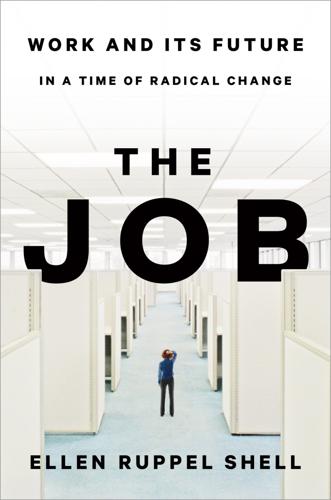
The Job: The Future of Work in the Modern Era
by
Ellen Ruppel Shell
Published 22 Oct 2018
not one of these tech dynamos Jerry Davis, “Re-imagining the Corporation,” paper presented at the annual meeting of the American Sociological Association, Denver, CO, August 2012. what one observer called the “yawning disparity” Thanks for this insight to sociologist Paul Starr, as expressed in his review of The Second Machine Age, by Andrew McAfee and Erik Brynjolfsson. See Paul Starr, “New Technology Doesn’t Make Us All Richer,” New Republic, July 6, 2014, https://newrepublic.com/article/118327/second-machine-age-reviewed-paul-starr. At the Global Entrepreneurial Summit at Stanford University See “Remarks by the President at Global Entrepreneurship Summit,” White House press release, June 25, 2016, https://obamawhitehouse.archives.gov/the-press-office/2016/06/25/remarks-president-global-entrepreneurship-summit-and-conversation-mark.
…
What is remarkable are the odds against any one of these hopefuls making the cut: with an estimated 3 million applicants in a single year, only 1 in 428 got the offer. As a point of comparison, the odds of an applicant getting into Harvard are quite a bit better: 1 in 14. Andrew McAfee, coauthor of The Second Machine Age and principal research scientist at the Center for Digital Business at MIT’s Sloan School of Business, joined me to mull over the implications of all this at Legal Seafoods, a popular restaurant just a few steps from Google’s Cambridge campus. At the time, McAfee seemed a tad preoccupied, as though he, too, was dreaming of Google.

The Only Game in Town: Central Banks, Instability, and Avoiding the Next Collapse
by
Mohamed A. El-Erian
Published 26 Jan 2016
HARNESSING DISRUPTIVE TECHNOLOGICAL INNOVATION The ongoing technological revolution is a second factor that contributes to a relatively unstable distribution of future potential outcomes. It is a revolution that combines two critical elements: empowering individuals to an extent that was deemed unlikely, if not unthinkable, not so long ago; and deploying big data, artificial intelligence, and what Erik Brynjolfsson and Andrew McAfee have dubbed “the second machine age.”3 Many observers and researchers have referred to these revolutionary and transformational forces as among the most powerful in history. In a March 2015 conference on the Future of Work, organized by WorldPost, a joint venture between Nicolas Berggruen’s Institute and Arianna Huffington’s Huffington Post, Andrew McAfee added that it is “the only free lunch that economists can agree on.”
…
,” New York Times, January 23, 2015, http://www.nytimes.com/2015/01/25/opinion/sunday/what-happened-to-the-price-of-oil.html. 2. Mohamed A. El-Erian, “Good, Bad and Ugly of Lower Oil Prices,” Bloomberg View, December 1, 2014, http://www.bloombergview.com/articles/2014-12-01/good-bad-and-ugly-of-lower-oil-prices. 3. Erik Brynjolfsson and Andrew McAfee, The Second Machine Age: Work, Progress, and Prosperity in a Time of Brilliant Technologies (New York: Norton, 2014). 4. See, for example, Erik Brynjolfsson and Andrew McAfee, Race Against the Machine: How the Digital Revolution Is Accelerating Innovation, Driving Productivity, and Irreversibly Transforming Employment and the Economy (Lexington, MA: Digital Frontier Press, 2011).
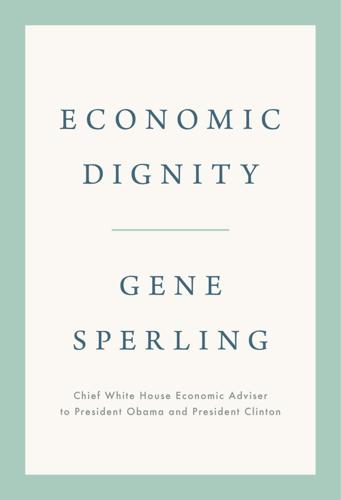
Economic Dignity
by
Gene Sperling
Published 14 Sep 2020
If we broaden and strengthen an economic dignity net and pass something like a UBI to Rise, we will be closer to what Korinek and Stiglitz described as a “first-best economy in which individuals are fully insured against any adverse impacts of innovation.”62 But beyond such policy measures to deal with the negative effects of technological change, we should ask what we can do to structure change. As Erik Brynjolfsson and Andrew McAfee conclude in The Second Machine Age, “Technology is not destiny. We shape our destiny.”63 Economists Daron Acemoglu and Pascual Restrepo argue that automation and AI will take some tasks from workers and lower demand for some jobs—what they call “displacement” effects. However, they also believe that the creation of new tasks—“shaped by the decisions of firms, workers, and other actors in society”—in which labor has an edge over automation can provide a countervailing influence to the displacement effects.64 Notably, the process of creating those new tasks is Acemoglu and Restrepo’s framework thus underscores the fact that the decisions we make as a nation can have a powerful influence over what technological innovation means for our country.
…
Blake Marsh, and Thao Tran, “Trends in the Labor Share Post-2000,” Federal Reserve Bank of Kansas City, December 7, 2018, https://www.kansascityfed.org/en/publications/research/mb/articles/2018/trends-labor-share-post; and “A New Look at the Declining Labor Share of Income in the United States,” McKinsey, May 2019, https://www.mckinsey.com/featured-insights/employment-and-growth/a-new-look-at-the-declining-labor-share-of-income-in-the-united-states. 62. Korinek and Stiglitz, “Artificial Intelligence and Its Implications for Income Distribution and Unemployment.” 63. Erik Brynjolfsson and Andrew McAfee, The Second Machine Age: Work, Progress, and Prosperity in a Time of Brilliant Technologies (New York: W. W. Norton, 2014), 257. 64. Daron Acemoglu and Pascual Restrepo, “Artificial Intelligence, Automation and Work,” NBER Working Paper 24196, National Bureau of Economic Research, Cambridge, MA, 2018, https://www.nber.org/papers/w24196.pdf. 65.
…
See also economic dignity net conservatives and work requirements, 90 use of term, 190 Saga Education, 286 Sanberg, Joe, 166 Sánchez, Wilkin, 284 Sandel, Michael, 14 Sanders, Bernie, 160 sanitation workers, 14–15, 155–56 Sarkozy, Nicolas, 8 Sasse, Ben, 163–67, 170, 171, 329n SAT/ACT test gap, 277, 289–90 SAT/ACT test prep, 42–43, 289 Saudi Arabia, GDP, 5 Sawhill, Isabel, 60, 285 SBA (Small Business Administration), 321n Schaeffer, Sam, 215 school counselors, 208–9 school psychologists, 216 school teachers, 215–16, 250–51, 262–63 Schularick, Moritz, 295 Schultz, Howard, 102 Seattle Domestic Workers Ordinance, 75, 257–58 Fight for $15, 258 “second-chance” policies, 141–46 rethinking previous trade policies, 144–46 UBI to Rise, 142–44, 146 second chances, 48–53 criminal justice system and betrayal, 53–56 hope and deaths of despair, 59–61 long-term unemployment and denial of, 50–53 weak economic compact and denial of, 50 Second Machine Age, The (Brynjolfsson and McAfee), 146–47, 148 sectoral collective bargaining, 253–54, 258–59 self-employment. See contract workers self-potential and purpose. See pursuit of potential and purpose; worker potential self-sufficiency, 91, 94–96 Semuels, Alana, 98 Sen, Amartya, 8, 48, 135 Seneca Falls Convention, 15 Service Employees International Union (SEIU), 77, 79, 187, 205, 210, 254 sexual harassment.
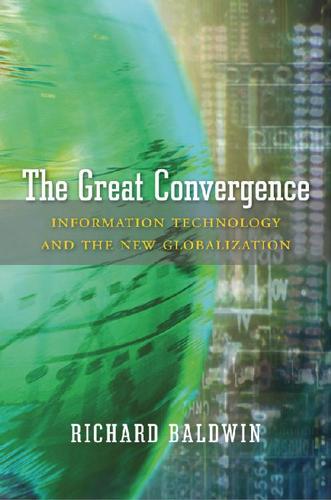
The Great Convergence: Information Technology and the New Globalization
by
Richard Baldwin
Published 14 Nov 2016
But of course, this challenge to rich nation workers would be an opportunity for poor nation workers. To put these changes in perspective, it is worth drawing a parallel with the discussions of how disruptive Artificial Intelligence (AI) may be. According to Erik Brynjolfsson and Andrew McAfee, authors of The Second Machine Age, the near future will be marked by a very systematic use of AI to operate robots that replace humans in high-wage nations.6 The authors point out that this would have large effects for workers ranging from truck drivers to investment managers. I would suggest that “Remote Intelligence” (RI) could end up as at least as transformative.
…
For details, see Richard Baldwin, and Javier Lopez-Gonzalez, “Supply-Chain Trade: A Portrait of Global Patterns and Several Testable Hypotheses,” World Economy 38, no. 11 (2015): 1682–1721. 5. See David H. Autor, Lawrence F. Katz, Melissa S. Kearney, “The Polarization of the U.S. Labor Market,” NBER Working Paper 11986, National Bureau of Economic Research, January 2006. 6. Erik Brynjolfsson and Andrew McAfee, The Second Machine Age: Work, Progress, and Prosperity in a Time of Brilliant Technologies (New York: W. W. Norton and Company, 2014). Acknowledgments This book was a very long time in the making. The original idea came from a paper I wrote in late 2006 for the Finnish prime minister’s project “Globalization Challenges for Europe and Finland.”
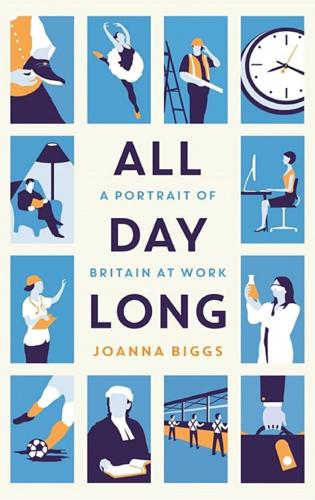
All Day Long: A Portrait of Britain at Work
by
Joanna Biggs
Published 8 Apr 2015
Henry Ford doubled his workers pay to $5 a day in 1914, the legend goes, so that his workers could afford what they made (Ford may also have been encouraging them to quit less often); Bob Crow used to ask how robots were going to be able to buy the cars they make. But who owns the robots? A new robot costs between £30,000 and £50,000. Who gets the robots’ share of a company’s profit? We might be happy to let robots heave car bonnets, but less so to have them looking after our children. Erik Brynjolfsson and Andrew McAfee argue in The Second Machine Age (2014) that while robots can take on routine tasks, even writing simple share price reports successfully, they have trouble with non-routine tasks, both of thinking and doing. They’re not good hair-dressers, care workers, handymen, poets, financial analysts and cooks. They can’t write software, or come up with a scientific hypothesis, or sniff out a story.
…
The figures for workers at Swindon in 1965 were taken from an English Heritage Conservation Bulletin, the current figures from The Manufacturer, the ratio of robots to workers was drawn from articles in the Financial Times and The Manufacturer. Bob Crow shared his view on robots during a Lunch with the FT interview of 25 March 2011, and the price of a robot was taken from the FT. My account of what robots can and can’t do comes from Erik Brynjolfsson and Andrew McAffee’s The Second Machine Age (Norton, 2014). The video introducing the idea of ‘Fully Automated Luxury Communism’ can be seen on Novara Media’s YouTube channel. Selling I’ve drawn my account of Belfast’s markets from the Belfast City tourism website and a short BBC archive film from 1959, ‘Roving Reporter: Smithfield Market’, available online.

Capitalism and Its Critics: A History: From the Industrial Revolution to AI
by
John Cassidy
Published 12 May 2025
International Monetary Fund, World Economic Outlook, April 2024, 138, table A1, “Summary of World Output,” https://www.imf.org/en/Publications/WEO/Issues/2024/04/16/world-economic-outlook-april-2024#statistical. 16. Peter S. Goodman, How the World Ran Out of Everything: Inside the Global Supply Chain (New York: Mariner Books, 2024), 346. 17. Erik Brynjolfsson and Andrew McAfee, The Second Machine Age (New York: W. W. Norton, 2014), 9. 18. Brynjolfsson and McAfee, Second Machine Age, 82. 19. Nicholas Crafts, “AI as a GPT: An Historical Perspective,” March 25, 2020, https://warwick.ac.uk/fac/soc/economics/staff/nfrcrafts/ai_as_a_gpt.ppt.pdf. 20. Nicholas Crafts, “Artificial Intelligence as a General-Purpose Technology: An Historical Perspective,” Oxford Review of Economic Policy 37, no. 3 (Autumn 2021), 521–36, https://academic.oup.com/oxrep/article/37/3/521/6374675. 21.
…
The options being touted included a technology-driven revival in productivity and income growth that would give free market capitalism another lease on life; a drastic shift away from materialism and economic growth in the name of sustainability; a retreat into protectionism and economic nationalism; and the creation of a new managed capitalism for a postindustrial age of algorithms and platform monopolies. * * * Hovering over many of these discussions was the emergence of potentially transformative digital technologies, such as self-driving vehicles, drones, 3D printing, robotics, and, most ominously, large language artificial intelligence models. In their 2014 book The Second Machine Age, Erik Brynjolfsson and Andrew McAfee, two economists at MIT, wrote: “The key building blocks are already in place for digital technologies to be as important and transformational to society and the economy as the steam engine.”17 Modern economists refer to a technology that impacts the entire economy over extended periods as a “general purpose technology.”
…
Francis College Saint-Simon, Henri de Saint-Simonians Saive, André Salford, England Salisbury, Lord salt Samson of Tottington Samuel, Herbert Samuelson, Paul Sand, George Sanders, Bernie San Francisco, CA San Francisco Daily Evening Post San Martín, José de Santa Fe Railroad Sartor Resartus (Carlyle) savings; excessive; investment and Sawyer, Malcolm Say, Jean-Baptiste Say’s Law Scaife Foundation Scargill, Arthur Schacht, Hjalmar Scheidemann, Philipp Schmitz, John Schor, Juliet Schumacher, E. F. Schumpeter, Joseph Schweitzer, Pierre-Paul science; see also technology Scott, C. P. Scribner’s Scribner’s Sons Sears, Roebuck and Co. Seattle protests Second Great Awakening Second International Second Machine Age, The (Brynjolfsson and McAfee) Second Reform Act Securities and Exchange Commission Seligman, Edwin Shaikh, Anwar Shakespeare, William shareholder value movement Shaw, George Bernard Sheridan, Richard Sherman Anti-Trust Act shipping containerization Sial, Farwa Siemens Silent Spring (Carson) Silicon Valley silk silver Singapore Singer, Hans Singh, Manmohan Single Tax campaign Sismondi, Jean Charles Léonard de Six Points Skidelsky, Robert slavery; abolition of; ancillary industries and; in Caribbean; Carlyle on; cotton industry and; Du Bois on; financing and; France and; industrial capitalism and; in Peru; Postlethwayt on; racism and; size of transatlantic slave trade; Smith on; Steuart on; in US; Williams on; workers compared to Slavery Abolition Act SlaveVoyages Database Slouching Towards Utopia (DeLong) Slutsky, Eugen Small Is Beautiful (Schumacher) Smith, Adam; on colonial capitalism; death of; on division of labor; on East India Company; as free market capitalism proponent; Hume and; on invisible hand; on joint-stock companies; on mercantilism; on slavery; The Theory of Moral Sentiments; The Wealth of Nations Social Darwinists social democracy; see also managed capitalism Social Democracy of the Kingdom of Poland (SDKP) Social Democracy of the Kingdom of Poland and Lithuania (SDKPiL) Social Democratic Federation Social Democratic Party of Germany (SPD) Social Democratic Party of Hungary Social Democratic Workers’ Party (SAPD) Social Democratic Workers’ Party of Austria (SDWP) socialism; Christian; cooperative, see cooperative communities; early; George and; Hayek on; Hobson and; in India; Luxemburg and; Polanyi on; polls on people’s views of; in Russia and the Soviet Union; Thompson and; use of word; utopian; Veblen and; in Vienna Socialism (Engels) Socialism and Positive Science (Ferri) Socialist Economy Socialist Revolutionaries (SRs), Party of social media Social Problems (George) social programs and benefits; in Britain; unemployment; welfare social science Social Security Société des Saisons Society for Ethical Culture Sokolnikov, Grigory solar energy Solow, Robert Sombart, Werner “Song for the Luddites” (Byron) “Sorcerer’s Apprentice, The” (Goethe) Sorge, Friedrich Adolph Souls of Black Folk, The (Du Bois) South Africa South America Southern Economic Journal Southern Quarterly Review, The Southey, Robert South Korea Soviet Russian Encyclopedia Soviet Union; agriculture in; in Cold War; collapse of; collectivization in; economy of; famine in; founding of; GDP of; in global economy; industrialization in; New Economic Policy in; Romania and; socialism in; Stalin’s purges in; see also Russia Spain Spanish-American War Spann, Othmar Spartacus League Spear, Percival speculative finance Speenhamland system Spencer, Herbert spending policies Spice Islands Splinter, David Sprawa Robotnicza Sraffa, Piero SRs (Party of Socialist Revolutionaries) Stages of Economic Growth (Rostow) stagflation Stalin, Joseph; Kondratiev and; purges of standard of living, see living standards Standard Oil Stanford, Leland Stanislaw, Joseph State and Revolution, The (Lenin) State, US Department of Steady-State Economics (Daly) steady-state economy steam engines steamships Stedman-Jones, Gareth steel industry Stephen, Adrian Steuart, James Stiglitz, Joseph; Freefall; Globalization and Its Discontents; The Roaring Nineties stocking knitters stocks Strachey, Lytton Streeck, Wolfgang streetcar drivers strikes; in Britain subprime mortgage securities subsistence baskets subsistence wages sugar Sugar and Slavery (Sheridan) Sugar Refineries Company (Sugar Trust) Summers, Lawrence Sumner, William Graham supply: aggregate; demand and supply chains Supreme Court, US; Citizens United v.

WTF?: What's the Future and Why It's Up to Us
by
Tim O'Reilly
Published 9 Oct 2017
The biggest changes are still ahead, and every industry and every organization will have to transform itself in the next few years, in multiple ways, or fade away. We need to ask ourselves whether the fundamental social safety nets of the developed world will survive the transition, and more important, what we will replace them with. Andy McAfee, coauthor of The Second Machine Age, put his finger on the consequence of failing to do so while talking with me over breakfast about the risks of AI taking over from humans: “The people will rise up before the machines do.” This book provides a view of one small piece of this complex puzzle, the role of technology innovation in the economy, and in particular the role of WTF?
…
“If there’s going to be a competitive workforce,” he continued, “we need to be at the leading edge of who is going to create that.” The question is not whether there will be enough work to go around, but the best means by which to fairly distribute the proceeds of the productivity made possible by the WTF? technologies of what Erik Brynjolfsson and Andy McAfee call “the second machine age.” Reducing working hours for the same amount of pay is one of the most fundamental ways that the benefits of rising productivity have traditionally been distributed more widely. In 1870, the average American (male) worked 62 hours per week; by 1960, that number was down to just over 40 hours, where it has roughly hovered since.
…
(Chase), 84–85 Peer-to-Peer and Web Services Conference (2001), 27 peer-to-peer file sharing, 26–27 Pelosi, Nancy, 188 “People, Not Data” (Solomon), 143 Pereira, Fernando, 155–56 Perez, Carlota, 277 Perez, Tom, 194 Perl, 10–11, 15, 16–17, 120–21 personal agents, xiii, xiv–xvi, 82, 232, 233 Peterson, Christine, 17–18 Philadelphia, Pennsylvania, 138–40 Phoenix Project, The (Kim, Behr, and Spafford), 122 physical assets with digital footprint, 66–67 Pike, Rob, 105–6 Piketty, Thomas, 246, 272, 291 platforms, xxiv, 90–91 algorithmic curation of information, 89 Amazon’s development into, 111–13 digital platforms and the real economy, 288–89 evolution of, 91–92 networked platforms, 67, 92–95 and reputation systems, 181–90 search engines, 39, 92, 157–59, 207, 288 thick marketplace requirement, 95–105, 128, 133 Uber as, 59–61 See also Amazon; Google; government as a platform; networks platform strategies, 109–10 employees work inside the application, 119–24 platform vs. application, 110–13 promise-centered organizations, 113–19 pol.is, 200, 221–22 politics barriers to fresh thinking, 268–69 and corporate malfeasance, 249–50 Power of Pull, The (Hagel, Brown, and Davison), 341 Practice of Management (Drucker), 250 principal component analysis (PCA), 221–22 privacy bullies, 178–79 profits and open source software, 24 Programming Perl (Wall), 10 promise-centered organizations, 113–19 promise theory, 115–19 public benefit corporations, 292 Putnam, Robert, 218–19, 320 QVC, 162–63 Rachmeler, Kim, 115–16, 117 racism, 21 Rackspace, 350 Rademacher, Paul, 127–28 Rand, Ayn, 69 RankBrain (Google), 165 Rasselas (Johnson), 313 Raw Deal (Hill), 184 Rawls, John, 181 Raymond, Eric, 8–9, 15–16, 17–18 RCA, 351 reality vs. abstraction, 21–22 redlining data, 178–79 RegTech, 175 regulations, 171–72 defining the desired outcome, 173–75 financial market speed vs., 172–73 and government technology, 187–89 improving outcomes, 175–76 of labor, 190–98 reputation systems in design of online platforms, 181–90 role of sensors, 176–77 and surveillance data, 177–81 value of, 181–90 and workers’ continuous partial employment, 190–98 regulatory capture, 187–88 REI, 244 Reinventing Discovery (Nielsen), 43 Remix, 140 repairs vs. sealed hardware, 337–38 reputation systems, 181–90 Resnick, Paul, 182 Reuther, Walter, 357 rhyming patterns, 5, 8, 13 Ries, Eric, 186 right to work laws, 262–63 Rilke, Rainer Maria, 353 Rinaudo, Keller, 370, 372 Rise and Fall of American Growth (Gordon), 243 Rise of the Robots, The (Ford), 269 Robbins, Jesse, 121 Roberts, Bruce, 285–88 Robinson, David, 130 Robinson, Kim Stanley, 96 robots and robotics competitive advantage of human touch, 311, 315, 330–31 fears about, ix, 300 filling the gap of not enough workers, 310 and jobs, xx–xxi and laser eye surgery, xvii–xviii and people, at Amazon, 95 the Robot Lawyer, 332 robot tax proposal, 307 Rolf, David, 196, 262 Roman empire, xix Romer, Paul, 249 Rosencrantz & Guildenstern Are Dead (Stoppard), xii Rossman, John, 117 Roth, Alvin E., 98 Rothman, Simon, 196 Rushkoff, Douglas, 251 Rwanda, 370 Safari service for ebooks, 50, 344 Sanders, Bernie, 255 Saudi Arabia, 305–6 scenario planning, 358–67 Scheifler, Bob, 16 Schlossberg, Edwin, 3 Schmidt, Eric, 126, 129, 137 Schneier, Bruce, 177 Schrage, Michael, xiv, 58 Schulman, Andrew, 10 Schumpeterian profits, 296 Schumpeterian waste, 277–78 Schwartz, Peter, 359 Science and Sanity (Korzybski), 20 Scoble, Robert, 39 Search, The (Battelle), 161 search engine optimization, 160–61 search engines, 39, 92, 157–59, 207, 288. See also Google Seattle, Washington, 138–40 Second Machine Age (McAfee), xxii–xxiii secular stagnation, 271 Securities and Exchange Commission (SEC), 125–26 security on platforms, 135–36 self-driving vehicles, 232–33 data collection for, 32–33, 34–35 jobs resulting from, 94–95 as manifestation of the global brain, 46 National Highway Traffic Safety Administration regulations, 188–89 for Uber and Lyft, x, 62–64 self-service marketplaces, 91 sensors, xviii–xix, 33, 34–35, 40, 41, 85, 176–77, 326 SETI@home project, 26 sewing as WTF?
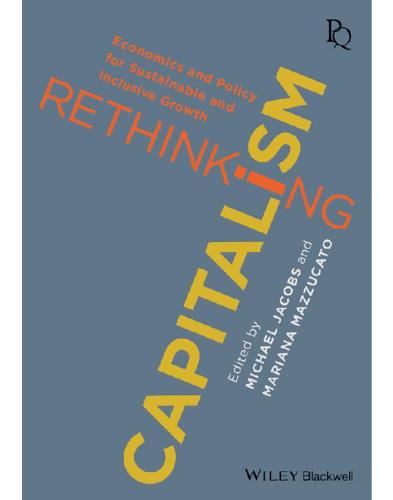
Rethinking Capitalism: Economics and Policy for Sustainable and Inclusive Growth
by
Michael Jacobs
and
Mariana Mazzucato
Published 31 Jul 2016
Jacobs, Green Growth: Economic Theory and Political Discourse, Working Paper 92, Grantham Institute, 2012. 10 In 1934, Hansen’s ‘Capital goods and the restoration of purchasing power’, Proceedings of the Academy of Political Science, vol. 16, no. 1, Money and Credit in the Recovery Program (April), pp. 11–19, and in 2014 L. H. Summers’s ‘Reflections on the “new secular stagnation hypothesis”’, in C. Teulings and R. Baldwin, eds, Secular Stagnation: Facts, Causes and Cures, London, CEPR Press, pp. 27–38. 11 Brynjolfsson and McAfee, Race Against the Machine; E. Brynjolfsson and A. McAfee, The Second Machine Age, London, W. W. Norton & Co, 2014. 12 See particularly Gordon, Is U.S. Economic Growth Over? ch. 4. 13 J. A. Schumpeter, Business Cycles: A Theoretical, Historical, and Statistical Analysis of the Capitalist Process, New York, McGraw-Hill, 1939; N. Kondratieff, The Major Economic Cycles, 1922, published in English in G.
…
R. Martin eds, The Triple Challenge for Europe: Economic Development, Climate Change and Governance, Oxford, Oxford University Press, 2015, ch. 9. 20 M. Twain and C. D. Warner, The Gilded Age: A Tale of Today, Hartford, CT, The American Publishing Co., 1873. 21 Brynjolfsson and McAfee, The Second Machine Age. 22 Even bolder were the creators of the Swedish model, Rehn and Meidner, whose model of cooperation between business government and trade unions brought the country to the first ranks in productivity, competitiveness, skills and well-being. That model became inadequate once the mass production revolution approached exhaustion, as happened with the orthodox Keynesian recipes across the rest of the advanced world.

Human Compatible: Artificial Intelligence and the Problem of Control
by
Stuart Russell
Published 7 Oct 2019
Economic theory does not, unfortunately, predict that each human will be better off as a result of automation. Generally, automation increases the share of income going to capital (the owners of the housepainting robots) and decreases the share going to labor (the ex-housepainters). The economists Erik Brynjolfsson and Andrew McAfee, in The Second Machine Age, argue that this has already been happening for several decades. Data for the United States are shown in figure 9. They indicate that between 1947 and 1973, wages and productivity increased together, but after 1973, wages stagnated even while productivity roughly doubled. Brynjolfsson and McAfee call this the Great Decoupling.
…
See human preferences preference utilitarianism, 220 Price, Richard, 54 pride, 230–31 Primitive Expounder, 133 prisoner’s dilemma, 30–31 privacy, 70–71 probability theory, 21–22, 273–84 Bayesian networks and, 275–77 first-order probabilistic languages, 277–80 independence and, 274 keeping track of not directly observable phenomena, 280–84 probabilistic programming, 54–55, 84, 279–80 programming language, 34 programs, 33 prohibitions, 202–3 Project Aristo, 80 Prolog, 271 proofs for beneficial AI assistance games, 184–210, 192–203 learning preferences from behavior, 190–92 mathematical guarantees, 185–90 recursive self-improvement and, 208–10 requests and instructions, interpretation of, 203–5 wireheading problem and, 205–8 propositional logic, 51, 268–70 Putin, Vladimir, 182, 183 “put it in a box” argument, 161–63 puzzles, 45 quantum computation, 35–36 qubit devices, 35–36 randomized strategy, 29 rationality Aristotle’s formulation of, 20–21 Bayesian, 54 critiques of, 24–26 expected value rule and, 22–23 gambling and, 21–23 game theory and, 28–32 inconsistency in human preferences, and developing theory of beneficial AI, 26–27 logic and, 39–40 monotonicity and, 24 Nash equilibrium and, 30–31 preferences and, 23–27 probability and, 21–22 randomized strategy and, 29 for single agent, 20–27 transitivity and, 23–24 for two agents, 27–32 uncertainty and, 21 utility theory and, 22–26 rational metareasoning, 262 reading capabilities, 74–75 real-world decision problem complexity and, 39 Reasons and Persons (Parfit), 225 Recombinant DNA Advisory Committee, 155 recombinant DNA research, 155–56 recursive self-improvement, 208–10 redlining, 128 reflex agents, 57–59 reinforcement learning, 17, 47, 55–57, 105, 190–91 remembering self, and preferences, 238–40 Repugnant Conclusion, 225 reputation systems, 108–9 “research can’t be controlled” arguments, 154–56 retail cashiers, 117–18 reward function, 53–54, 55 reward system, 17 Rise of the Robots: Technology and the Threat of a Jobless Future (Ford), 113 risk posed by AI, 145–70 deflection arguments, 154–59 denial of problem, 146–54 Robinson, Alan, 5 Rochester, Nathaniel, 4–5 Rutherford, Ernest, 7, 77, 85–86, 150 Sachs, Jeffrey, 230 sadism, 228–29 Salomons, Anna, 116 Samuel, Arthur, 5, 10, 55, 261 Sargent, Tom, 191 scalable autonomous weapons, 112 Schwab, Klaus, 117 Second Machine Age, The (Brynjolfsson & McAfee), 117 Sedol, Lee, 6, 47, 90, 91, 261 seismic monitoring system (NET-VISA), 279–80 self-driving cars, 65–67, 181–82, 247 performance requirements for, 65–66 potential benefits of, 66–67 probabilistic programming and, 281–82 sensing on global scale, 75 sets, 33 Shakey project, 52 Shannon, Claude, 4–5, 62 Shiller, Robert, 117 side-channel attacks, 187, 188 Sidgwick, Henry, 224–25 silence regarding risks of AI, 158–59 Simon, Herbert, 76, 86, 265 simulated evolution of programs, 171 SLAM (simultaneous localization and mapping), 283 Slate Star Codex blog, 146, 169–70 Slaughterbot, 111 Small World (Lodge), 1 Smart, R.

The Price of Time: The Real Story of Interest
by
Edward Chancellor
Published 15 Aug 2022
Not long afterwards US productivity growth picked up, assisted presumably by advances in information technology. As Gordon’s book The Rise and Fall of American Growth went to press in early 2016 (its publication facilitated by digital technologies), the internet continued to disrupt countless industries while the media fanned fears of an impending ‘second machine age’, in which robots replace human workers. Gordon’s Northwestern colleague Joel Mokyr suggested that a ‘shortfall of imagination [is] largely responsible for much of today’s pessimism’. Mokyr listed a number of revolutionary new technologies then under development, including 3D printing, graphene and genetic engineering, to which might be added autonomous cars and clean energy.19 Finance writer William Bernstein accused secular stagnationists of conflating what they couldn’t conceive with that which was not possible.20 Hansen made the same mistake.
…
Schumpeter would have approved. After 2008, a different picture emerged. Fewer bankruptcies and fewer start-ups meant less job creation and destruction. The decline in employment turnover (known as the ‘churn rate’) roughly tracked the falling interest rate.fn7 While the media ran horror stories about a ‘Second Machine Age’, in which robots were replacing humans in the workplace, the reality was that fewer jobs were created or destroyed by technology than at any time since the Industrial Revolution.42 More Americans suffered from prolonged spells of unemployment. Even as the US economy recovered, the labour force participation rate declined, hitting a three-decade low in 2014.
…
W., 96–7 neo-Keynesian economists, 87* Nero, Roman Emperor, 20 New Haven Railroad, 159 New Paradigm (Goldilocks Economy), 111 new technologies: in 1920s, 89, 90, 96, 100; in 1930s USA, 142–3; in China, 276, 284; and ‘creative destruction’ idea, 140; and demand for capital, 125, 126, 127; digital, 127–8, 149–50, 151–2, 176, 177, 179, 204, 276, 283; digital currencies concept, 294, 312; Dotcom bubble, 111–12, 136–7, 176, 204; FAANGs, 176; low marginal costs in New Economy, 127–8; mass-production techniques, 142; meme stocks, 307; in robber baron era, 158–9; ‘Second Machine Age’ narratives, 128, 151–2; and stock market bubbles, 176; zombies slow adoption of, 153 New Zealand, 119 NFTs (‘nonfungible tokens’), 308 Nietzsche, Friedrich, 218 Nigeria, 262 Norman, Montagu, 82–3, 86, 87, 92, 93, 110, 232* North, Sir Dudley, 37, 40, 236† Northern Rock, 253† Norway, 239 Obama, Barack, 213 Office for Financial Research, US, 164 OGX Petróleo e Gás, 257 Olson, Mancur, 117 Ordos (Inner Mongolian city), 274 Organisation for Economic Co-operation and Development (OECD), 146 Origo, Iris, 21, 22 Orléans, Elisabeth Charlotte, Duchess of, 51, 56 Orlik, Tom, 89*, 270 OTX Classic Car Index, 210 Overend Gurney, collapse of (1866), 72–4, 75–6, 77 Overstone, Samuel Jones-Loyd, Lord, 63 Palmstruch, Johan, 244 Park Chung-hee, 267 Pearson, Michael, 161, 169 Pension Benefits Guarantee Corporation, US, 197 pensions: ballooning deficits in post-crisis decade, 195–8, 211; defined benefit plans, 195–7; defined contribution plans, 197; liability hedging by corporate funds, 198; and low-interest regimes, xxi, 190, 194, 195–8, 211, 237, 245; ‘retirement gaps’, 198; state pensions, 197; widespread use of dubious assumptions, 197 People’s Bank of China, 265, 266, 267–8, 270, 271, 272, 281, 282, 282*, 284–5, 289 Petrobras, 225, 257, 258 Pettis, Michael, 269, 278–9, 278*, 287* Petty, Sir William, 31, 40, 173 Peyrefitte, Alain, 265 Philippe II, Duke of Orléans, 48, 49–50, 51, 56, 57 Phillips, Chester, 96–7 Pigou, Arthur, 131 Piketty, Thomas, 205, 216–17 PIMCO, 113*, 217, 221, 235, 236 plague, bubonic, 33 ‘platform companies’, 161 Plato, 200* Plaza Accord (1985), 241*, 271 Poland, 253 Pole, Thornton & Company, 66 Ponzi, Carlo, 90 Ponzi schemes/structures, 166, 230*, 284–5, 284*, 312 Poole, William, 116, 246 populism, resurgence of, xxii, 299 Portnoy, Dave, 308–9 Portugal, 144–5, 245 Potter, William, 47 Powell, J.
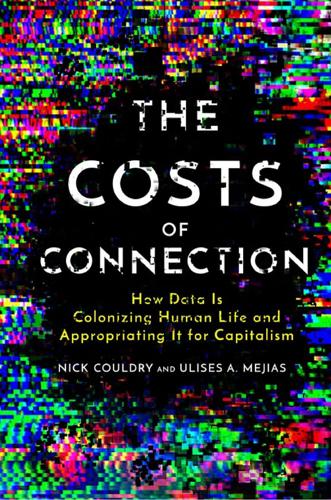
The Costs of Connection: How Data Is Colonizing Human Life and Appropriating It for Capitalism
by
Nick Couldry
and
Ulises A. Mejias
Published 19 Aug 2019
Automation and AI technologies, which many corporations in the social quantification sector actively develop and promote, seem to be designed to eliminate laborers, not liberate them. Given the investment in AI of companies such as Amazon, Apple, Facebook, and Google, Scott Galloway argues they should be referred to as job destroyers, not job creators.112 With the arrival of the “second machine age,”113 the destruction of many jobs is a given, even if the scope of the transformation is still up for debate. According to some estimates, digital automation puts up to 47 percent of all US employment at “high risk” of vanishing.114 In the retail sector alone, this translates into 7.5 million jobs out of a total of 16 million.115 Other estimates that focus on tasks instead of occupations present a much smaller figure of 9 percent of jobs at risk of disappearing.116 Looking at historical data instead of predictions reveals that adding one robot to a workforce of one thousand human workers has increased unemployment and reduced wages, even if the shifts are very small thus far.117 Nonetheless, it is hard to project past trends into the future without accounting for the disruptive power of technology.
…
Stanford, CA: Stanford University Press, 2017. Brown, Wendy. Undoing the Demos. New York: Zone Books, 2015. Browne, Simone. Dark Matters. Durham, NC: Duke University Press, 2015. Brunton, Finn, and Helen Nissenbaum. Obfuscation. Cambridge, MA: MIT Press, 2015. Brynjolfsson, Erik, and Andrew McAfee. The Second Machine Age. New York: W. W. Norton, 2016. Bucher, Taina. “The Algorithmic Imaginary: Exploring the Ordinary Affects of Facebook Algorithms.” Information Communication and Society 20, no. 1 (2017): 30–44. . “The Friendship Assemblage: Investigating Programmed Sociality on Facebook. Television & New Media 14, no. 6 (2013): 479–93. .
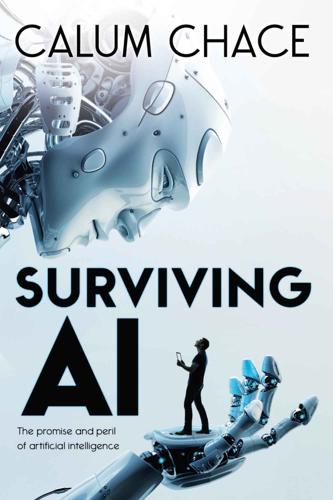
Surviving AI: The Promise and Peril of Artificial Intelligence
by
Calum Chace
Published 28 Jul 2015
Some people argue that soon, people automated out of a job may not find new employment, thanks to the rapid advances in machine learning, and the availability of increasingly powerful and increasingly portable computers. MIT professors Andrew McAfee and Erik Brynjolfsson have published two seminal books on the subject: Race Against the Machine, and The Second Machine Age. A report in September 2013 by the Oxford Martin School estimated that 45% of American jobs would disappear in the next 20 years, in two waves. (21) The first would attack relatively low-skilled jobs in transportation and administration. Some of this would come from self-driving vehicles, which are likely to appear on our roads in significant numbers from 2017.
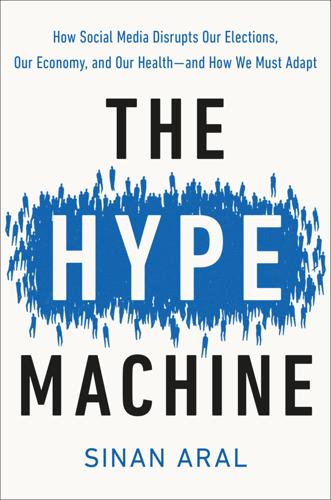
The Hype Machine: How Social Media Disrupts Our Elections, Our Economy, and Our Health--And How We Must Adapt
by
Sinan Aral
Published 14 Sep 2020
Nobody knows better than Sinan Aral how ideas spread online, and in these pages he’s distilled a brilliant career into a fascinating read. Don’t miss it if you care about how the Internet is changing our world.” —ANDREW MCAFEE, MIT, author of More from Less and bestselling co-author of The Second Machine Age “In this book, Sinan Aral, one of the world’s leading computational social scientists, tackles one of the great challenges of our time: how to reengineer digital technology to better serve society. Authoritative, comprehensive, nuanced, and engaging, The Hype Machine is essential reading for anyone who wants to understand how we got here and how we can get somewhere better.”
…
In this lively, engaging masterpiece, drawing on his twenty years of pioneering research, Aral separates hype from reality, clarifies our most pressing challenges, and explains how we must respond.” —ERIK BRYNJOLFSSON, director of the Stanford Digital Economy Lab and bestselling co-author of The Second Machine Age “In a sea of books about social media, this is the one to read. Sinan Aral understands the new social age like no one else, and The Hype Machine offers the single best examination of how social media works, what it does to us, and how we can make it better for consumers, citizens, and democracies.

The People vs Tech: How the Internet Is Killing Democracy (And How We Save It)
by
Jamie Bartlett
Published 4 Apr 2018
I don’t wish to put AI in the dock for crimes as yet uncommitted. But this kind of tech-fuelled inequality is a familiar pattern. ‘There is no economic law that says that all workers, or even a majority of workers, will benefit from technological progress,’ write McAfee and Brynjolfsson in their influential book The Second Machine Age, which argues persuasively that, while other factors are of course at play – including globalisation – technological advance over the last 30 years has been the main factor behind growing economic inequality. Skilled workers, they explain, tend to benefit most from new technologies, while others fall further behind.
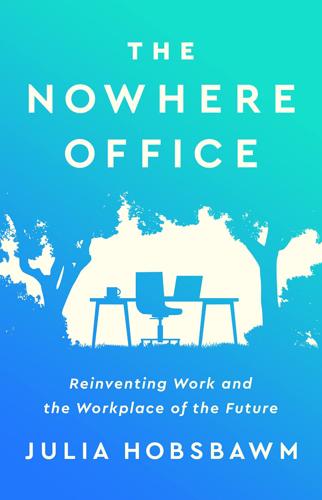
The Nowhere Office: Reinventing Work and the Workplace of the Future
by
Julia Hobsbawm
Published 11 Apr 2022
Arendt, Hannah, The Human Condition (University of Chicago Press, 1998 [1958]) Avent, Ryan, The Wealth of Humans (Allen Lane, 2016) British Academy, Future of the Corporation, https://www.thebritishacademy.ac.uk/programmes/future-of-the-corporation/ Brynjolfsson, Eric, and Andrew McAfee, The Second Machine Age: Work, Progress, and Prosperity in a Time of Brilliant Technologies (W. W. Norton & Co., 2014) Chapman, Tim, Why Workplace: A Leader’s Guide to Rebuilding the Post-Pandemic Workplace (Leesman, 2021) Cséfalvay, Zoltán, TECHtonic Shifts (Kairosz Kiadó, 2017) Cushman & Wakefield Workplace Insights, https://www.cushmanwakefield.com/en/insights/covid-19/the-future-of-workplace d’Ancona, Matthew, Identity, Ignorance, Innovation: Why the Old Politics is Useless – and What to Do About It (Hodder & Stoughton, 2021) Ferris, Joshua, Then We Came to the End (Penguin, 2008) Fosslien, Liz, and Mollie West Duffy, No Hard Feelings: Emotions at Work (and How They Help Us Succeed) (Penguin Business, 2019) Galbraith, Robert, The Cuckoo’s Calling (Sphere, 2014) Gallup Workplace portal, https://www.gallup.com/topic/workplace.aspx Gratton, Lynda, and Andrew Scott, The 100-Year Life: Living and Working in an Age of Longevity (Bloomsbury Business, 2017) Hazzard, Shirley, Collected Stories (Virago, 2020) Hobsbawm, Julia, The Nowhere Office (Demos, 2021), https://demos.co.uk/project/the-nowhere-office/ Hochschild, Arlie Russell, The Outsourced Self: What Happens When We Pay Others to Live Our Lives for Us (Metropolitan Books, 2012) Howkins, John, Invisible Work: The Future of the Office is in Your Head (September Publishing, 2021) International Labour Organisation (ILO) https://www.ilo.org/global/lang--en/index.htm Ipsos’s workplace polling, https://www.ipsos.com/en/search?
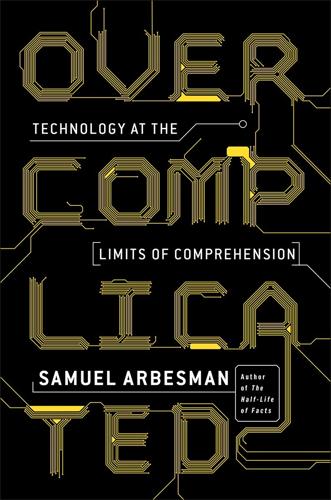
Overcomplicated: Technology at the Limits of Comprehension
by
Samuel Arbesman
Published 18 Jul 2016
Superintelligence by Nick Bostrom explores the many issues and implications related to the development of superintelligent machines. The Works, The Heights, and The Way to Go by Kate Ascher examine how cities, skyscrapers, and our transportation networks, respectively, actually work. Beautifully rendered and fascinating books. The Second Machine Age by Erik Brynjolfsson and Andrew McAfee examines the rapid technological change we are experiencing and can come to expect, and how it will affect our economy, as well as how to handle this change. The Glass Cage by Nicholas Carr is about the perils of automation and the related technological complexity around us.
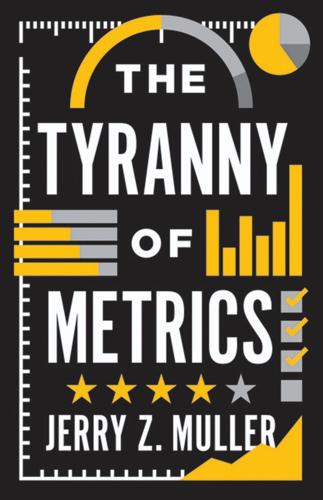
The Tyranny of Metrics
by
Jerry Z. Muller
Published 23 Jan 2018
Barry Gruenberg, “The Happy Worker: An Analysis of Educational and Occupational Differences in Determinants of Job Satisfaction,” American Journal of Sociology 86 (1980), pp. 247–71, esp. pp. 267–68, quoted in Kohn, Punishment by Rewards, p. 131. 3. Erik Brynjolfsson and Andrew McAfee, The Second Machine Age: Work, Progress, and Prosperity in a Time of Brilliant Technologies (New York, 2014). 4. Dan Cable and Freck Vermeulen, “Why CEO Pay Should Be 100% Fixed,” Harvard Business Review (February 23, 2016). 5. Madison Marriage and Aliya Ram, “Two Top Asset Managers Drop Staff Bonuses,” Financial Times, August 22, 2016. 6.
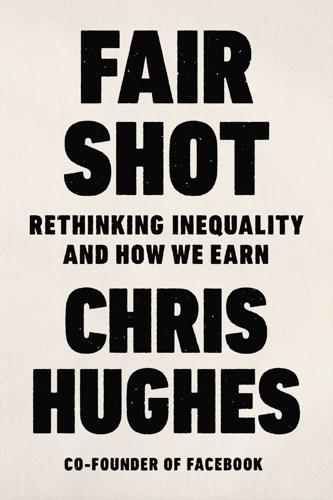
Fair Shot: Rethinking Inequality and How We Earn
by
Chris Hughes
Published 20 Feb 2018
Bridgman, Benjamin, Andrew Dugan, Mikhael Lal, Matthew Osborne, and Shaunda Villones. “Accounting for Household Production in the National Accounts, 1965–2010.” Bureau of Economic Analysis, May 2012. https://www.bea.gov/scb/pdf/2012/05%20May/0512_household.pdf. Brynjolfsson, Erik, and Andrew McAfee. The Second Machine Age: Work, Progress, and Prosperity in a Time of Brilliant Technologies. W. W. Norton, 2016. Bureau of Labor Statistics. “Employment Status of the Civilian Population by Race, Sex, and Age.” Economic News Release, November 3, 2017. https://www.bls.gov/news.release/empsit.t02.htm. Cambridge Associates LLC.
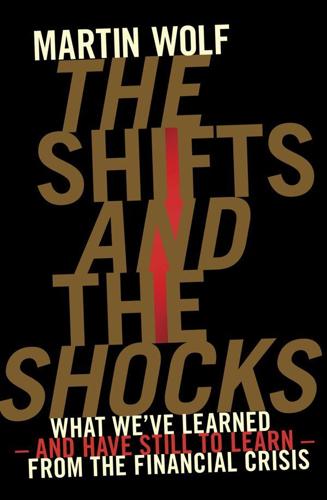
The Shifts and the Shocks: What We've Learned--And Have Still to Learn--From the Financial Crisis
by
Martin Wolf
Published 24 Nov 2015
Faltering Innovation Confronts the Six Headwinds’, National Bureau of Economic Research Working Paper No. 18315, August 2012, www.nber.org; TylerCowen, The Great Stagnation: How America Ate All the Low-Hanging Fruit of Modern History, Got Sick, and Will (Eventually) Feel Better (London: Dutton/Penguin, 2011). 35. Erik Brynjolfsson and Andrew McAfee, The Second Machine Age: Work, Progress and Prosperity in a Time of Brilliant Technologies (New York and London: W. W. Norton, 2014), and Race Against the Machine: How the Digital Revolution is Accelerating Innovation, Driving Employment and the Economy (Lexington, MA: Digital Frontier Press, 2011). 36. See Mariana Mazzucato, The Entrepreneurial State: Debunking Public vs Private Myths in Risk and Innovation (London: Anthem Press, 2013). 37.
…
Gordon Brown MP, at the Mansion House, London’, 21 June 2006. http://www.ft.com/cms/s/0/00a235ba-015d-11db-af16-0000779e2340.html. Brynjolfsson, Erik and Andrew McAfee. Race Against the Machine: How the Digital Revolution is Accelerating Innovation, Driving Employment and the Economy (Lexington, MA: Digital Frontier Press, 2011). Brynjolfsson, Erik and Andrew McAfee. The Second Machine Age: Work, Progress and Prosperity in a Time of Brilliant Technologies (New York and London: W. W. Norton, 2014). Buffett, Warren. ‘Goodreads’. http://www.goodreads.com/author/quotes/756.Warren_Buffett. Buiter, Willem. ‘The Unfortunate Uselessness of Most State of the Art Academic Macroeconomics’, 3 March 2009. http://blogs.ft.com/maverecon/2009/03/the-unfortunate-uselessness-of-most-state-of-the-art-academic-monetary-economics.

Good Economics for Hard Times: Better Answers to Our Biggest Problems
by
Abhijit V. Banerjee
and
Esther Duflo
Published 12 Nov 2019
ONE FOR THE LUDDITES An increasing number of economists (and of those who comment on economics) worry that new technologies, such as AI, robots, and automation more generally, will destroy more jobs than they create, making many workers obsolete and causing the share of GDP that goes to pay wages to dwindle. In fact, these days growth optimists and labor pessimists are often the same people; they both imagine future growth will be primarily driven by the replacement of human workers by robots. In their book The Second Machine Age, our MIT colleagues Erik Brynjolfsson and Andrew McAfee offer a bleak view of the impact of digitization on the future of employment in the United States.3 Digitization, they suspect, will make workers with “ordinary” skills increasingly redundant. As tasks from car painting to spreadsheet manipulation are done by computers or robots, highly educated workers who are adaptable and can program and install the robots will become more and more valuable, but other workers who can be replaced will find themselves without jobs unless they accept extremely low salaries.
…
Experimental Evidence from Urban India,” working paper, 2010. CHAPTER 7. PLAYER PIANO 1 Kurt Vonnegut, Player Piano (New York: Charles Scribner’s Sons, 1952). 2 Kurt Vonnegut, God Bless You, Mr. Rosewater (New York: Holt, Rinehart and Winston, 1965). 3 Erik Brynjolfsson and Andrew McAfee, The Second Machine Age (New York: W. W. Norton & Company, 2014). 4 David H. Autor, “Why Are There Still So Many Jobs? The History and Future of Workplace Automation,” Journal of Economic Perspectives 29, no. 3 (2015): 3–30. 5 Ellen Fort, “Robots Are Making $6 Burgers in San Francisco,” Eater San Francisco, June, 21, 2018. 6 Michael Chui, James Manyika, and Mehdi Miremadi, “How Many of Your Daily Tasks Could Be Automated?
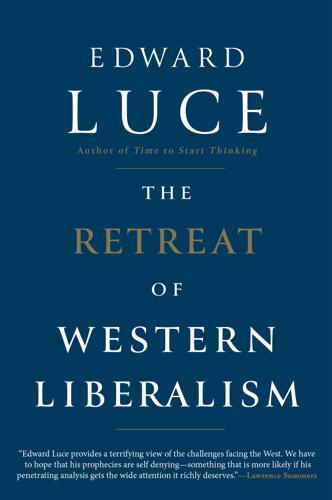
The Retreat of Western Liberalism
by
Edward Luce
Published 20 Apr 2017
If we had maintained pre-1970 productivity growth, it would have been $97,300.63 We are already well into a slowdown that, in Gordon’s view, is likely to slow further. This is where his thesis becomes controversial. According to the optimists, such as Erik Brynjolfsson and Andrew McAfee, the future is accelerating and will generally bring happy results. Their book, The Second Machine Age, argues that intensifying automation will free up labour for more interesting pursuits – and leisure. Theirs is a vision of abundance. I recently heard a well-known Silicon Valley investor dismiss the doubters as ignoramuses. He pointed to the efflorescence of tech unicorns – private start-ups valued at more than $1 billion – that are working on virtual reality, artificial intelligence, gene-splicing medicine and the like.
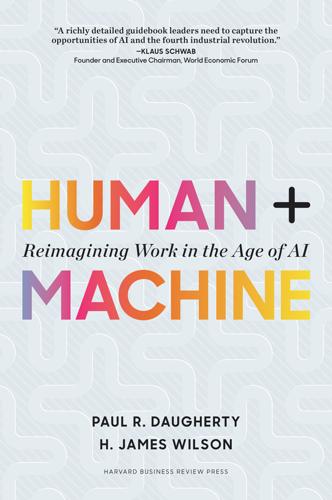
Human + Machine: Reimagining Work in the Age of AI
by
Paul R. Daugherty
and
H. James Wilson
Published 15 Jan 2018
” — GRADY BOOCH, Chief Scientist for Software Engineering, IBM Research; IBM Fellow “Human + Machine shines new light on our burning need to reinvent nearly everything about the way we work. Daugherty and Wilson have hands-on experience leading these changes, giving this book an exceptional level of credibility and insight. Have your whole team read it before your competitors do!” — ERIK BRYNJOLFSSON, Director, MIT Initiative on the Digital Economy; coauthor, The Second Machine Age and Machine, Platform, Crowd “A must-read for business managers who know AI should be a big part of their job but find the topic intimidating and confusing.” — MISSY CUMMINGS, professor, Pratt School of Engineering; Director, Humans and Autonomy Laboratory, Duke University “We are in an era of digital Darwinism, where technologies are evolving faster than businesses can adapt.

The Singularity Is Nearer: When We Merge with AI
by
Ray Kurzweil
Published 25 Jun 2024
Race with the Machines,” TED, February 2013, https://www.ted.com/talks/erik_brynjolfsson_the_key_to_growth_race_with_the_machines; Erik Brynjolfsson et al., Mind vs Machine: Implications for Productivity, Wages and Employment from AI,” The Artificial Intelligence Channel, YouTube video, November 20, 2017, https://www.youtube.com/watch?v=roemLDPy_Ww; Erik Brynjolfsson and Andrew McAfee, The Second Machine Age: Work, Progress, and Prosperity in a Time of Brilliant Technologies (New York: W.W. Norton, 2014). BACK TO NOTE REFERENCE 80 For an accessible, data-backed explainer of deskilling trends since the 1950s, see David Kunst, “Deskilling Among Manufacturing Production Workers,” VoxEU, August 9, 2019, https://voxeu.org/article/deskilling-among-manufacturing-production-workers.
…
BACK TO NOTE REFERENCE 90 “Descriptions of General Purpose Digital Computers,” Computers and Automation 4, no. 6 (June 1965): 76, https://web.archive.org/web/20190723025854/http://www.bitsavers.org/pdf/computersAndAutomation/196506.pdf. BACK TO NOTE REFERENCE 91 Brynjolfsson and McAfee, The Second Machine Age; Tim Worstall, “Trying to Understand Why Marc Andreessen and Larry Summers Disagree Using Facebook,” Forbes, January 15, 2015, https://www.forbes.com/sites/timworstall/2015/01/15/trying-to-understand-why-marc-andreessen-and-larry-summers-disagree-using-facebook/#1ec456d05b4e. BACK TO NOTE REFERENCE 92 For more on GDP and marginal cost, see Tim Callen, “Gross Domestic Product: An Economy’s All,” International Monetary Fund, December 18, 2018, https://www.imf.org/external/pubs/ft/fandd/basics/gdp.htm; Alicia Tuovila, “Marginal Cost of Production,” Investopedia, September 20, 2019, https://www.investopedia.com/terms/m/marginalcostofproduction.asp; Sal Khan, “Marginal Revenue and Marginal Cost,” Khan Academy, accessed April 20, 2023, https://www.khanacademy.org/economics-finance-domain/ap-microeconomics/production-cost-and-the-perfect-competition-model-temporary/short-run-production-costs/v/marginal-revenue-and-marginal-cost; Jeremy Rifkin, The Zero Marginal Cost Society: The Internet of Things, the Collaborative Commons, and the Eclipse of Capitalism (New York: St.

Hit Refresh: The Quest to Rediscover Microsoft's Soul and Imagine a Better Future for Everyone
by
Satya Nadella
,
Greg Shaw
and
Jill Tracie Nichols
Published 25 Sep 2017
New York Times, December 25, 2011. Bostrom, Nick. Superintelligence: Paths, Dangers, Strategies. Oxford: Oxford University Press, 2014. Ford, Martin. Rise of the Robots: Technology and the Threat of a Jobless Future. New York: Basic Books, 2015. Brynjolfsson, Erik, and Andrew McAfee. The Second Machine Age: Work, Progress, and Prosperity in a Time of Brilliant Technologies. New York: W. W. Norton, 2014. McCullough, David. The Wright Brothers. New York: Simon & Schuster, 2015. Krznaric, Roman. Empathy: Why It Matters, and How to Get It. New York: TarcherPerigee, 2014. Schwab, Klaus. The Fourth Industrial Revolution.

Humans Need Not Apply: A Guide to Wealth and Work in the Age of Artificial Intelligence
by
Jerry Kaplan
Published 3 Aug 2015
(New York: Simon and Schuster, 2013). 2. For instance, they may execute a “short squeeze” by bidding up a stock that investors have sold short, forcing them to close out their positions at ever-higher prices to contain their losses. 3. Marshall Brain, Manna (BYG, 2012). 4. Erik Brynjolfsson and Andrew McAfee, The Second Machine Age: Work, Progress, and Prosperity in a Time of Brilliant Technologies (New York: Norton, 2014). 1. TEACHING COMPUTERS TO FISH 1. J. McCarthy, M. L. Minsky, N. Rochester, and C. E. Shannon, A Proposal for the Dartmouth Summer Research Project on Artificial Intelligence, 1955, http://www-formal.stanford.edu/jmc/history/dartmouth/dartmouth.html. 2. http://en.wikipedia.org/wiki/Nathaniel_Rochester_(computer_scientist), last modified March 15, 2014. 3.
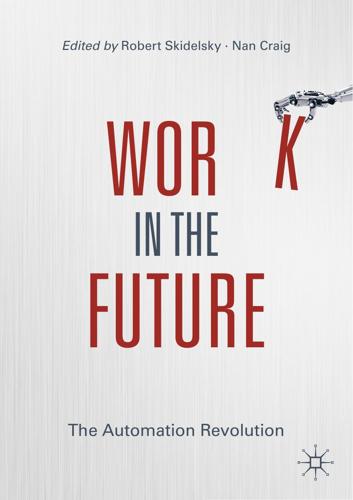
Work in the Future The Automation Revolution-Palgrave MacMillan (2019)
by
Robert Skidelsky Nan Craig
Published 15 Mar 2020
Already, the ‘left behind’ symptoms, and reactions to them, can be seen in increasingly precarious employment, stagnant or even falling wages, and populist protests against both automation and one of its chief agents, globalisation. Even if these distempers are only temporary effects Erik Brynjolfsson and Andrew McAfee, The Second Machine Age: Work Progress and Prosperity in a Time of Brilliant Technologies. 15 2 The Future of Work 21 of the displacement of labour, optimists themselves concede that the transition period may last decades. Thus, the idea that a supply shock like automation will automatically set in motion acceptable compensatory demand or complementary supply responses seems to me to be pure delusion.

Gigged: The End of the Job and the Future of Work
by
Sarah Kessler
Published 11 Jun 2018
The results sat in two bulging canvas bags on his kitchen table. One was filled with manila folders labeled “platform economics” and “future of work.” They were stuffed with white copy paper, clipped together in sections with black clamps. The other was filled with books: David Weil’s book about how technology will impact jobs. A book about the second machine age. I’d chipped in a copy of Janesville, a book that followed a small town near where I’d grown up after the local GM assembly plant shut down, taking thousands of good jobs with it. Dan’s plan was to read the entire foot-and-a-half stack during a four-day solo trip to a cabin, a goal which somehow didn’t strike him at all as unrealistically ambitious.

Money: The True Story of a Made-Up Thing
by
Jacob Goldstein
Published 14 Aug 2020
But it was a bad time to be a skilled artisan whose job could be done by a machine. The Luddites who destroyed machines were not deluded. They didn’t have the right to vote or to form unions, so they pursued their economic self-interest by destroying machines. One historian called it “collective bargaining by riot.” We are living in the middle of a second machine age. It’s computers and software now, not weaving machines. But some of the same things are happening. People talk about the rise of the 1 percent. About how income for ordinary people is stagnant. Part of that is caused by technological change. The traditional economist’s response to this is: these problems are temporary.
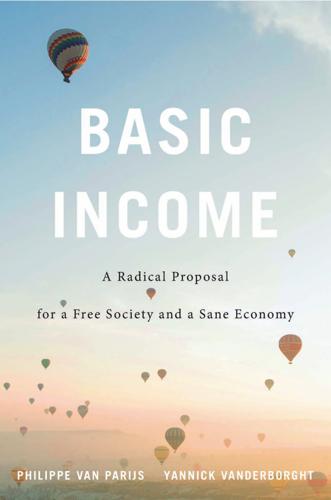
Basic Income: A Radical Proposal for a Free Society and a Sane Economy
by
Philippe van Parijs
and
Yannick Vanderborght
Published 20 Mar 2017
What used to be regarded as the fantasy of a handful of lunatics will then have become an irreversible and self-evident achievement. 247 Notes 1. The Instrument of Freedom 1. Brynjolfsson and McAfee (2014) and Frey and Osborne (2014) provided influential forecasts. Often presented in eloquent and dramatic fashion, the anticipation of this “second machine age” has been playing a major role in motivating the need to take the idea of basic income seriously. See, for example, Santens 2014, Huff 2015, Srnicek and Williams 2015, Mason 2015 (284–286), Reich 2015 (chapters 22–23), Stern 2016 (chapter 3), Bregman 2016 (chapter 4), Walker 2016 (chapter 5), Thornhill and Atkins 2016, Wenger 2016, Reed and Lansley 2016, Reeves 2016, Murray 2016, and so forth. 2.
…
“Marxism and the Transnational Migration of Â�People.” In Brian Barry and Robert E. Goodin, eds., Â�Free Movement: Ethical Issues in the Transnational Migration of People Â� and of Money, 127–144. University Park: Pennsylvania State University Press. Brynjolfsson, Erik, and Andrew McAfee. 2014. The Second Machine Age: Work, ProÂ�gress, and Prosperity in a Time of Brilliant Technologies. New York: W. W. Norton. Büchele, Hervig, and Lieselotte Wohlgenannt. 1985. Grundeinkommen ohne Arbeit. Auf dem Weg zu einer kommunikativen Gesellschaft. Vienna: Europaverlag. Reprinted Vienna: ÖGB Verlag, 2016. Bureau of Â�Labor Statistics. 2015.
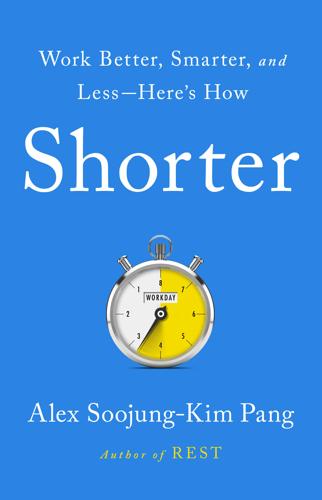
Shorter: Work Better, Smarter, and Less Here's How
by
Alex Soojung-Kim Pang
Published 10 Mar 2020
Automation in radiology and surgery are the subjects of enormous literatures; for recent reviews, see Ahmed Hosny et al., “Artificial Intelligence in Radiology,” Nature Reviews Cancer 18 (August 2018): 500–510, www.ncbi.nlm.nih.gov/pmc/articles/PMC6268174; Brian S. Peters et al., “Review of Emerging Surgical Robotic Technology,” Surgical Endoscopy 32, no. 4 (2018): 1636–1655, https://doi.org/10.1007/s00464-018-6079-2. Likewise, the literature on automation, robotics, and the future of work is vast; Erik Brynjolfsson and Andrew McAfee, The Second Machine Age: Work, Progress, and Prosperity in a Time of Brilliant Technologies (New York: Norton, 2014) and Martin Ford, Rise of the Robots: Technology and the Threat of a Jobless Future (New York: Basic Books, 2015) provide accessible introductions to the subject. The Spread of the Movement. Bob Baumhower is quoted in “Alabama’s Aloha Hospitality Launches 4-Day Workweek,” AL.com, March 28, 2019, www.al.com/press-releases/2018/10/alabamas_aloha_hospitality_lau.html.

Humans as a Service: The Promise and Perils of Work in the Gig Economy
by
Jeremias Prassl
Published 7 May 2018
John Maynard Keynes, ‘Economic possibilities for our grandchildren’, in Essays in Persuasion (Palgrave Macmillan 2010), 325. 5. Carl Frey and Michael Osborne, The Future of Employment: How Susceptible Are Jobs to Computerisation? (Oxford Martin School 2013). 6. Ibid., 38, 42. 7. Eric Brynjolfsson and Andrew McAfee, The Second Machine Age: Progress and Prosperity in a Time of Brilliant Technologies (W. W. Norton & Co. 2014), 10. 8. Cynthia Estlund, ‘What should we do after work? Automation and employ- ment law’ (2017) New York University Public Law and Legal Theory Working Papers No. 578, 21. 9. Ibid., 23. 10. David Autor, ‘Polyani’s paradox and the shape of employment growth’ (2014) NBER Working Paper No. 20485, 129. 11.

Prediction Machines: The Simple Economics of Artificial Intelligence
by
Ajay Agrawal
,
Joshua Gans
and
Avi Goldfarb
Published 16 Apr 2018
Agrawal, Gans, and Goldfarb not only understand its essence but also deliver deep insights into its economic implications and intrinsic trade-offs. If you want to clear the fog of AI hype and see clearly the core of AI’s challenges and opportunities for society, your first step should be to read this book.” — ERIK BRYNJOLFSSON, MIT professor; author, The Second Machine Age and Machine, Platform, Crowd “ Prediction Machines is a must-read for business leaders, policy makers, economists, strategists, and anyone who wants to understand the implications of AI for designing business strategies, decisions, and how AI will have an impact on our society.” — RUSLAN SALAKHUTDINOV, Carnegie Mellon professor; Director of AI Research, Apple “I encounter so many people who feel excited but overwhelmed by AI.
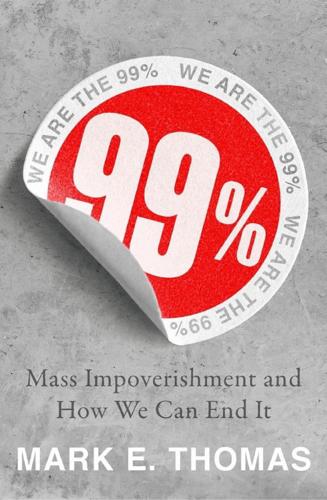
99%: Mass Impoverishment and How We Can End It
by
Mark Thomas
Published 7 Aug 2019
Some recent reports suggest that, nevertheless, there will be no shortage of jobs, at least not by 2030 – the extra wealth created by the robots will generate enough demand to employ everyone.28 This might be true if a) the extra wealth were to be spread amongst the entire population so that they could all contribute to increased demand, and b) the extra demand cannot be met by automated supply. Neither of these assumptions sounds robust, especially when we start looking out as far as 2050. As Erik Brynjolfsson, an economist at the Massachusetts Institute of Technology and co-author of The Second Machine Age, has pointed out: There’s no economic law that says, ‘You will always create enough jobs or the balance will always be even’, it’s possible for a technology to dramatically favour one group and to hurt another group, and the net of that might be that you have fewer jobs.29 It is more plausible that tens or even hundreds of millions of people will be unable to find work – and unless we change the system, they will be workless in a very hostile environment.

The Glass Cage: Automation and Us
by
Nicholas Carr
Published 28 Sep 2014
The emphasis is Aronowitz and DiFazio’s. 23.Jeremy Rifkin, The End of Work: The Decline of the Global Labor Force and the Dawn of the Post-Market Era (New York: Putnam, 1995), xv–xviii. 24.Erik Brynjolfsson and Andrew McAfee, Race against the Machine: How the Digital Revolution Is Accelerating Innovation, Driving Productivity, and Irreversibly Transforming Employment and the Economy (Lexington, Mass.: Digital Frontier Press, 2011). Brynjolfsson and McAfee extended their argument in The Second Machine Age: Work, Progress, and Prosperity in a Time of Brilliant Technologies (New York: W. W. Norton, 2014). 25.“March of the Machines,” 60 Minutes, CBS, January 13, 2013, cbsnews.com/8301-18560_162-57563618/are-robots-hurting-job-growth/. 26.Bernard Condon and Paul Wiseman, “Recession, Tech Kill Middle-Class Jobs,” AP, January 23, 2013, bigstory.ap.org/article/ap-impact-recession-tech-kill-middle-class-jobs. 27.Paul Wiseman and Bernard Condon, “Will Smart Machines Create a World without Work?

Exponential Organizations: Why New Organizations Are Ten Times Better, Faster, and Cheaper Than Yours (And What to Do About It)
by
Salim Ismail
and
Yuri van Geest
Published 17 Oct 2014
What’s Mine Is Yours: The Rise of Collaborative Consumption. HarperBusiness. Brynjolfsson, E., & McAfee, A. (2012). Race Against The Machine: How the Digital Revolution is Accelerating Innovation, Driving Productivity, and Irreversibly Transforming Employment and the Economy. Digital Frontier Press. Brynjolfsson, E., & McAfee, A. (2014). The Second Machine Age: Work, Progress, and Prosperity in a Time of Brilliant Technologies. W. W. Norton & Company. Catmull, E., & Wallace, A. (2014). Creativity, Inc.: Overcoming the Unseen Forces That Stand in the Way of True Inspiration. Random House. Christakis, N. A., & Fowler, J. H. (2009). Connected: The Surprising Power of Our Social Networks and How They Shape Our Lives.

The Internet Is Not the Answer
by
Andrew Keen
Published 5 Jan 2015
The Chapman University geographer Joel Kotkin has broken down what he calls this “new feudalism” into different classes, including “oligarch” billionaires like Thiel and Uber’s Travis Kalanick, the “clerisy” of media commentators like Kevin Kelly, the “new serfs” of the working poor and the unemployed, and the “yeomanry” of the old “private sector middle class,” the professionals and skilled workers in towns like Rochester who are victims of the new winner-take-all networked economy.81 The respected MIT economists Erik Brynjolfsson and Andrew McAfee, who are cautiously optimistic about what they call “the brilliant technologies” of “the Second Machine Age,” acknowledge that our networked society is creating a world of “stars and superstars” in a “winner-take-all” economy. It’s the network effect, Brynjolfsson and McAfee admit, reflecting the arguments of Frank and Cook—a consequence, they say, of the “vast improvements in telecommunications” and the “digitalization of more and more information, goods and services.”
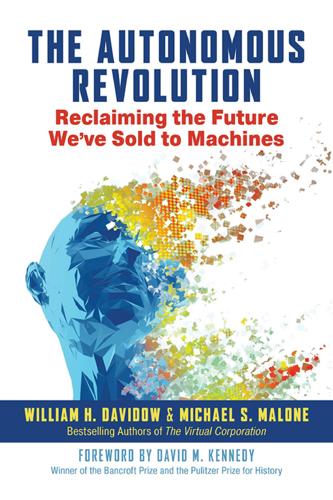
The Autonomous Revolution: Reclaiming the Future We’ve Sold to Machines
by
William Davidow
and
Michael Malone
Published 18 Feb 2020
“Economic News Release,” Bureau of Labor Statistics, August 2, 2019, https://www.bls.gov/news.release/empsit.t17.htm. 43. “Fifty Years of Federal Deficits as Pct GDP,” U.S. Government Debt, https://www.usgovernmentdebt.us/spending_chart_2010_2020USp_19s2li011lcn_G0f_Fifty_Years_Of_Federal_Deficits_As_Pct_GDP-view (accessed August 15, 2019). 44. Erik Brynjolfsson and Andrew McAfee, The Second Machine Age (New York: W. W. Norton, 2014), 221. 45. Bill Snyder, “You’ll Never Get Google Fiber—But You Don’t Need It Anyway,” InfoWorld, December 6, 2012, https://www.infoworld.com/article/2616265/you-ll-never-get-google-fiber----but-you-don-t-need-it-anyway.html. 46. “Hyperloop,” Wikipedia, https://en.wikipedia.org/wiki/Hyperloop. 47.
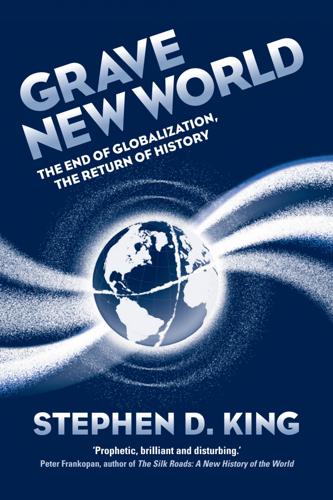
Grave New World: The End of Globalization, the Return of History
by
Stephen D. King
Published 22 May 2017
Making It in America: Social mobility in the immigrant population, National Bureau of Economic Research Working Paper No. 12088, Cambridge, MA, March 2006 Boughton, J. ‘Dirtying White: Why does Benn Steil’s history of Bretton Woods distort the ideas of Harry Dexter White?’, The Nation, 5 June 2013, available at https://www.thenation.com/article/dirtying-white/ Brynjolfsson, E. and A. McAfee. The Second Machine Age: Work, progress, and prosperity in a time of brilliant technologies, Norton, New York, 2014 Buchanan, J.M. ‘An economic theory of clubs’, Economica, 32:125 (1965), pp. 1–14 Bullard, J. ‘Testing long-run monetary neutrality propositions: Lessons from the recent research’, Federal Reserve Bank of St Louis Review, November/December 1999, available at: https://research.stlouisfed.org/publications/review/99/11/9911jb.pdf Bush, G.W.
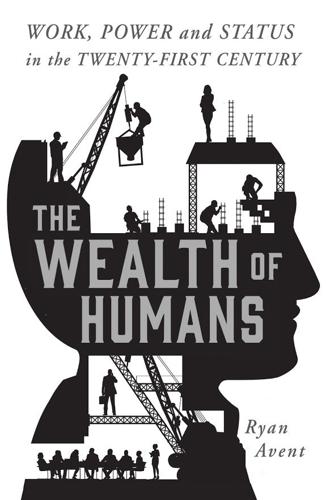
The Wealth of Humans: Work, Power, and Status in the Twenty-First Century
by
Ryan Avent
Published 20 Sep 2016
(Cambridge, MA: Harvard University Press, 2015) Boustan, Leah Platt, Frydman, Carola, and Margo, Robert A., eds., Human Capital in History: The American Record (Chicago, IL: University of Chicago Press, 2014) Brynjolfsson, Erik, and McAfee, Andrew, Race Against the Machine: How the Digital Revolution is Accelerating Innovation, Driving Productivity, and Irreversibly Transforming Employment and the Economy (Digital Frontier Press, 2011) _____, The Second Machine Age: Work, Progress, and Prosperity in a Time of Brilliant Technologies (New York, NY: W. W. Norton & Company, 2014) Cairncross, Frances, The Death of Distance: How the Communications Revolution is Changing Our Lives (Cambridge, MA: Harvard Business School Press, 1997) Christensen, Clayton M., The Innovator’s Dilemma: When New Technologies Cause Great Firms to Fail (Cambridge, MA: Harvard Business Review Press, 1997) Cowen, Tyler, Average is Over: Powering America Beyond the Age of the Great Stagnation (New York, NY: E.

Rethinking the Economics of Land and Housing
by
Josh Ryan-Collins
,
Toby Lloyd
and
Laurie Macfarlane
Published 28 Feb 2017
Liberty Street Economics. 24 February. http://libertystreeteconomics.newyorkfed.org/2016/02/the-graying-of-american-debt.html#.V_AHIoWmqU0. Bryden, John, and Charles Geisler. 2007. ‘Community-Based Land Reform: Lessons from Scotland’. Land Use Policy 24 (1): 24–34. Brynjolfsson, Erik, and Andrew McAfee. 2014. The Second Machine Age: Work, Progress, and Prosperity in a Time of Brilliant Technologies. New York: W. W. Norton. BSA (Building Societies Association). 2015. ‘The History of Building Societies (BSA Factsheet)’. https://www.bsa.org.uk/information/consumer-factsheets/general/the-history-of-building-societies. Buiter, Willem H., and Ebrahim Rahbari. 2015.
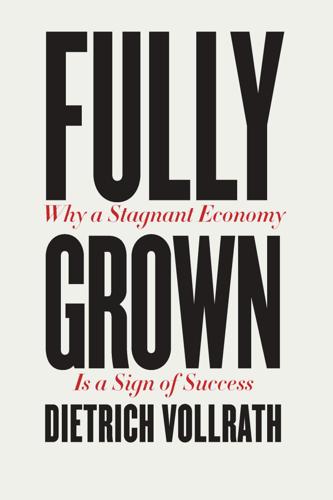
Fully Grown: Why a Stagnant Economy Is a Sign of Success
by
Dietrich Vollrath
Published 6 Jan 2020
Boppart, T. 2014. “Structural Change and the Kaldor Facts in a Growth Model with Relative Price Effects and Non-Gorman Preferences.” Econometrica 82:2167–96. Brynjolfsson, E., and A. McAfee. 2011. Race against the Machine. N.p.: Digital Frontier Press. Brynjolfsson, E., and A. McAfee. 2014. The Second Machine Age: Work, Progress, and Prosperity in a Time of Brilliant Technologies. New York: W. W. Norton and Co. Byrne, D. M., J. G. Fernald, and M. B. Reinsdorf. 2016. “Does the United States Have a Productivity Slowdown or a Measurement Problem?” Brookings Papers on Economic Activity 47 (1): 109–82. Card, D. 1999.

Driverless: Intelligent Cars and the Road Ahead
by
Hod Lipson
and
Melba Kurman
Published 22 Sep 2016
Michael Belfiore, “Three Teams out of the Running at Auto-Bot Race,” Danger Room, November 3, 2007, from Wired.com, archived from the original on November 6, 2007. 5. Daniel K, “What Is Machine Learning?” Stack Overflow, http://stackoverflow.com/questions/2620343/what-is-machine-learning 6. “Kasparov Wins,” TIME Magazine, Monday, February 19, 1996. 7. Erik Brynjolfsson and Andrew McAfee, The Second Machine Age: Work, Progress and Prosperity in a Time of Brilliant Technologies (New York: W.W. Norton & Co., 2014). 8. During the 1980s and 1990s, several pioneering researchers devised self-driving car prototypes that could drive short stretches without a human. In 1977, Tsukuba Mechanical Engineering Lab in Japan developed a computerized driverless car that achieved speeds of up to 20 mph by using machine vision to follow white street markers.
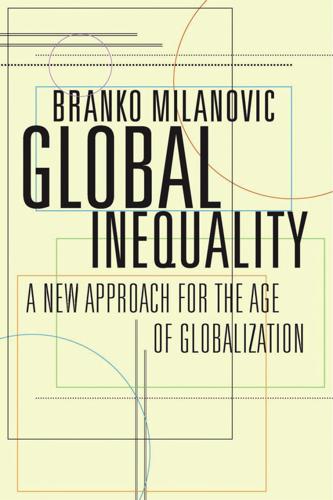
Global Inequality: A New Approach for the Age of Globalization
by
Branko Milanovic
Published 10 Apr 2016
It is for this reason that I think that it is more appropriate to speak of Kuznets cycles, or waves, and to view the current upward swing in advanced countries as the beginning of the second Kuznets wave. Like the first wave, it is the product of technological innovation and change, of the substitution of labor by capital (the “second machine age”), and the transfer of labor from one sector to another. In the first Kuznets wave, the transfer was from agriculture (and thus rural areas) to manufacturing (and thus urban areas); in the second, it is from manufacturing to services. As discussed before, this second wave is also driven by pro-rich changes in economic policies.
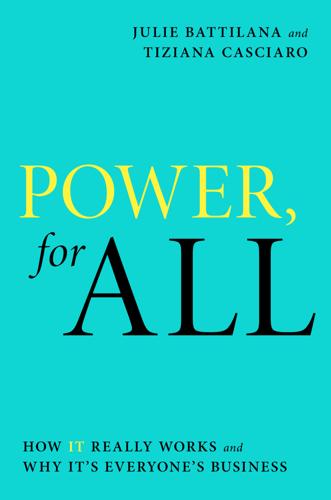
Power, for All: How It Really Works and Why It's Everyone's Business
by
Julie Battilana
and
Tiziana Casciaro
Published 30 Aug 2021
An International Analysis of the Potential Long-Term Impact of Automation (PwC, February 2018). 78 For key works in the sprawling literature on the future of work, see Erik Brynjolfsson and Andrew McAfee, Race Against the Machine (Lexington, MA: Digital Frontier Press, 2011); Erik Brynjolfsson and Andrew McAfee, The Second Machine Age (New York: W. W. Norton, 2014); Kaplan, Humans Need Not Apply (2015); Alec Ross, The Industries of the Future (New York: Simon & Schuster, 2016); and Richard Susskind and Daniel Susskind, The Future of the Professions (Oxford: Oxford University Press, 2017). 79 David Autor, David Mindell, and Elisabeth Reynolds, “The Work of the Future: Shaping Technology and Institutions,” MIT Work of the Future, November 17, 2020, https://workofthefuture.mit.edu/research-post/the-work-of-the-future-shaping-technology-and-institutions/. 80 The acronym CRISPR stands for “clustered regularly interspaced short palindromic repeats,” which refers to a region of DNA that, with various CRISPR-associated proteins, functions like genetic scissors, enabling a cell or scientist to edit DNA or its messenger RNA very precisely.

Shocks, Crises, and False Alarms: How to Assess True Macroeconomic Risk
by
Philipp Carlsson-Szlezak
and
Paul Swartz
Published 8 Jul 2024
See, for instance, Daniel Susskind, A World without Work: Technology, Automation and How We Should Respond (London: Penguin, 2020); David H. Autor, David A. Mindell, and Elisabeth Reynolds, The Work of the Future: Building Better Jobs in an Age of Intelligent Machines (Cambridge, MA: MIT Press, 2022); Erik Brynjolfsson and Andrew McAfee, The Second Machine Age: Work, Progress, and Prosperity in a Time of Brilliant Technologies (New York: W. W. Norton, 2016); David G. Blanchflower, Not Working: Where Have All the Good Jobs Gone? (Princeton, NJ: Princeton University Press, 2021); Martin Ford, Rise of the Robots: Technology and the Threat of a Jobless Future (New York: Basic Books, 2015); and Malcolm Frank, Paul Roehrig, and Ben Pring, What to Do When Machines Do Everything: How to Get Ahead in a World of AI, Algorithms, Bots, and Big Data (New York: John Wiley & Sons, 2017). 3.
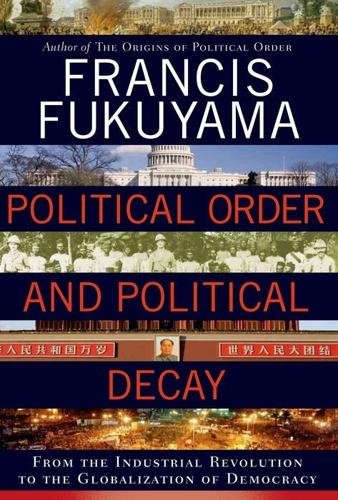
Political Order and Political Decay: From the Industrial Revolution to the Globalization of Democracy
by
Francis Fukuyama
Published 29 Sep 2014
Hacker and Paul Pierson, “Winner-Take-All Politics: Public Policy, Political Organization, and the Precipitous Rise of Top Incomes in the United States,” Politics and Society 38, no. 2 (2010): 152–204; Hacker and Pierson, Winner-Take-All Politics: How Washington Made the Rich Richer—and Turned Its Back on the Middle Class (New York: Simon & Schuster, 2010). 11. See Raghuram G. Rajan, Fault Lines: How Hidden Fractures Still Threaten the World Economy (Princeton: Princeton University Press, 2010). 12. See Erik Brynjolfsson and Andrew McAfee, The Second Machine Age: Work, Progress, and Prosperity in a Time of Brilliant Technologies (New York: Norton, 2014). 13. Robert H. Frank and Philip J. Cook, The Winner-Take-All Society (New York: Free Press, 1995). 14. See Fukuyama, Origins of Political Order, pp. 460–68. 15. I discuss the social and political consequences of life extension in Our Posthuman Future: Consequences of the Biotechnology Revolution (New York: Farrar, Straus and Giroux, 2002), pp. 57–71. 16.
…
New York: Cambridge University Press. ______. 2004. Ethnicity without Groups. Cambridge, MA: Harvard University Press. Brusco, Valeria, Marcelo Nazareno, and Susan Carol Stokes. 2004. “Vote Buying in Argentina.” Latin American Research Review 39(2):66–88. Brynjolfsson, Erik, and Andrew McAfee. 2014. The Second Machine Age: Work, Progress, and Prosperity in a Time of Brilliant Technologies. New York: Norton. Buchanan, James M., and Gordon Tullock. 1962. The Calculus of Consent: Logical Foundations of Constitutional Democracy. Ann Arbor: University of Michigan Press. Burke, Edmund. 2000. On Empire, Liberty, and Reform: Speeches and Letters.
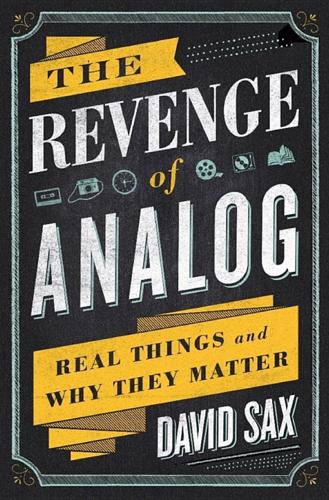
The Revenge of Analog: Real Things and Why They Matter
by
David Sax
Published 8 Nov 2016
Technology Funding—What’s Going On?” Andreessen Horowitz presentation, June 2015. Brynjolfsson, Erik, and Andrew McAfee. Race Against the Machine: How the Digital Revolution Is Accelerating Innovation, Driving Productivity, and Irreversibly Transforming Employment and the Economy. Digital Frontier Press, 2012. ———. The Second Machine Age: Work, Progress, and Prosperity in a Time of Brilliant Technologies. W. W. Norton & Co., 2016. ———. “Why Workers Are Losing the War Against Machines.” Atlantic, October 26, 2011. Brynjolfsson, Erik, Andrew McAfee, and Michael Spence. “New World Order.” Foreign Affairs, July/August 2014. Caramanica, Jon.

The New Harvest: Agricultural Innovation in Africa
by
Calestous Juma
Published 27 May 2017
Kotler, Abundance: The Future is Better Than You Think (New York: Free Press 2012), 34. 2. W. B. Arthur, The Nature of Technology, What It Is and How it Evolves (New York: Free Press, 2009). 3. P. H. Diamandis and S. Kotler, Abundance: The Future is Better Than You Think (New York: Free Press, 2012). 4. E. Brynjolfsson and A. McAfee, The Second Machine Age: Work, Progress, and Prosperity in a Time of Brilliant Technologies (New York; W.W. Norton). 5. J. Schwerin and C. Werker, “Learning Innovation Policy Based on Historical Experience,” Structural Change and Economic Dynamics 14, no. 4 (2004): 385–404. 6. C. Freeman and F. Lou ç ã, As Time Goes By: From the Industrial Revolution to the Information Revolution (Oxford: Oxford University Press, 2001); J.

The Corruption of Capitalism: Why Rentiers Thrive and Work Does Not Pay
by
Guy Standing
Published 13 Jul 2016
Hoynes, ‘Heterogeneity in the impact of economic cycles and the Great Recession: Effects within and across the income distribution’, American Economic Review, Papers and Proceedings 2015, 105 (5): 154–60. 39 L. Michel, J. Bernstein and S. Allegretti, The State of Working America 2006/2007 (New York: Cornell University Press, 2007). 40 E. Brynjolfsson and A. McAfee, The Second Machine Age (New York: W. Norton, 2014). 41 T. Krebs and M. Scheffel, ‘Macroeconomic evaluation of labour market reform in Germany’, IMF Economic Review, 2013. 42 L. Elliott, ‘UK wage growth stifled by tepid investment and low-skilled migration’, The Guardian, 23 September 2015. 43 ‘The tax-free recovery’, The Economist, 20 September 2014, p. 33. 44 A.

The Big Nine: How the Tech Titans and Their Thinking Machines Could Warp Humanity
by
Amy Webb
Published 5 Mar 2019
New York: Cambridge University Press, 2014. Brooks, R. A. “I, Rodney Brooks, Am a Robot.” IEEE Spectrum 45, no. 6 (2008). Brundage, M., et al., “The Malicious Use of Artificial Intelligence: Forecasting, Prevention, and Mitigation.” https://arxiv.org/abs/1802.07228. Brynjolfsson, E., and A. McAfee. The Second Machine Age. New York: Norton, 2014. Bryson, J., M. Diamantis, and T. Grant. “Of, For, and By the People: The Legal Lacuna of Synthetic Persons.” Artificial Intelligence and Law 25, no. 3 (September 2017): 273–291. Bueno de Mesquita, B., and A. Smith. The Dictator’s Handbook: Why Bad Behavior is Almost Always Good Politics.
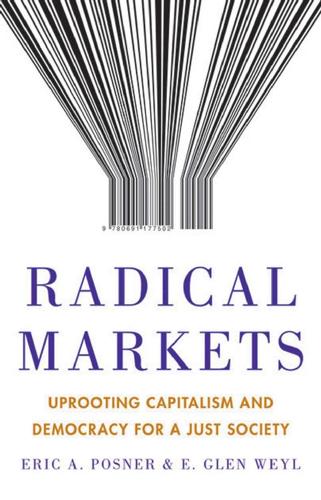
Radical Markets: Uprooting Capitalism and Democracy for a Just Society
by
Eric Posner
and
E. Weyl
Published 14 May 2018
Mark Aguiar, Mark Bils, Kerwin Kofi Charles, & Erik Hurst, Leisure Luxuries and the Labor Supply of Young Men (NBER Working Paper, 2017). Conclusion. Going to the Root 1. The most prominent recent exponents of the techno-optimist within economics have been Erik Brynjolfsson and Andrew McAfee in their 2014 book, The Second Machine Age: Work, Progress and Prosperity in a Time of Brilliant Technologies (W. W. Norton & Company). More broadly, the most prominent techno-optimist is Ray Kurzweil, in a series of books. 2. The most prominent techno-pessimistic perspective is offered by Robert J. Gordon in his 2016 book, The Rise and Fall of American Growth: The U.S.

The Creativity Code: How AI Is Learning to Write, Paint and Think
by
Marcus Du Sautoy
Published 7 Mar 2019
Books Alpaydin, Ethem, Machine Learning, MIT Press, 2016 Barthes, Roland, S/Z, Farrar, Straus and Giroux, 1991 Berger, John, Ways of Seeing, Penguin Books, 1972 Bishop, Christopher, Pattern Recognition and Machine Learning, Springer, 2007 Boden, Margaret, The Creative Mind: Myths and Mechanisms, Weidenfeld and Nicolson, 1990 , AI: Its Nature and Future, OUP, 2016 Bohm, David, On Creativity, Routledge, 1996 Bostrom, Nick, Superintelligence: Paths, Dangers, Strategies, OUP, 2014 Braidotti, Rosi, The Posthuman, Polity Press, 2013 Brandt, Anthony and David Eagleman, The Runaway Species: How Human Creativity Remakes the World, Canongate, 2017 Brynjolfsson, Erik and Andrew McAfee, The Second Machine Age: Work, Progress, and Prosperity in a Time of Brilliant Technologies, Norton, 2014 Cawelti, John, Adventure, Mystery, and Romance: Formula Stories as Art and Popular Culture, University of Chicago Press, 1977 Cheng, Ian, Emissaries Guide to Worlding, Verlag der Buchhandlung Walther Konig, 2018; Serpentine Galleries/Fondazione Sandretto Re Rebaudengo, 2018 Cope, David, Virtual Music: Computer Synthesis of Musical Style, MIT Press, 2001 , Computer Models of Musical Creativity, MIT Press, 2005 Domingos, Pedro, The Master Algorithm: How the Quest for the Ultimate Learning Machine Will Remake Our World, Basic Books, 2015 Dormehl, Luke, The Formula: How Algorithms Solve All Our Problems … and Create More, Penguin Books, 2014 , Thinking Machines: The Inside Story of Artificial Intelligence and Our Race to Build the Future, W.

Reimagining Capitalism in a World on Fire
by
Rebecca Henderson
Published 27 Apr 2020
—Lindsay Levin, founding partner, Leaders’ Quest and Future Stewards “With great clarity and passion, Rebecca Henderson provides a stellar guide to building a purpose-driven organization, the surest path to success in a time of rising temperatures and declining trust.” —Andrew McAfee, author of More from Less and coauthor of The Second Machine Age and Machine, Platform, Crowd “Rebecca Henderson weaves together research and personal experience with clarity and vision, illustrating the potential for business to benefit both itself and society by leading on the most challenging issues of our day. Read, and feel hopeful.” —Judith Samuelson, vice president, the Aspen Institute “Reimagining Capitalism is a breath of fresh air.
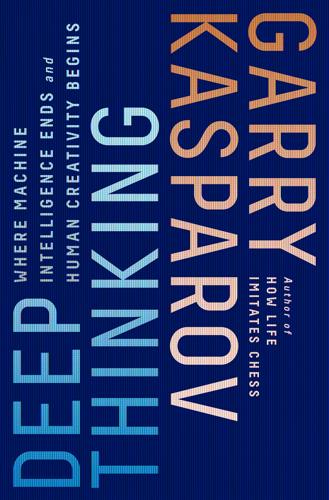
Deep Thinking: Where Machine Intelligence Ends and Human Creativity Begins
by
Garry Kasparov
Published 1 May 2017
Sharkey’s foundation’s advocacy for an international bill of human technological rights would define and constrain the kinds of decisions machines can make about humans and human interaction with robots. This immediately brings to mind Asimov’s famous “Three Laws of Robotics,” but in real life things are far more complex. When I asked MIT’s Andrew McAfee, coauthor of The Second Machine Age and Race Against the Machine, what he thought was the biggest misunderstanding about artificial intelligence today, he was succinct: “The greatest misconception is the hope that the singularity—or the fear that super-intelligence—is right around the corner.” McAfee’s commonsensical and humane investigations into the impact of technology on society most closely match my own outlook.

The Great Reversal: How America Gave Up on Free Markets
by
Thomas Philippon
Published 29 Oct 2019
New York: Basic Books. Brynjolfsson, E., A. Collis, W. E. Diewert, F. Eggers, and K. J. Fox (2019). GDP-B: Accounting for the value of new and free goods in the digital economy. NBER Working Paper No. 25695, National Bureau of Economic Research, Cambridge, MA, March. Brynjolfsson, E., and A. McAfee (2014). The Second Machine Age. New York: W. W. Norton. Buccirossi, P., L. Ciari, T. Duso, G. Spagnolo, and C. Vitale (2013). Competition policy and productivity growth: An empirical assessment. Review of Economics and Statistics 95(4), 1324–1336. Bundestags-Drucksache (2013). Parliamentary paper no. 17/12340. Byrne, D.

A World Without Work: Technology, Automation, and How We Should Respond
by
Daniel Susskind
Published 14 Jan 2020
The Book of Looms. Hanover, NH: University Press of New England, 1979. Brown, Noam, and Tuomas Sandholm. “Superhuman AI for Multiplayer Poker.” Science, 11 July 2019. Brynjolfsson, Erik. “AI and the Economy.” Lecture at the Future of Life Institute, 1 July 2017. Brynjolfsson, Erik, and Andrew McAfee. The Second Machine Age. London: W. W. Norton, 2014. Brynjolfsson, Erik, and Tom Mitchell. “What Can Machine Learning Do? Workforce Implications.” Science 358, no. 6370 (2017). Caines, Colin, Florian Hoffman, and Gueorgui Kambourov. “Complex-Task Biased Technological Change and the Labor Market.” International Finance Division Discussion Papers 1192 (2017).

The Master Algorithm: How the Quest for the Ultimate Learning Machine Will Remake Our World
by
Pedro Domingos
Published 21 Sep 2015
Total Recall, by Gordon Moore and Jim Gemmell (Dutton, 2009), explores the implications of digitally recording everything we do. The Naked Future, by Patrick Tucker (Current, 2014), surveys the use and abuse of data for prediction in our world. Craig Mundie argues for a balanced approach to data collection and use in “Privacy pragmatism” (Foreign Affairs, 2014). The Second Machine Age, by Erik Brynjolfsson and Andrew McAfee (Norton, 2014), discusses how progress in AI will shape the future of work and the economy. “World War R,” by Chris Baraniuk (New Scientist, 2014) reports on the debate surrounding the use of robots in battle. “Transcending complacency on superintelligent machines,” by Stephen Hawking et al.

The Evolution of Everything: How New Ideas Emerge
by
Matt Ridley
Tough Liberal: Albert Shanker and the Battles Over Schools, Unions, Race and Democracy. Columbia University Press. On Swedish schools, Stanfield, James B. 2012. The Profit Motive in Education: Continuing the Revolution. Institute of Economic Affairs. On MOOCs, Brynjolfsson, E. and McAfee, A. 2014. The Second Machine Age. Norton. On Minerva College, Wood, Graeme. The future of college?. The Atlantic September 2014. Sugata Mitra’s TED talks are available at TED.com. His short book is Beyond the Hole in the Wall: Discover the Power of Self-Organized Learning. TED Books 2012. On environmental indoctrination, Montford, A. and Shade, J. 2014.

The Future Is Faster Than You Think: How Converging Technologies Are Transforming Business, Industries, and Our Lives
by
Peter H. Diamandis
and
Steven Kotler
Published 28 Jan 2020
Back in 1995, astronomers in Chile: Public Information Office, Jet Propulsion Laboratory, “Boomerang Nebula Boasts Coolest Spot in the Universe,” June 20, 1997. For the official NASA/JPL release, see: https://www.jpl.nasa.gov/news/releases/97/coldspot.html. IBM’s Deep Blue: Luke Harding and Leonard Barden, “Deep Blue Win a Giant Step for Computerkind,” Guardian, May 12, 2011. Transistor power: Erik Brynjolfsson and Andrew McAfee, The Second Machine Age (W.W. Norton and Co., 2014), p. 49. Moore’s Law has been slowing down: Lieven Eeckhout, “Is Moore’s Law Slowing Down? What Next?, IEEE Micro 37, no. 4: 4–5. “Moore’s Law was not the first”: Kurzweil, “Law of Accelerating Returns.” Apple’s recent A12 Bionic: See: https://www.apple.com/iphone-xs/a12-bionic/.

On the Clock: What Low-Wage Work Did to Me and How It Drives America Insane
by
Emily Guendelsberger
Published 15 Jul 2019
Ciulla The Betrayal of Work: How Low-Wage Jobs Fail 30 Million Americans, Beth Shulman Nomadland: Surviving America in the Twenty-First Century, Jessica Bruder Where Bad Jobs Are Better: Retail Jobs Across Countries and Companies, Francoise Carre and Chris Tilly “We Are All Fast-Food Workers Now”: The Global Uprising Against Poverty Wages, Annelise Orleck On Wanda Stone Age Economics, Marshall Sahlins Behave: The Biology of Humans at Our Best and Worst, Robert Sapolsky Scarcity: Why Having Too Little Means So Much, Sendhil Mullainathan and Eldar Shafir The Panopticon Writings, Jeremy Bentham Discipline and Punish: The Birth of the Prison, Michel Foucault Snakes in Suits: When Psychopaths Go to Work, Paul Babiak and Robert D. Hare Karoshi, National Defense Counsel for Victims of Karoshi On tech, automation, and the future of work The Second Machine Age: Work, Progress, and Prosperity in a Time of Brilliant Technologies, Erik Brynjolfsson and Andrew McAfee The Glass Cage: Automation and Us, Nicholas Carr Automate This: How Algorithms Came to Rule Our World, Christopher Steiner Algorithms to Live By: The Computer Science of Human Decisions, Brian Christian and Tom Griffiths Mindless: Why Smarter Machines Are Making Dumber Humans, Simon Head Rise of the Robots: Technology and the Threat of a Jobless Future, Martin Ford The Robots Are Coming!

Innovation and Its Enemies
by
Calestous Juma
Published 20 Mar 2017
Nominee Clears One Hurdle, but Others Remain,” New York Times, January 12, 2016. Chapter 11 1. Frank W. Geels, Technological Transitions and System Innovations: A Co-evolutionary and Socio-technical Analysis (Cheltenham, UK: Edward Elgar, 2005). 2. Erik Brynjolfsson and Andrew McAfee, The Second Machine Age: Work, Progress, and Prosperity in a Time of Brilliant Technologies (New York: Norton, 2014), 257. 3. Hasan Bakhshi, Carl Benedikt Frey, and Michael Osborne, Creativity vs. Robots: The Creative Economy and the Future of Employment (London: Nesta, 2015), 6. 4. Martin Ford, The Rise of the Robots: Technology and the Threat of a Jobless Future (New York: Basic Books, 2015), 248; James Bessen, Learning by Doing: The Real Connection between Innovation, Wages, and Wealth (New Haven: Yale University Press, 2015). 5.

Blockchain Revolution: How the Technology Behind Bitcoin Is Changing Money, Business, and the World
by
Don Tapscott
and
Alex Tapscott
Published 9 May 2016
—Yochai Benkler, Berkman Professor of Entrepreneurial Legal Studies, Harvard Law School “If you work in business or government, you need to understand the blockchain revolution. No one has written a more thoroughly researched or engaging book on this topic than Tapscott and Tapscott.” —Erik Brynjolfsson, Professor at MIT; coauthor of The Second Machine Age “An indispensable and up-to-the-minute account of how the technology underlying bitcoin could—and should—unleash the true potential of a digital economy for distributed prosperity.” —Douglas Rushkoff, author of Present Shock and Throwing Rocks at the Google Bus “Technological change that used to develop over a generation now hits us in a relative blink of the eye, and no one tells this story better than the Tapscotts.”

Makers and Takers: The Rise of Finance and the Fall of American Business
by
Rana Foroohar
Published 16 May 2016
After the Music Stopped: The Financial Crisis, the Response, and the Work Ahead. New York: Penguin Press, 2013. Blyth, Mark. Austerity: The History of a Dangerous Idea. Oxford: Oxford University Press, 2015. Bogle, John C. The Clash of the Cultures: Investment vs. Speculation. Hoboken, NJ: John Wiley & Sons, 2012. Brynjolfsson, Erik, and Andrew McAfee. The Second Machine Age: Work, Progress, and Prosperity in a Time of Brilliant Technologies. New York: W. W. Norton & Company, 2014. Bughin, Jacques, and James Manyika. Internet Matters: The Rise of the Digital Economy, Essays on Digital Transformation, Vol. 4. N.p.: McKinsey & Company, 2013. Burlingham, Bo. Small Giants: Companies That Choose to Be Great Instead of Big.

The Lonely Century: How Isolation Imperils Our Future
by
Noreena Hertz
Published 13 May 2020
With a rare combination of rigorous research and powerful insights, Noreena Hertz masterfully explains the many facets of our Lonely Century and how we can do better, as individuals and as a society. Highly Recommended!’ Erik Brynjolfsson, Professor at Stanford University and co-author of The Second Machine Age THE LONELY CENTURY Coming Together in a World that’s Pulling Apart Noreena Hertz www.sceptrebooks.co.uk First published in Great Britain in 2020 by Sceptre An Imprint of Hodder & Stoughton An Hachette UK company Copyright © Noreena Hertz 2020 The right of Noreena Hertz to be identified as the Author of the Work has been asserted by her in accordance with the Copyright, Designs and Patents Act 1988.

The Next Shift: The Fall of Industry and the Rise of Health Care in Rust Belt America
by
Gabriel Winant
Published 23 Mar 2021
For the first view, see Moishe Postone, Time, Labor, and Social Domination: A Reinterpretation of Marx’s Critical Theory (Cambridge: Cambridge University Press, 1993); Michael Denning, “Wageless Life,” New Left Review 66 (November–December 2010), 79–97; Kathi Weeks, The Problem with Work: Feminism, Marxism, Antiwork Politics, and Post-Work Imaginaries (Durham, NC: Duke University Press, 2011); Aaron Benanav, “Automation and the Future of Work—1,” New Left Review 119 (September–October 2019), 5–38; Aaron Benanav, “Automation and the Future of Work—2,” New Left Review 120 (November–December 2019), 117–146. For more mainstream approaches, see Erik Brynjolfsson and Andrew McAfee, The Second Machine Age: Work, Progress, and Prosperity in a Time of Brilliant Technologies (New York: Norton, 2014); Richard Baldwin, The Globotics Upheaval: Globalization, Robotics, and the Future of Work (New York: Oxford University Press, 2019). For the second view, see Arne L. Kalleberg, Good Jobs, Bad Jobs: The Rise of Polarized and Precarious Employment Systems in the United States, 1970s to 2000s (New York: Russell Sage Foundation, 2011); Draut, Sleeping Giant; Kim Moody, On New Terrain: How Capital is Reshaping the Battleground of Class War (Chicago: Haymarket, 2017). 12.

Connectography: Mapping the Future of Global Civilization
by
Parag Khanna
Published 18 Apr 2016
W. W. Norton, 2014. Brooks, Rosa. “Failed States, or State as Failure.” University of Chicago Law Review (Fall 2005). Brotton, Jerry. A History of the World in 12 Maps. Viking, 2013. Brown, Donald. Human Universals. McGraw-Hill Humanities, 1991. Brynjolfsson, Erik, and Andrew McAfee. The Second Machine Age: Work, Progress, and Prosperity in a Time of Brilliant Technologies. W. W. Norton, 2014. Buckley, F. H. The Once and Future King: The Rise of Crown Government in America. Encounter Books, 2014. Burrows, Matthew. The Future Declassified: Megatrends That Will Undo the World Unless We Take Action.

More: The 10,000-Year Rise of the World Economy
by
Philip Coggan
Published 6 Feb 2020
Plants & People, Jones & Bartlett, 2012 Mayer, Colin Prosperity: Better Business Makes the Greater Good, Oxford University Press, 2018 Mazzucato, Marianna The Entrepreneurial State: Debunking Public vs Private Sector Myths, Perseus Books, 2015 McAfee, Andrew and Brynjolfsson, Erik Machine, Platform, Crowd: Harnessing Our Digital Future, W.W. Norton, 2017 —— Race Against the Machine, Digital Frontier Press, 2012 —— The Second Machine Age, W.W. Norton, 2016 McCloskey, Deirdre Nansen Bourgeois Equality: How Ideas, Not Capital or Institutions, Enriched the World, University of Chicago Press, 2016 —— “The great enrichment was built on ideas, not capital”, Foundation for Economic Education, https://fee.org McConnell, John J. and Buser, Stephen A.

Evil Geniuses: The Unmaking of America: A Recent History
by
Kurt Andersen
Published 14 Sep 2020
“The Welfare Implications of Rising Price Dispersion.” University of Chicago, unpublished paper, 2009. Brulle, Robert J. “Institutionalizing Delay: Foundation Funding and the Creation of U.S. Climate Change Counter-Movement Organizations.” Climatic Change 122, no. 4 (2014): 681–94. Brynjolfsson, Erik, and Andrew McAfee. The Second Machine Age: Work, Progress, and Prosperity in a Time of Brilliant Technologies. New York: W. W. Norton, 2016. Bursztyn, Leonardo, et al. “Misinformation During a Pandemic.” University of Chicago, Becker Friedman Institute for Economics Working Paper no. 2020-44, April 2020. Campbell, Richard J.

The Upswing: How America Came Together a Century Ago and How We Can Do It Again
by
Robert D. Putnam
Published 12 Oct 2020
The Upswing brings together his vast knowledge, love of data, storytelling ability, and passion. It’s an astonishing work that reminds Americans we are a great people, shows us what we can accomplish when we come together, and makes clear that we need to do so again. Now.” —Andrew McAfee, MIT scientist, author of More from Less, and coauthor of The Second Machine Age “The Upswing is a revelation—tailor-made for this polarized age and destined to be a central reference point for urgent debates and determined activism. Here, one of America’s most renowned public intellectuals gives us a new understanding of our history and a profoundly insightful roadmap for a future we can only create together.

Termites of the State: Why Complexity Leads to Inequality
by
Vito Tanzi
Published 28 Dec 2017
Income Inequality and Evolution of High Incomes (London: The Institute for Fiscal Studies Briefing Note No. 76). Brogan, Hugh, 2006, Alexis de Tocqueville: A Life (New Haven, CT: Yale University Press). Brookhiser, Richard, 2011, James Madison (New York: Basic Books). Brynjolfsson, Erik and Andrew McAfee, 2014, The Second Machine Age: Work Progress, and Prosperity in a Time of Brilliant Technologies (New York and London: W. W. Norton & Company). Buchan, James, 2006, The Authentic Adam Smith: His Life and Ideas (New York and London: W. W. Norton & Company). Buchanan, James M. 1960, “La Scienza delle Finanze” in Fiscal Theory and Political Economy, edited by J.

Power and Progress: Our Thousand-Year Struggle Over Technology and Prosperity
by
Daron Acemoglu
and
Simon Johnson
Published 15 May 2023
May 25. https://ssrn.com/abstract=4114905. Brundage, Vernon Jr. 2017. “Profile of the Labor Force by Educational Attainment.” US Bureau of Labor Statistics, Spotlight on Statistics, www.bls.gov/spotlight/2017/educational-attainment-of-the-labor-force. Brynjolfsson, Erik, and Andrew McAfee. 2014. The Second Machine Age: Work, Progress, and Prosperity in a Time of Brilliant Technologies. New York: W.W. Norton. Buchanan, Angus. 2001. Brunel: The Life and Times of Isambard Kingdom Brunel. London: Bloomsbury. Buchanan, Robertson. 1841. Practical Essays on Millwork and Other Machinery, 3rd ed. London: John Weale.

Future Crimes: Everything Is Connected, Everyone Is Vulnerable and What We Can Do About It
by
Marc Goodman
Published 24 Feb 2015
Osborne, “The Future of Employment,” Oxford Martin, Sept. 17, 2013, http://www.oxfordmartin.ox.ac.uk/. 35 Those working in the transportation field: For an excellent discussion on the future of robots, automation, and work, see Kevin Kelly, “Better Than Human: Why Robots Will—and Must—Take Our Jobs,” Wired, Dec. 24, 2012; Erik Brynjolfsson and Andrew McAfee, The Second Machine Age: Work, Progress, and Prosperity in a Time of Brilliant Technologies (New York: W. W. Norton, 2014). 36 News outlets such as: Francie Diep, “Associated Press Will Use Robots to Write Articles,” Popular Science, July 1, 2014. 37 Many believe that it is the growth: Paul Krugman, “Robots and Robber Barons,” New York Times, Dec. 9, 2012. 38 In mid-2014, a young woman: Lindsey Bever, “Seattle Woman Spots Drone Outside Her 26th-Floor Apartment Window, Feels ‘Violated,’ ” Washington Post, June 25, 2014. 39 “Air is a public”: Rebecca J.

The Great Leveler: Violence and the History of Inequality From the Stone Age to the Twenty-First Century
by
Walter Scheidel
Published 17 Jan 2017
Federal taxation in America: a short history. 2nd ed. Washington, DC: Woodrow Wilson Center Press. Brueckner, Markus, and Lederman, Daniel. 2015. “Effects of income inequality on aggregate output.” World Bank Policy Discussion Paper No. 7317. Brynjolfsson, Erik, and McAfee, Andrew. 2014. The second machine age: work, progress, and prosperity in a time of brilliant technologies. New York: Norton. Buffett, Warren E. 2011. “Stop coddling the super-rich.” New York Times August 15, 2011: A21. Burbank, Jane, and Cooper, Frederick. 2010. Empires in world history: geographies of power, politics of difference.

The Code: Silicon Valley and the Remaking of America
by
Margaret O'Mara
Published 8 Jul 2019
Secondary works that helped inform this part of the story include Daniel Crevier, AI (1993); John Markoff, Machines of Loving Grace (2015); and Thomas Rid, Rise of the Machines (2016). The impact of automation and robotics on work is a deservedly hot topic. For an optimistic take, see Erik Brynjolfsson and Andrew McAfee, The Second Machine Age (2016); for a more sobering one, see Martin Ford, Rise of the Robots (2015). Properly placing gig-economy phenomena in the context of a longer history of corporate restructuring and contingent work (in Silicon Valley and elsewhere) is Louis Hyman, Temp (2018). On the venture capital industry in the Valley and elsewhere, useful sources are John W.

The Story of Work: A New History of Humankind
by
Jan Lucassen
Published 26 Jul 2021
‘An Early and Enduring Advanced Technology Originating 71,000 Years Ago in South Africa’, Nature, 491 (22 November 2012), pp. 590–3. Brown, William & Jonathan Trevor. ‘Payment Systems and the Fall and Rise of Individualism’, Historical Studies in Industrial Relations, 35 (2014), pp. 143–55. Brynjolfsson, Erik & Andrew McAfee. The Second Machine Age: Work, Progress and Prosperity in a Time of Brilliant Technologies (New York: Norton, 2014). Buchanan, Francis. An Account of the District of Purnea in 1809–10 (New Delhi: Usha, 1986a). Buchanan, Francis. An Account of the District of Shahabad in 1812–13 (New Delhi: Usha, 1986b). Bücher, Karl.

The Age of Surveillance Capitalism
by
Shoshana Zuboff
Published 15 Jan 2019
Frey and Osborne, “The Future of Employment”; Martin Krzywdzinski, “Automation, Skill Requirements and Labour-Use Strategies: High-Wage and Low-Wage Approaches to High-Tech Manufacturing in the Automotive Industry,” New Technology, Work and Employment 32, no. 3 (2017): 247–67, https://doi.org/10.1111/ntwe.12100; Frey, “Doing Capitalism”; William Lazonick, “Labor in the Twenty-First Century: The Top 0.1% and the Disappearing Middle-Class” (working paper, Institute for New Economic Thinking, February 2015), https://www.ineteconomics.org/research/research-papers/labor-in-the-twenty-first-century-the-top-0-1-and-the-disappearing-middle-class; Dirk Antonczyk, Thomas DeLeire, and Bernd Fitzenberger, “Polarization and Rising Wage Inequality: Comparing the U.S. and Germany” (IZA Discussion Paper, Institute for the Study of Labor, March 2010), https://ideas.repec.org/p/iza/izadps/dp4842.html; Erik Brynjolfsson and Andrew McAfee, The Second Machine Age: Work, Progress, and Prosperity in a Time of Brilliant Technologies (New York: W. W. Norton, 2016); Daron Acemoglu and David Autor, “What Does Human Capital Do? A Review of Goldin and Katz’s ‘The Race Between Education and Technology,’” Journal of Economic Literature 50, no. 2 (2012): 426–63; Sang Yoon Lee and Yongseok Shin, “Horizontal and Vertical Polarization: Task-Specific Technological Change in a Multi-Sector Economy” (SSRN Scholarly Paper, Rochester, NY: Social Science Research Network, March 1, 2017), https://papers.ssrn.com/abstract=2941261. 15.

Artificial Intelligence: A Modern Approach
by
Stuart Russell
and
Peter Norvig
Published 14 Jul 2019
Norbert Wiener’s prescient book The Human Use of Human Beings (1950) argues for the benefits of automation in freeing people from drudgery while offering more creative work, but also discusses several dangers that we recognize as problems today, particularly the problem of value alignment. The book Disrupting Unemployment (Nordfors et al., 2018) discuss some of the ways that work is changing, opening opportunities for new careers. Erik Brynjolfsson and Andrew McAfee address these themes and more in their books Race Against the Machine (2011) and The Second Machine Age (2014). Ford (2015) describes the challenges of increasing automation, and West (2018) provides recommendations to mitigate the problems, while MIT’s Thomas Malone (2004) shows that many of the same issues were apparent a decade earlier, but at that time were attributed to worldwide communication networks, not to automation. 1For example, the opera Coppélia (1870), the novel Do Androids Dream of Electric Sheep?
…
A tutorial on planning graph-based reachability heuristics. AIMag, Spring, 47–83. Bryce, D., Kambhampati, S., and Smith, D. E. (2006). Planning graph heuristics for belief space search. JAIR, 26, 35–99. Brynjolfsson, E. and McAfee, A. (2011). Race Against the Machine. Digital Frontier Press. Brynjolfsson, E. and McAfee, A. (2014). The Second Machine Age. W. W. Norton. Brynjolfsson, E., Rock, D., and Syverson, C. (2018). Artificial intelligence and the modern productivity paradox: A clash of expectations and statistics. In Agrawal, A., Gans, J., and Goldfarb, A. (Eds.), The Economics of Artificial Intelligence: An Agenda. University of Chicago Press.

Bourgeois Dignity: Why Economics Can't Explain the Modern World
by
Deirdre N. McCloskey
Published 15 Nov 2011
Brown, Vivienne. 1994. Adam Smith’s Discourse: Canonicity, Commerce, and Conscience. London: Routledge. Bruckner, Pascal. 2000 (2010). Perpetual Euphoria: On the Duty to Be Happy. Trans. Steven Rendall. Princeton, NJ: Princeton University Press. Brynjolfsson, Erik, and Andrew McFee. 2014. The Second Machine Age: Work, Progress, and Prosperity in a Time of Brilliant Technologies. New York: Norton. Bryson, Bill. 2003. A Short History of Nearly Everything. New York: Broadway Books. Buber, Martin. 1909 (1923). I and Thou. Trans. Ronald Gregory Smith. Edinburgh: T. & T. Clark. Buchanan, James, and Gordon Tullock. 1962.

The Rise and Fall of American Growth: The U.S. Standard of Living Since the Civil War (The Princeton Economic History of the Western World)
by
Robert J. Gordon
Published 12 Jan 2016
The American Commonwealth, Louis M. Hacker, ed. New York: Capricorn Books, G. P. Putnam’s Sons. Bryne, David M., Oliner, Stephen D., and Sichel, Daniel E. (2013). “Is the Information Technology Revolution Over?” International Productivity Monitor no. 25 (spring): 20–36. Brynjolfsson, Erik, and McAfee, Andrew. (2014). The Second Machine Age: Work, Progress, and Prosperity in a Time of Brilliant Technologies. New York: W. W. Norton & Company Inc, 80. Bryon, Kevin A., Minton, Brian D., and Sarte, Pierre-Daniel G. (2007). “The Evolution of City Population Density in the United States,” Economic Quarterly 93, no. 4 (fall): 341–60.